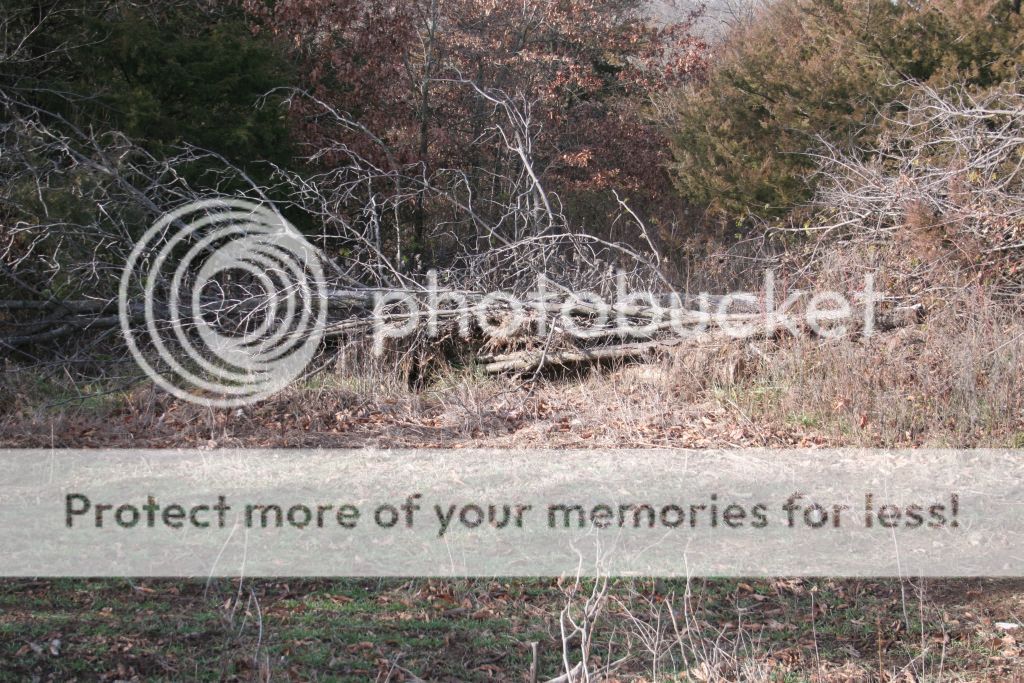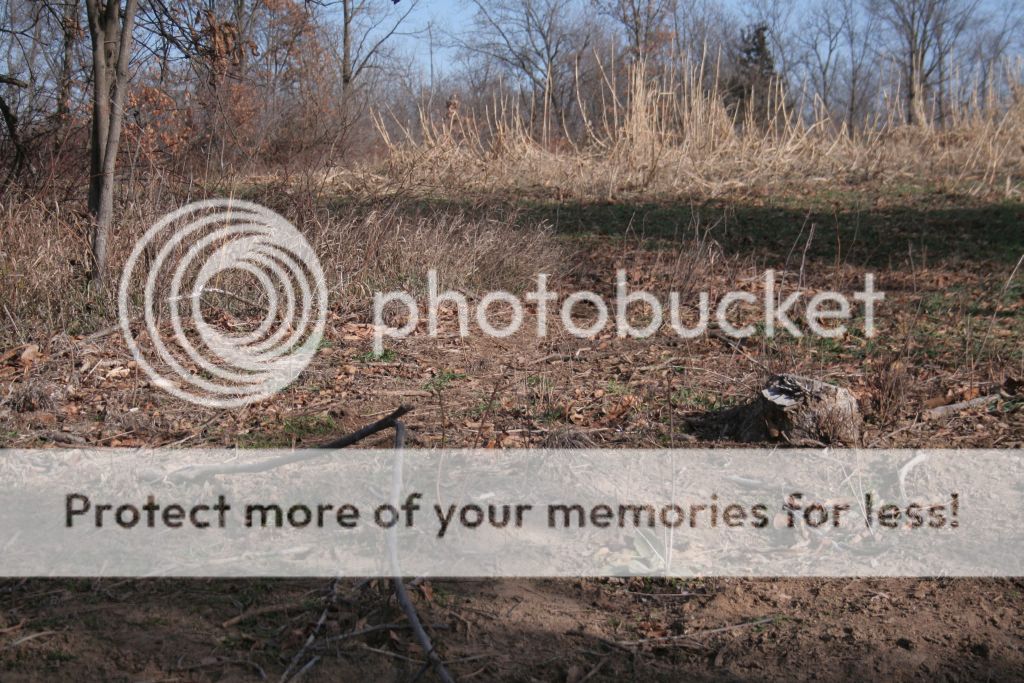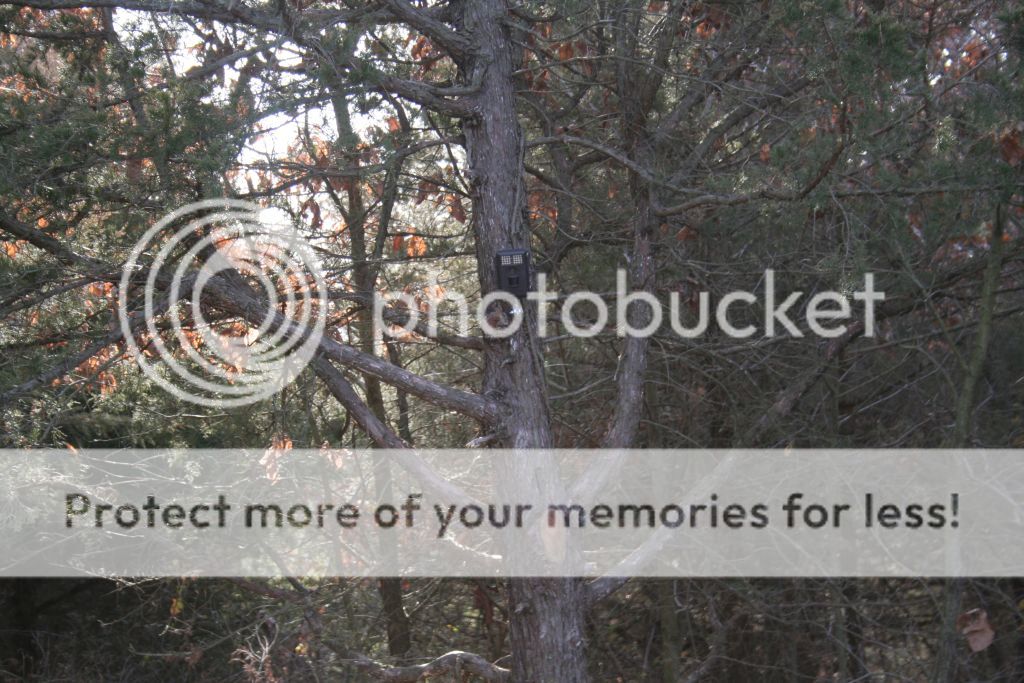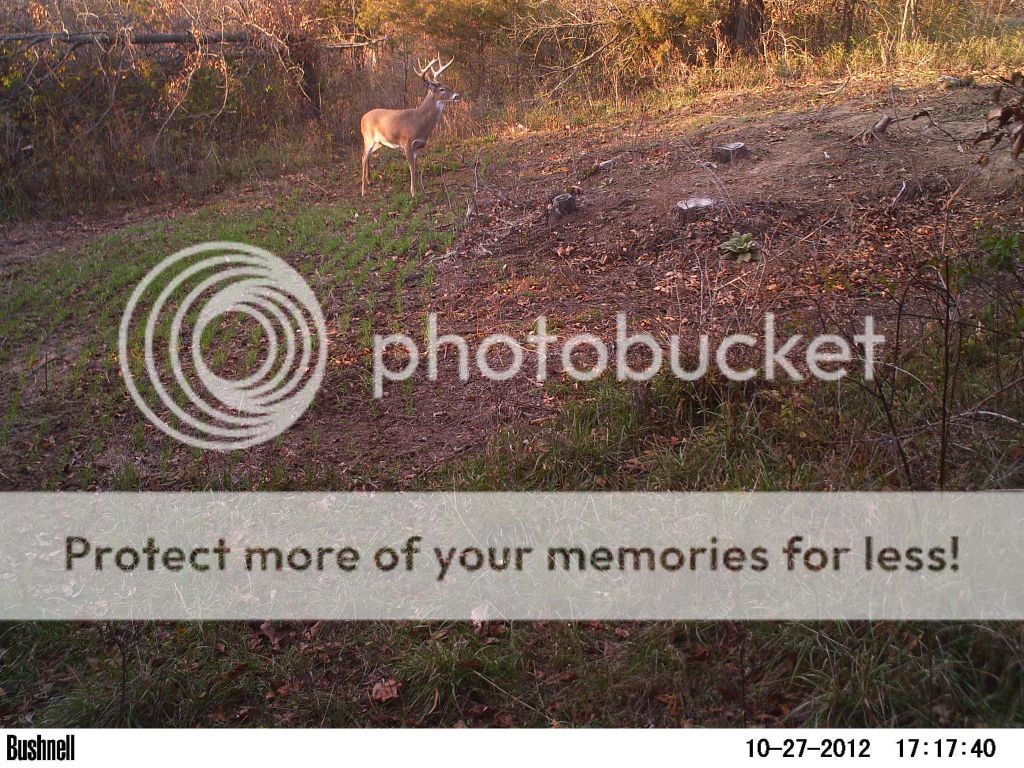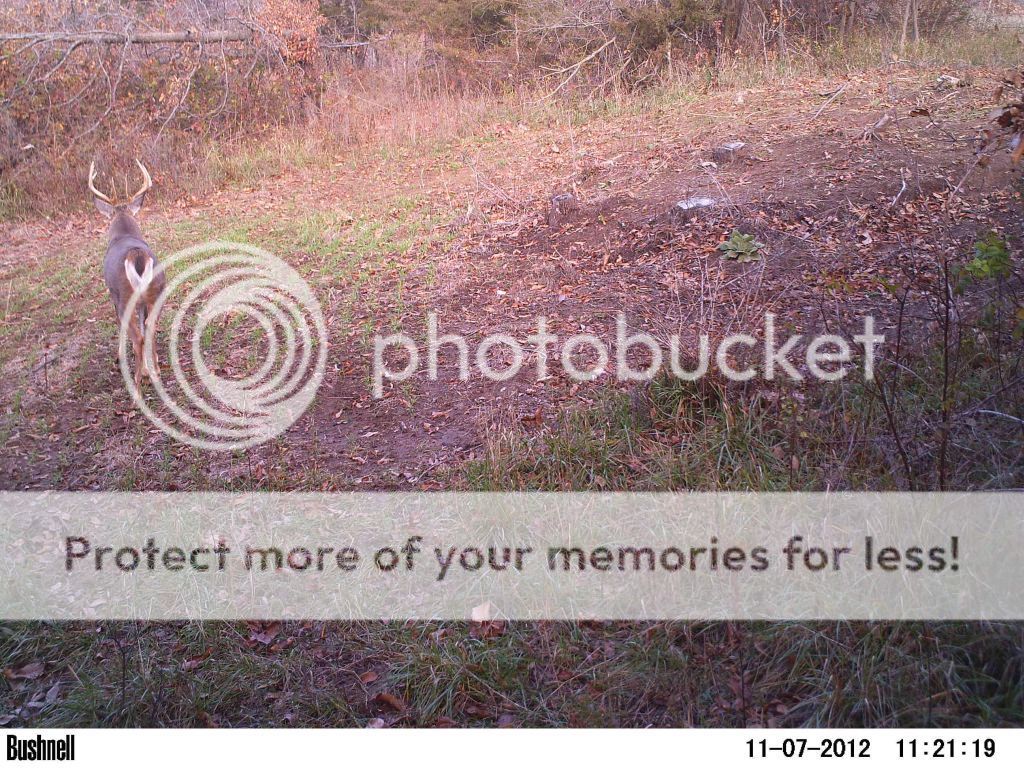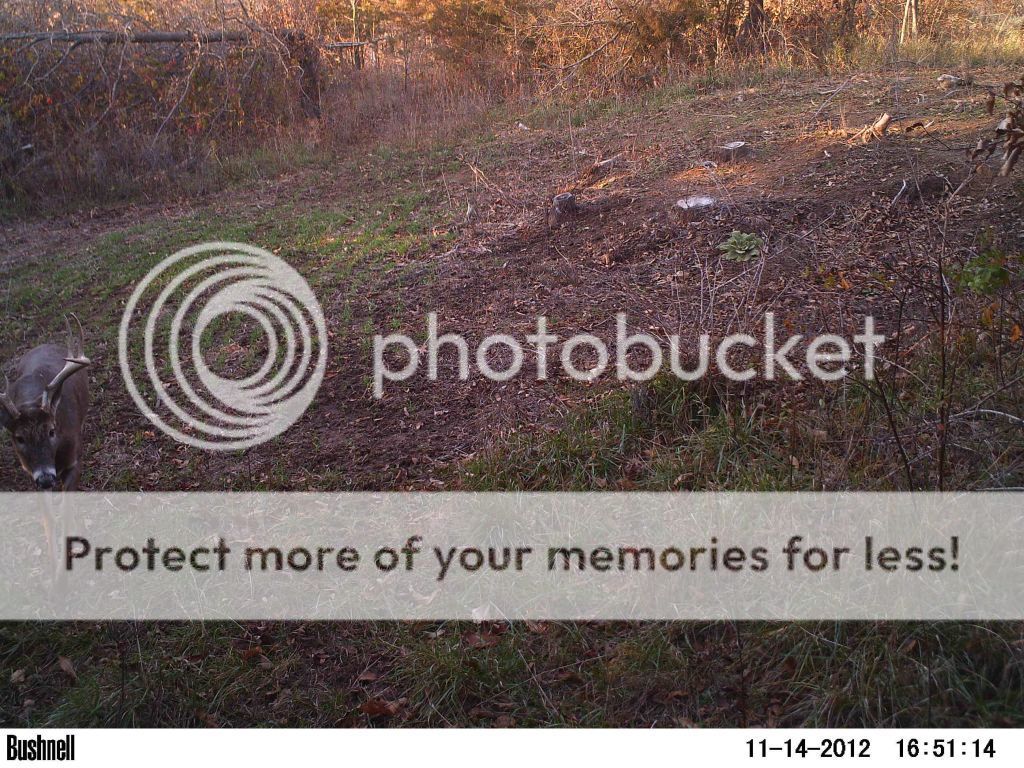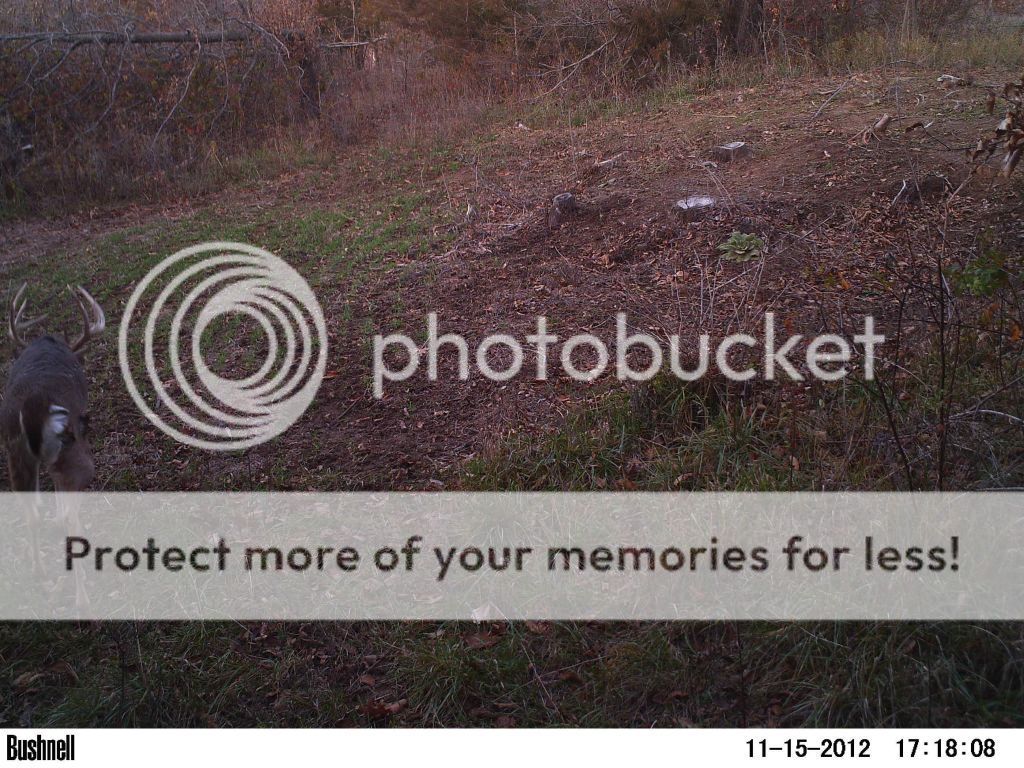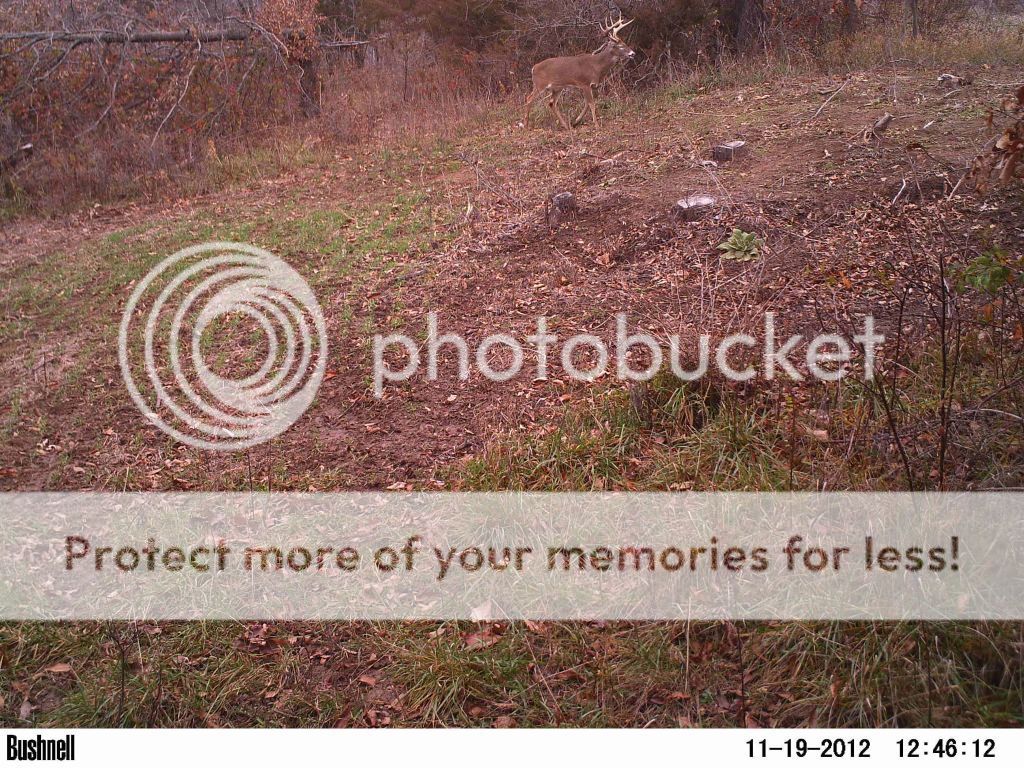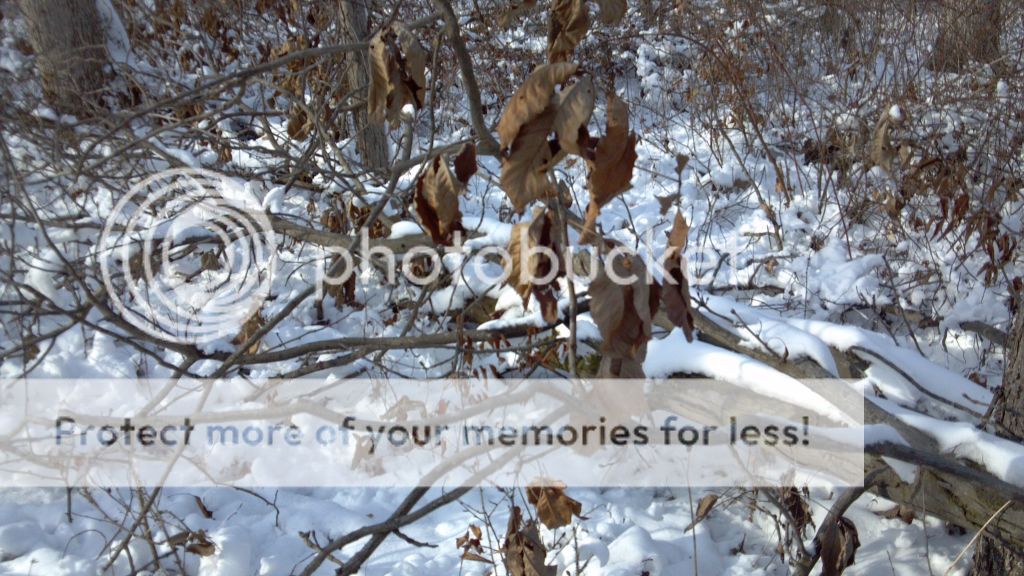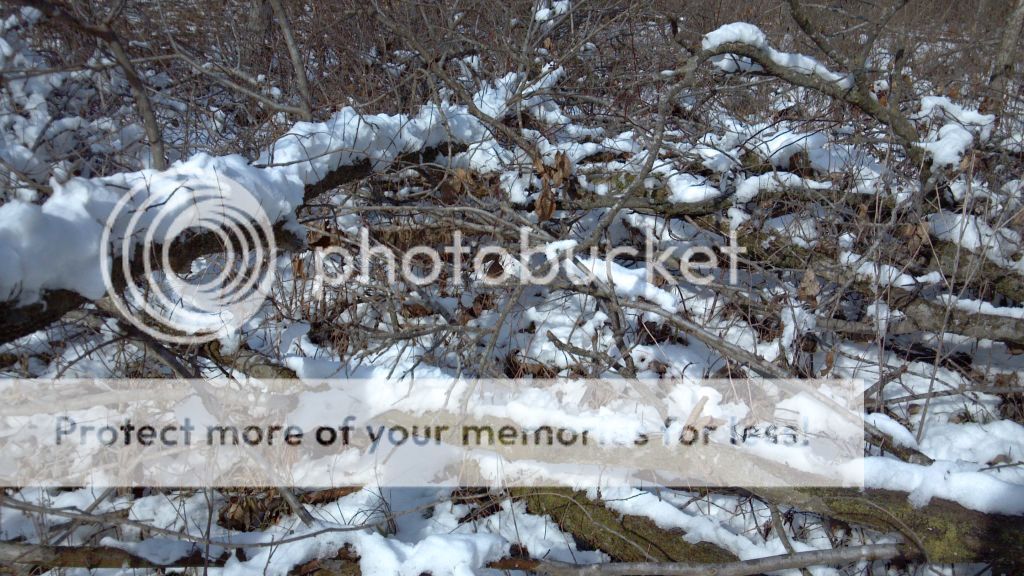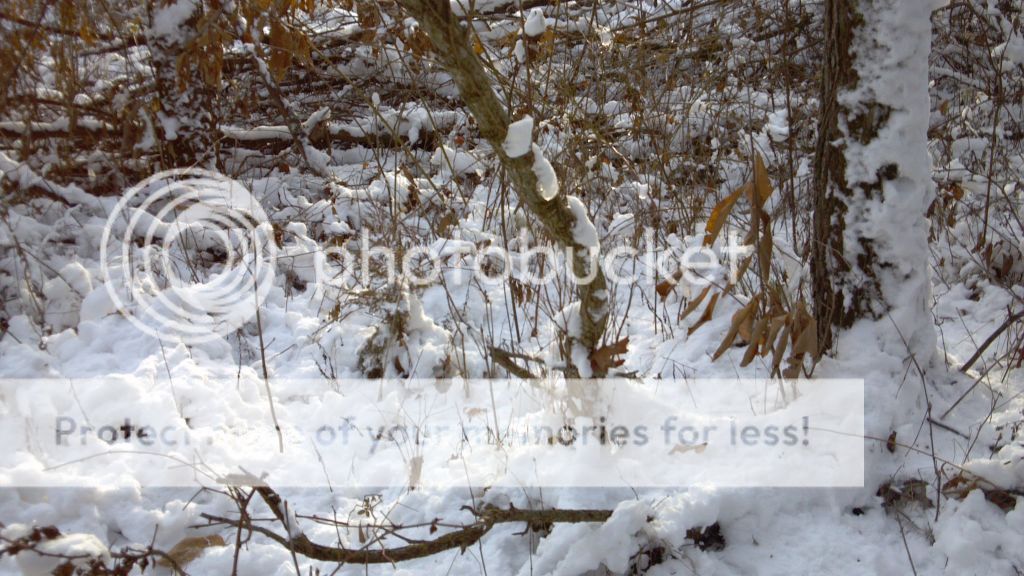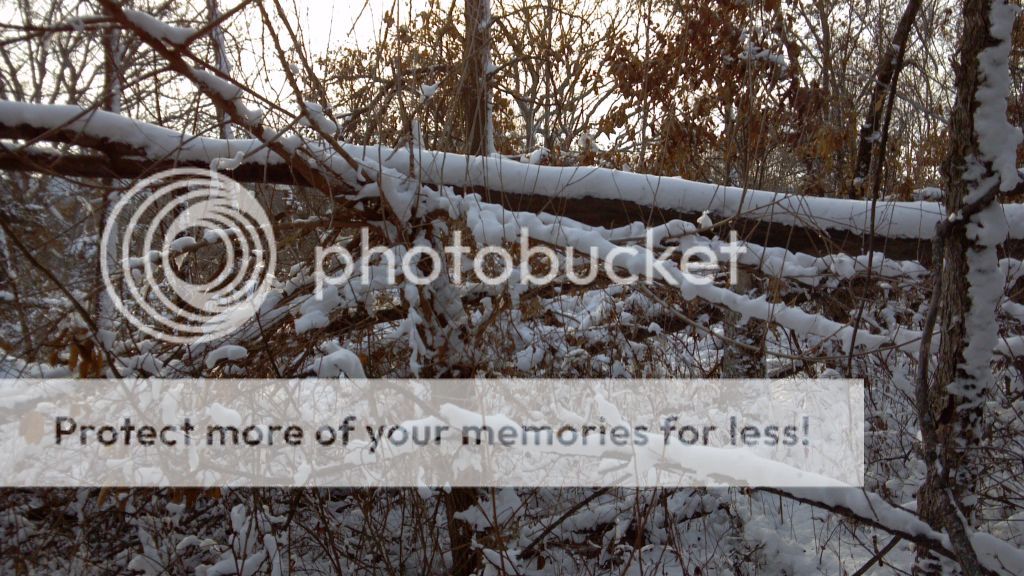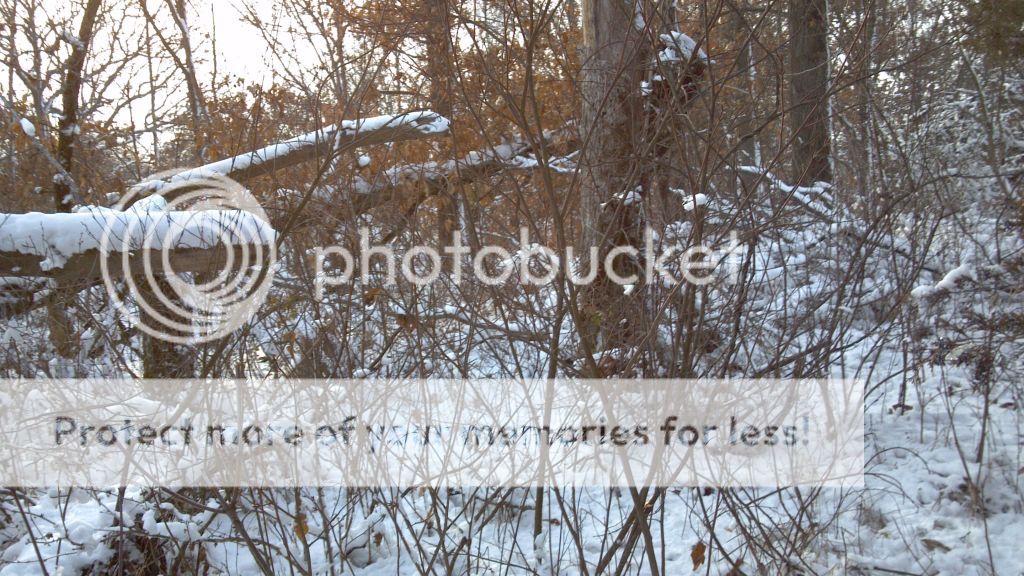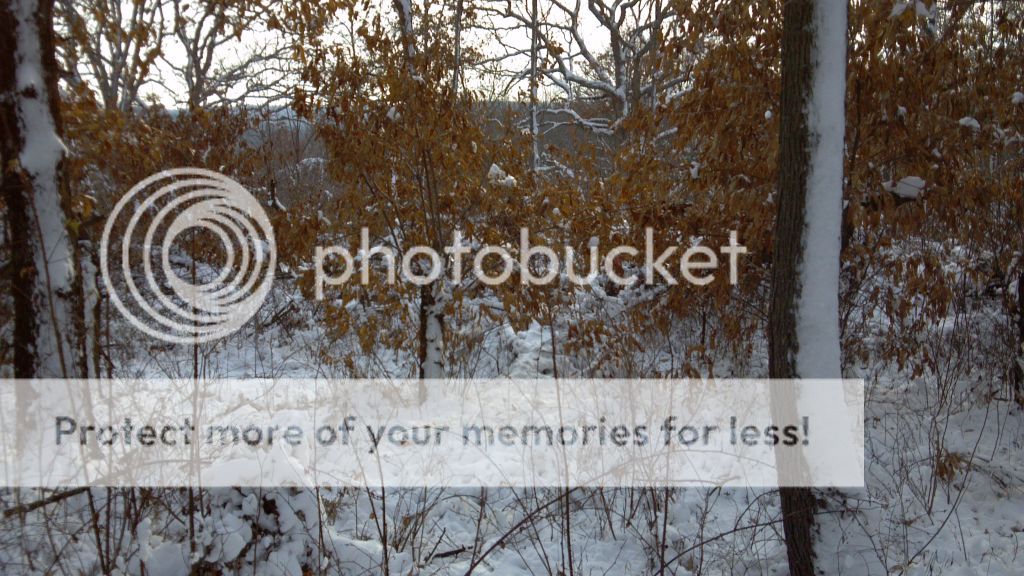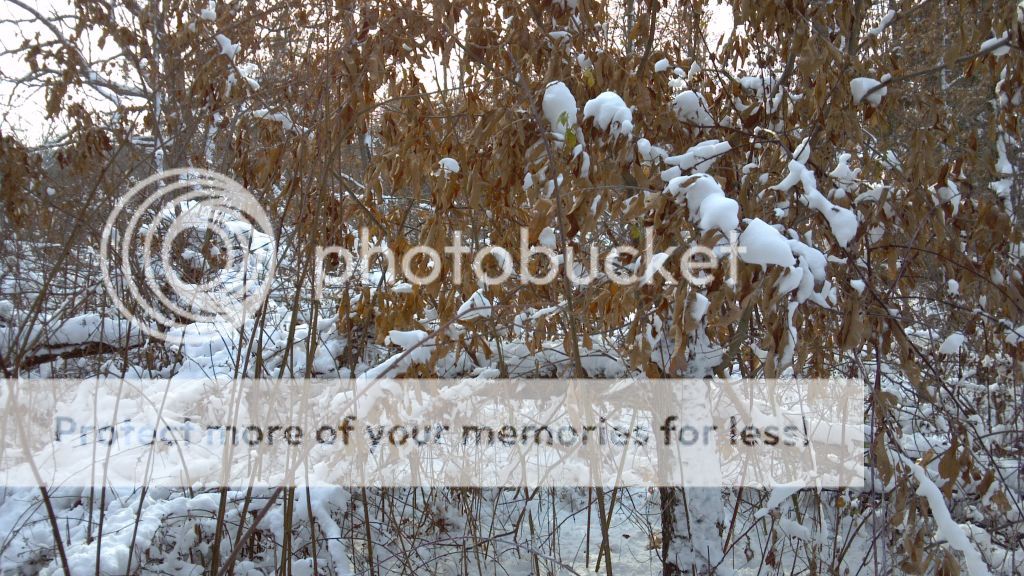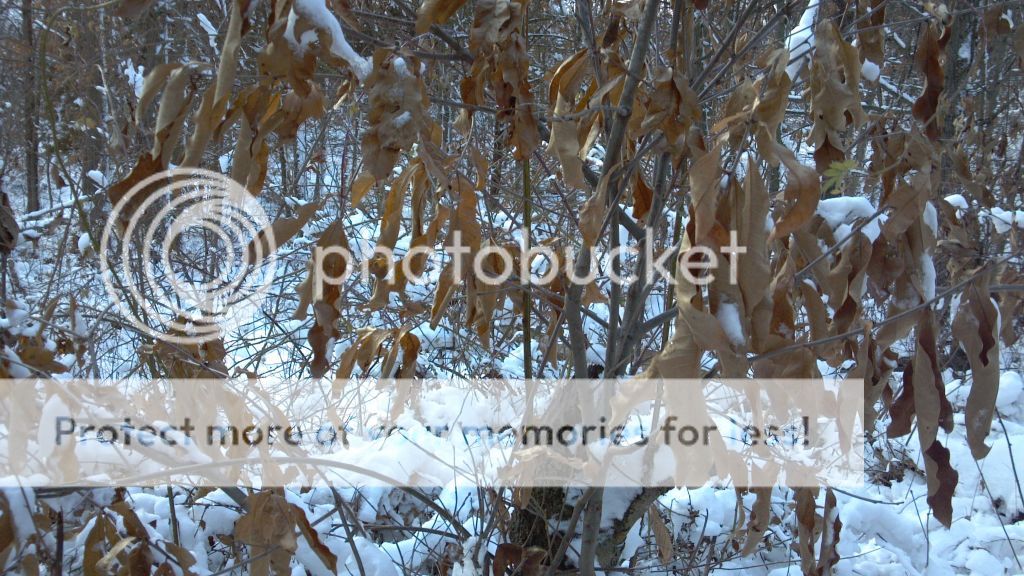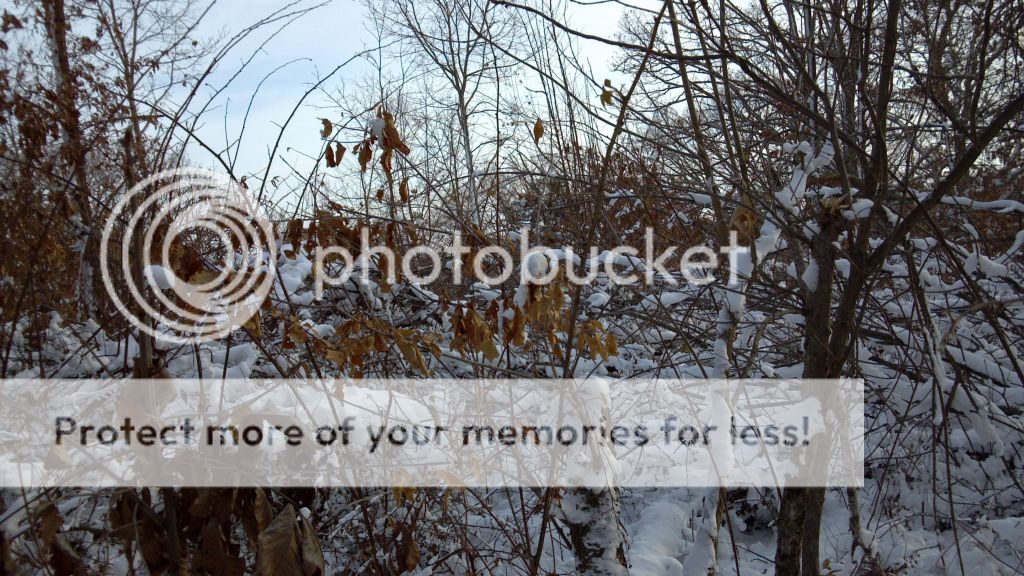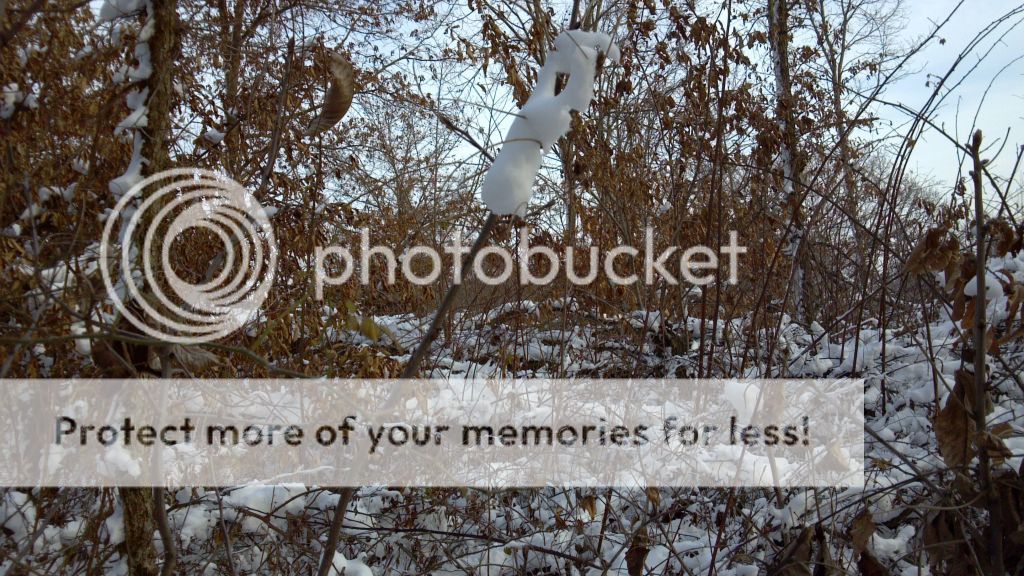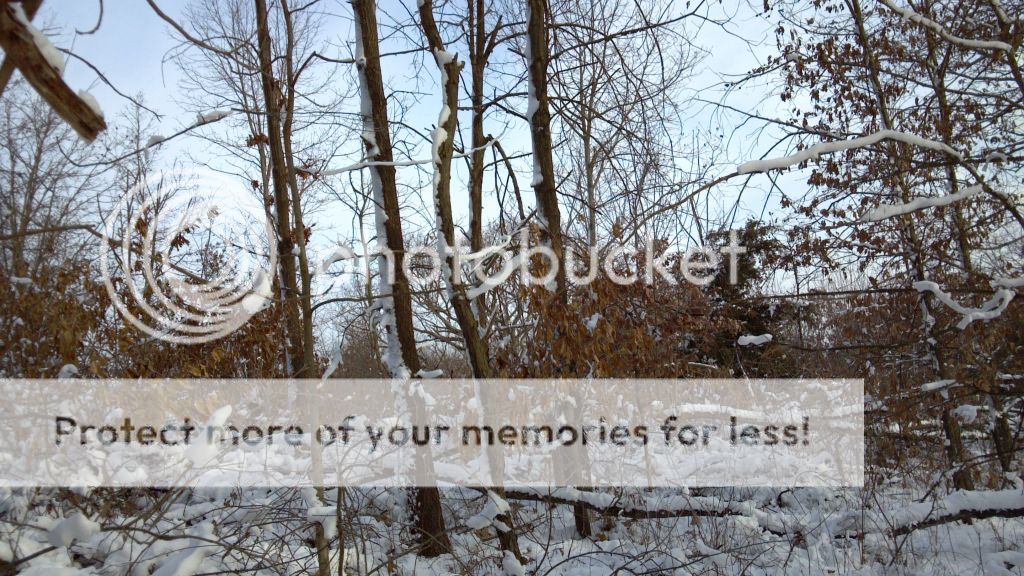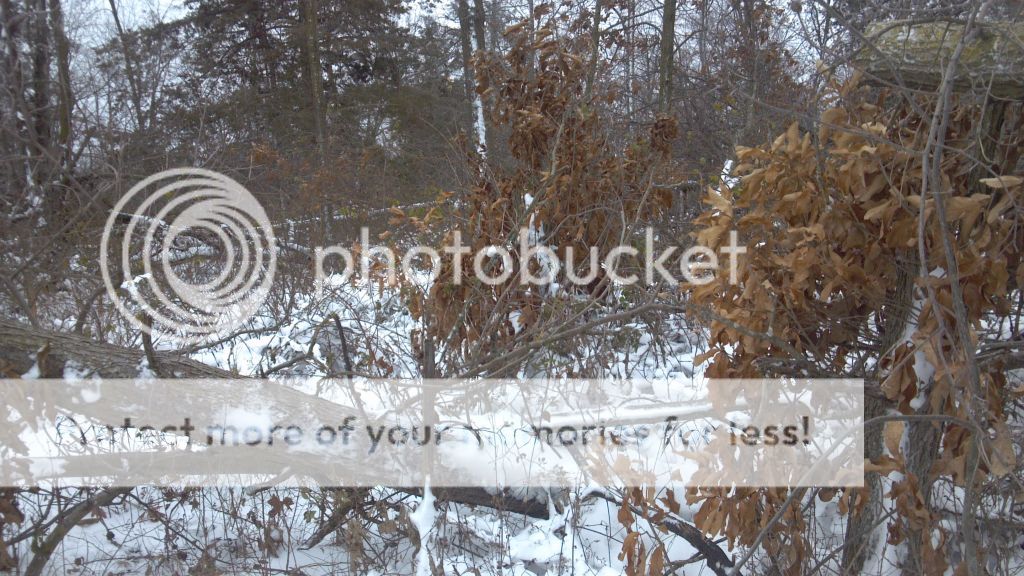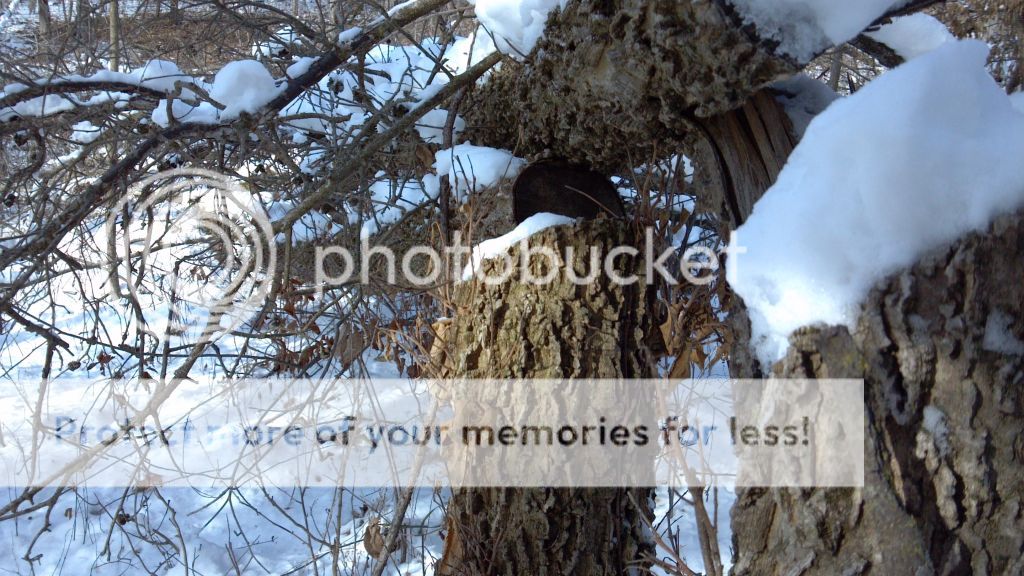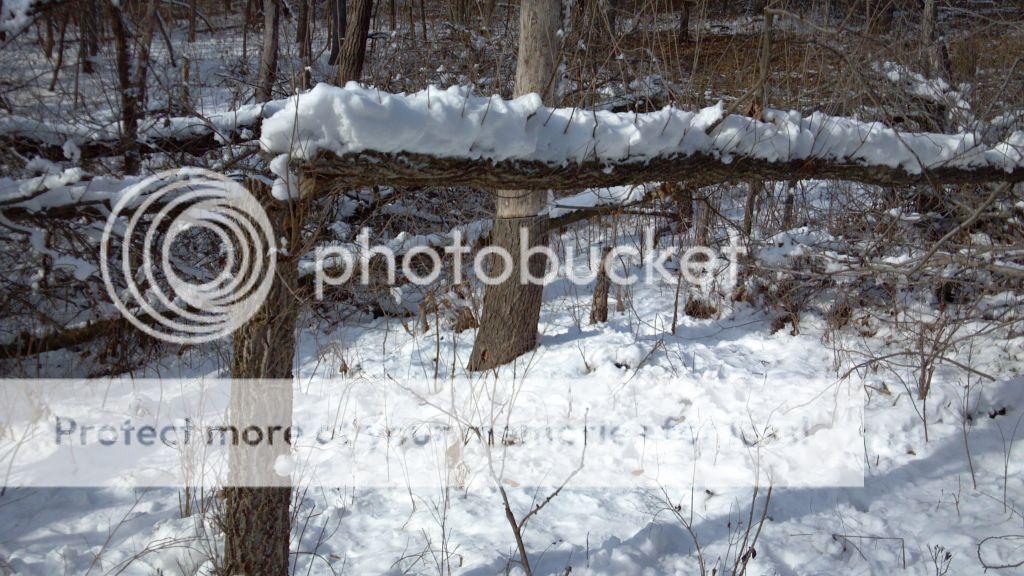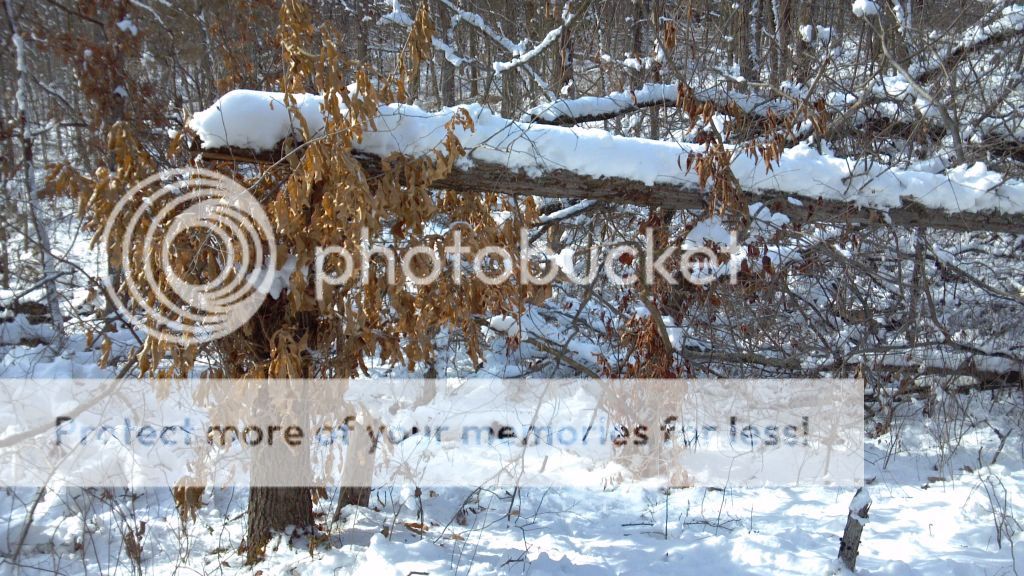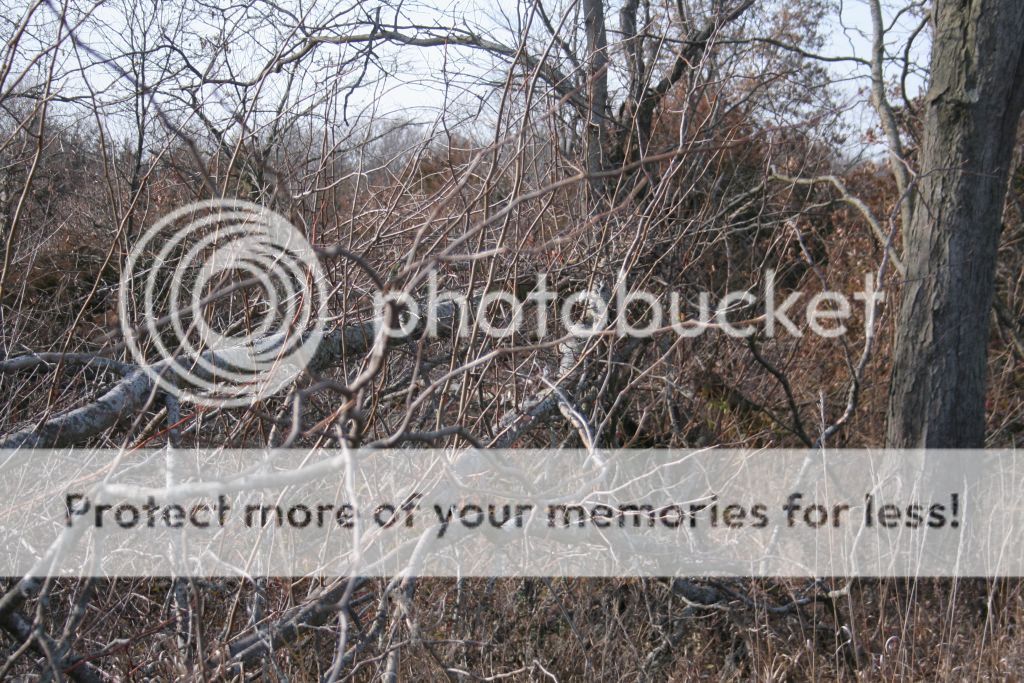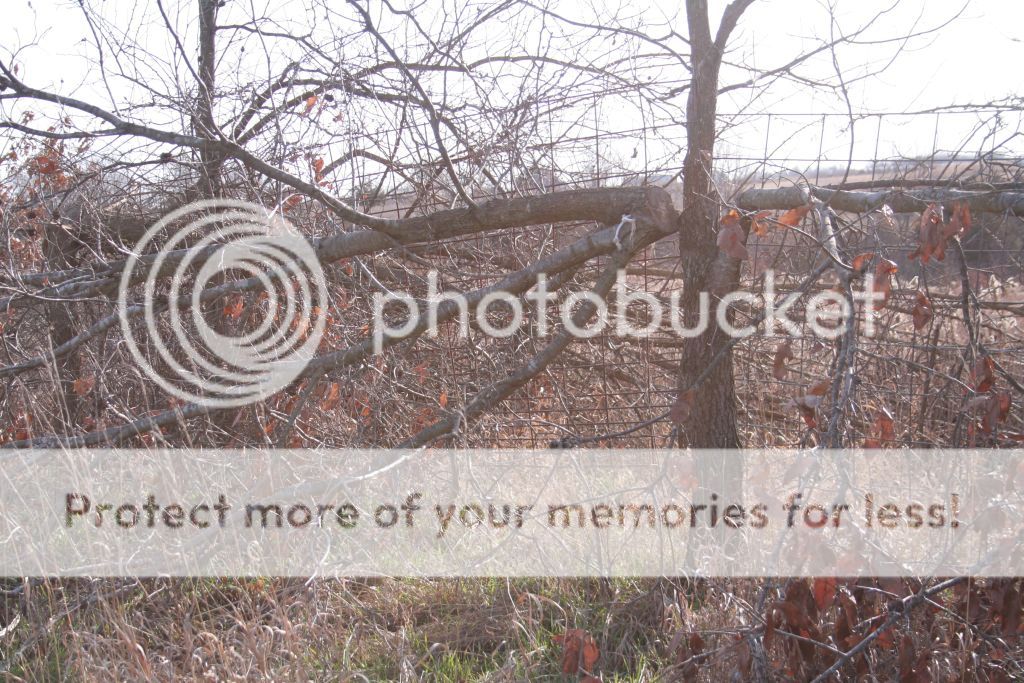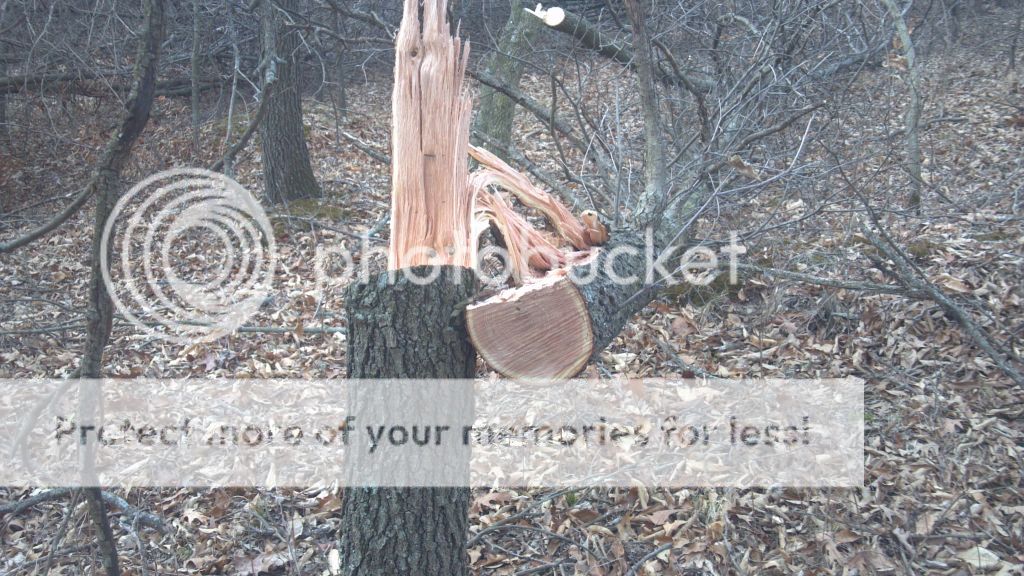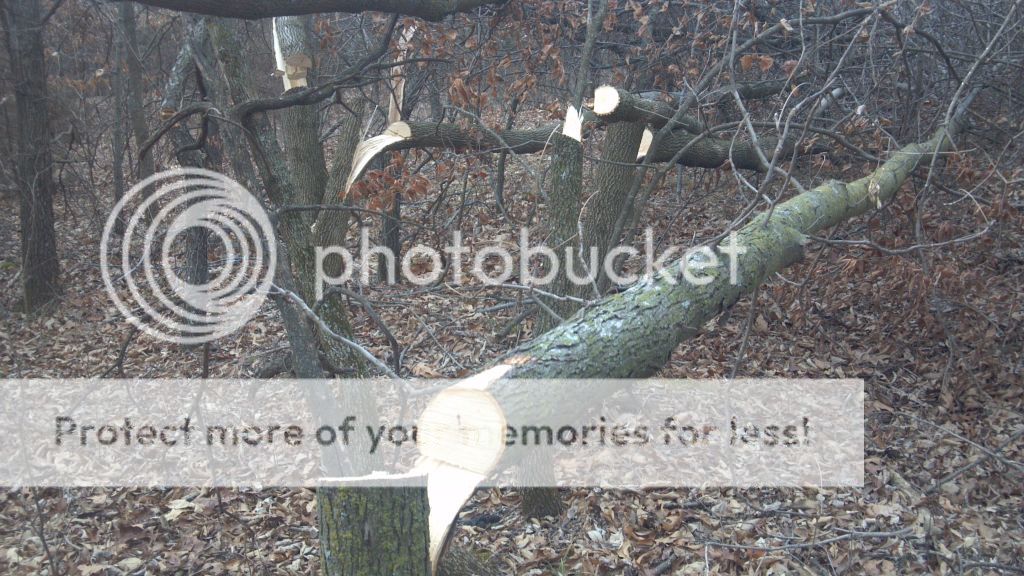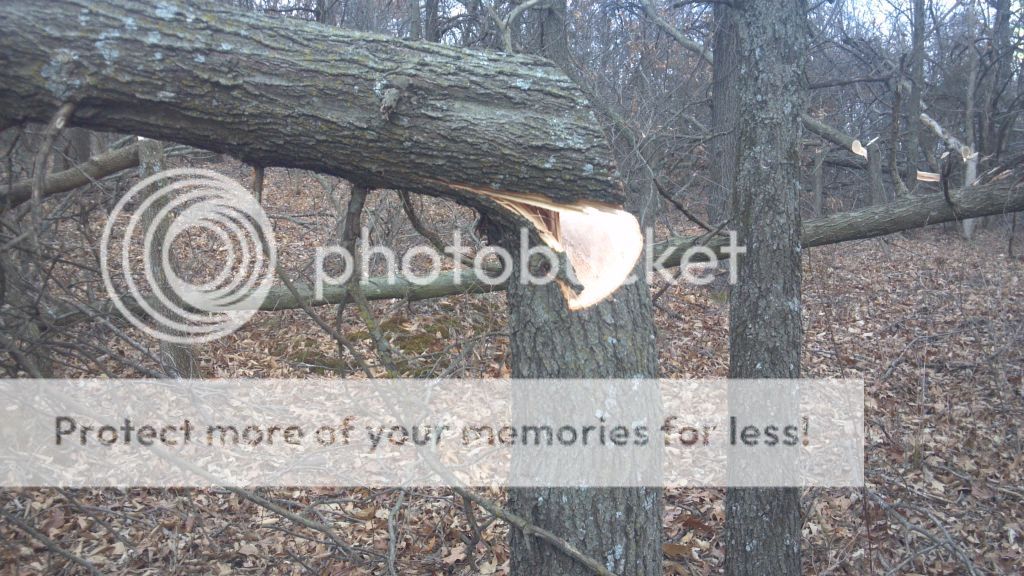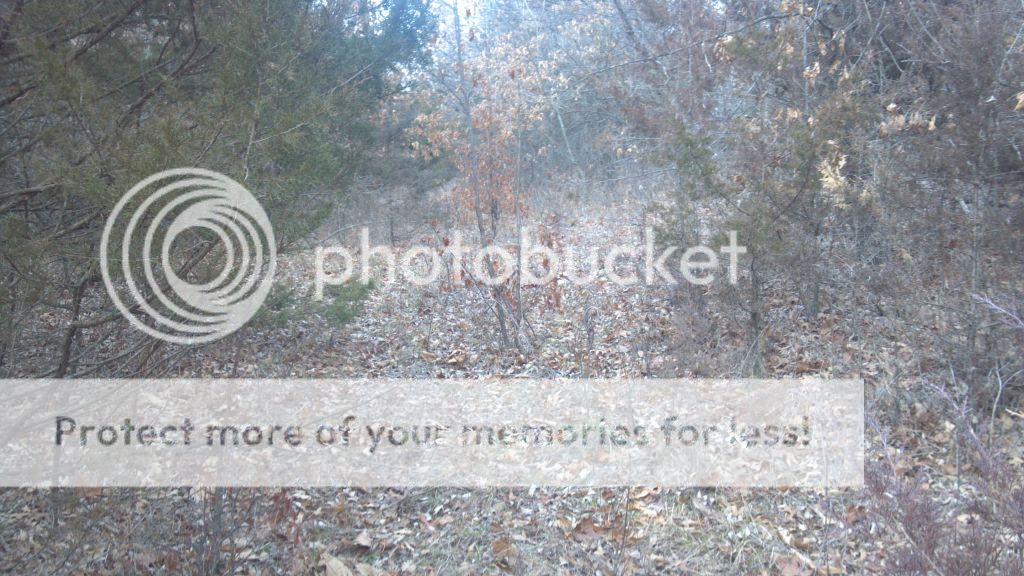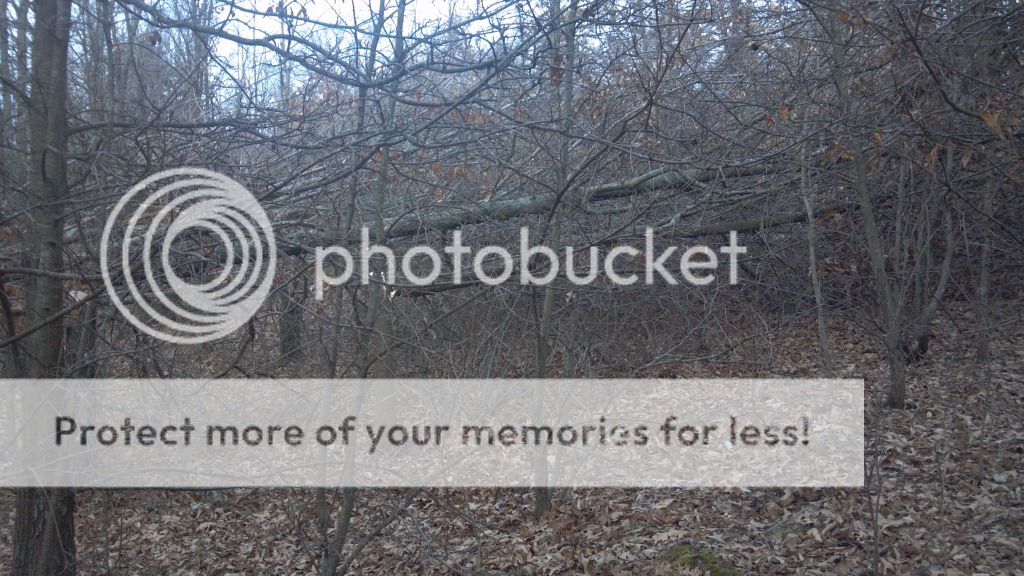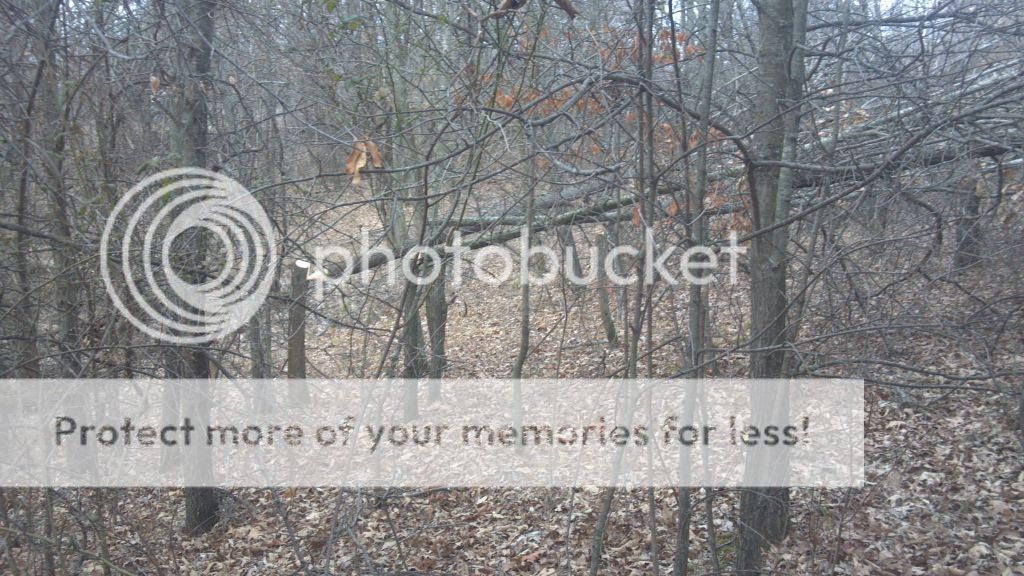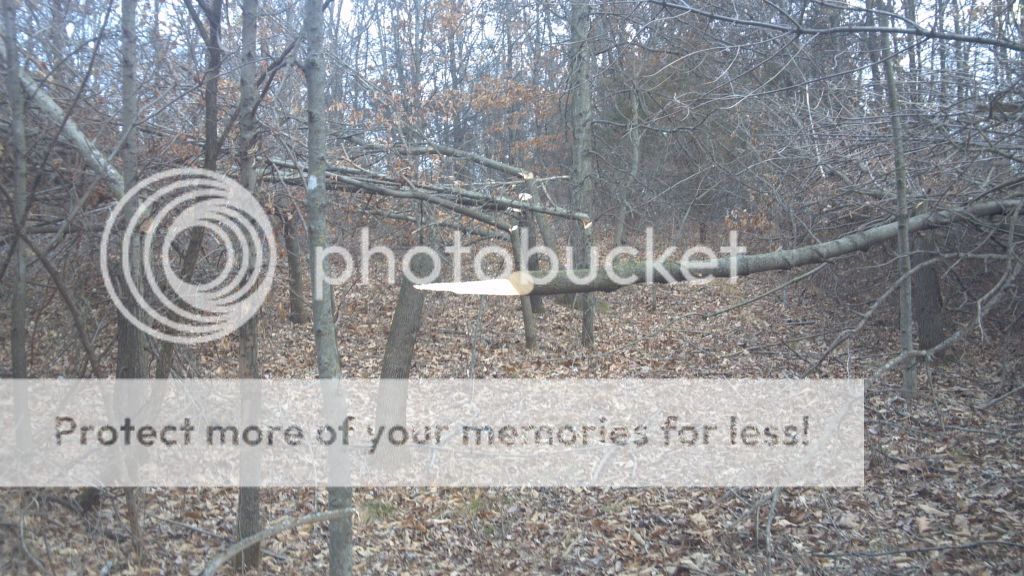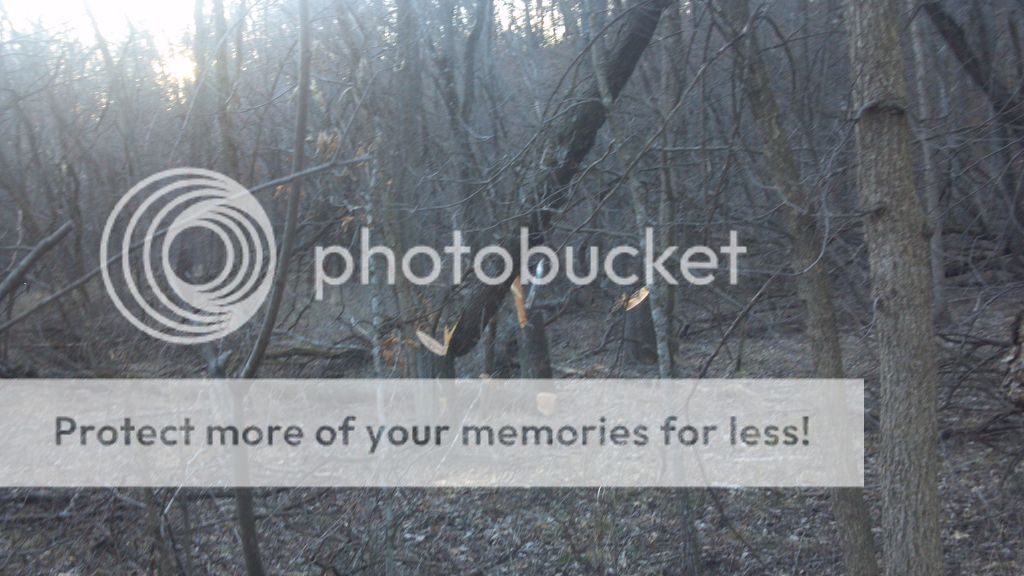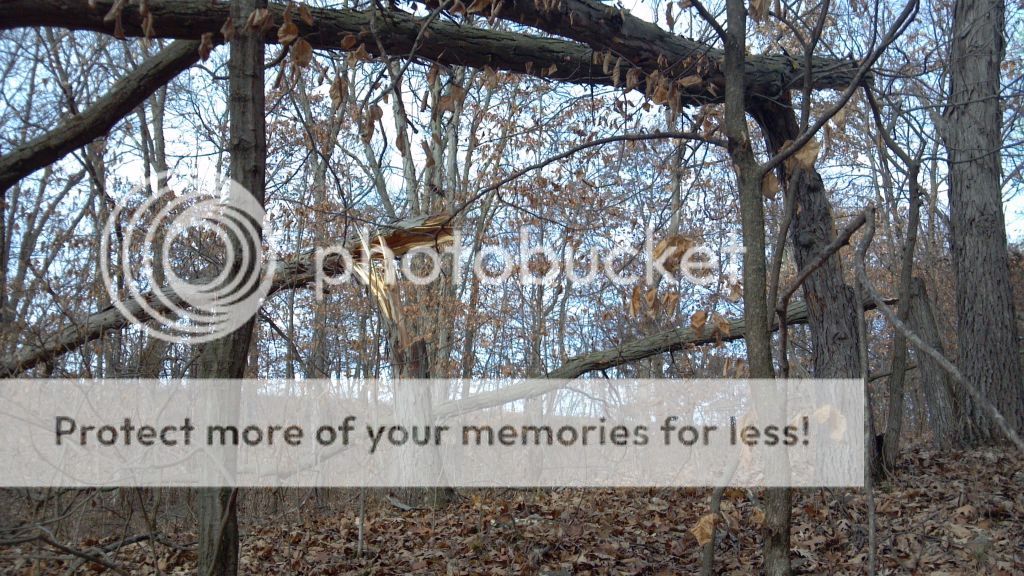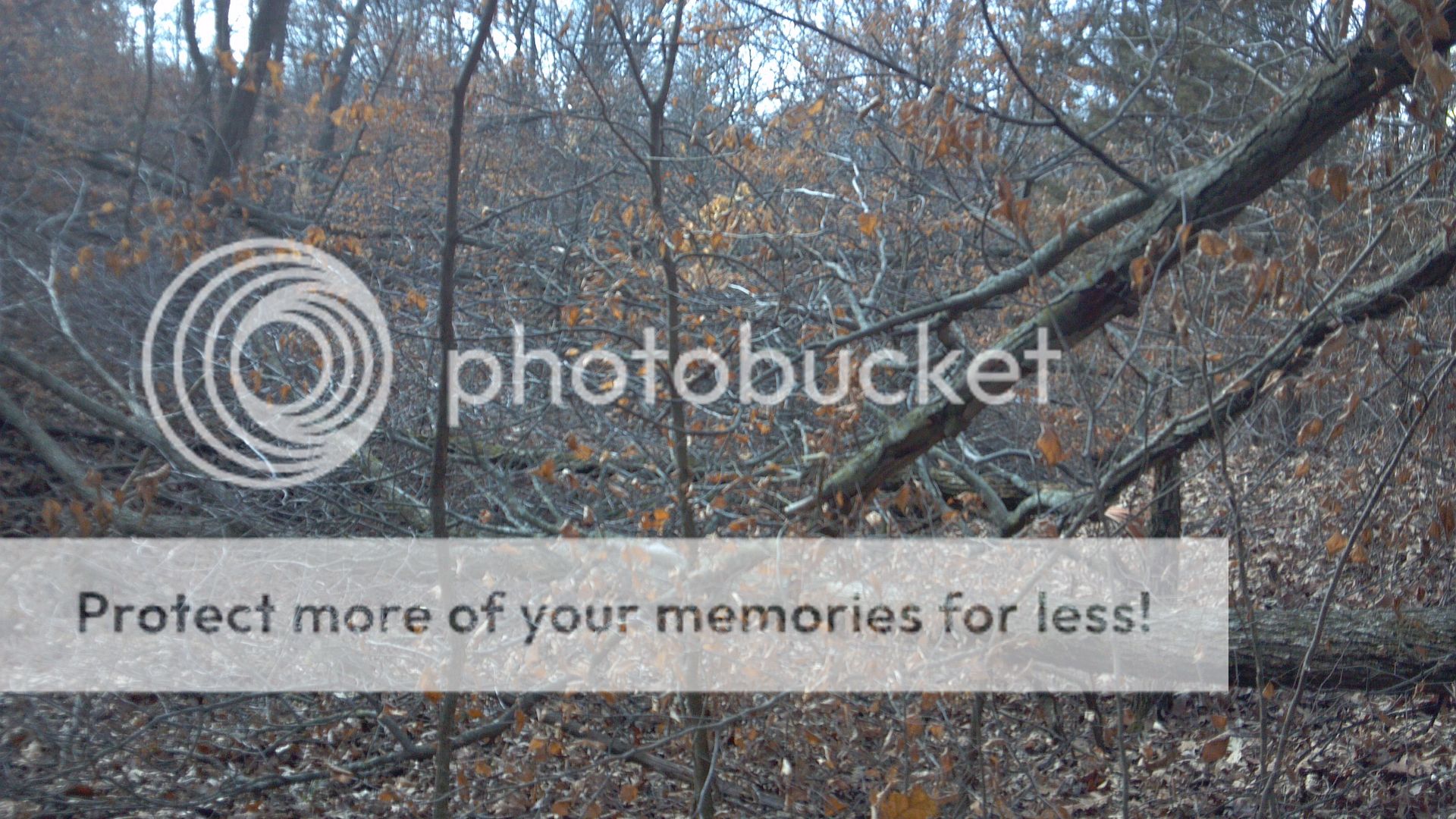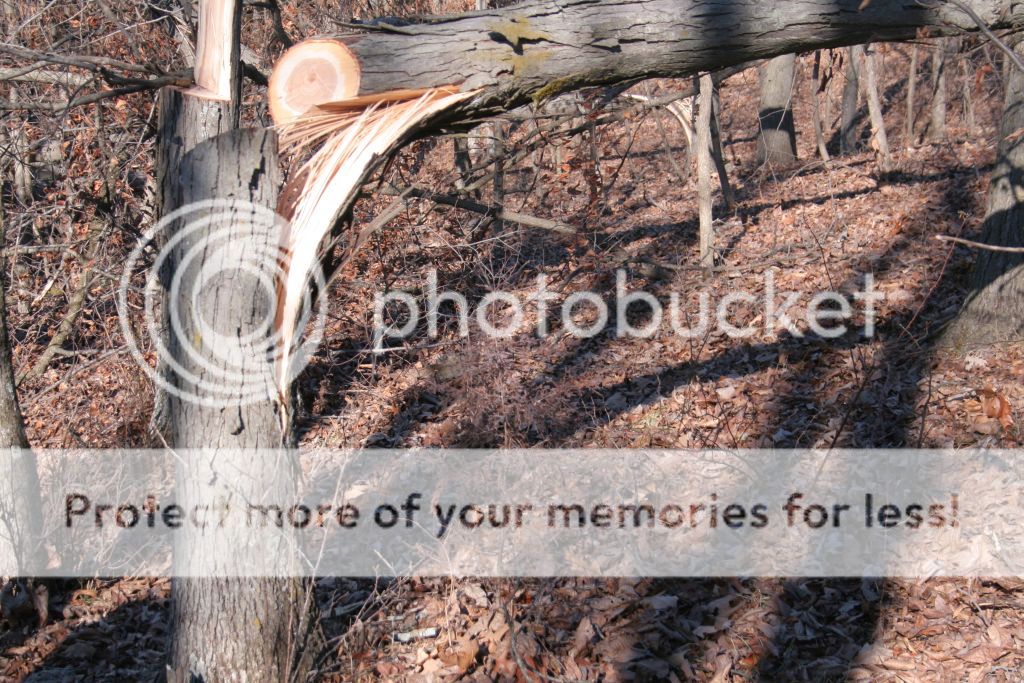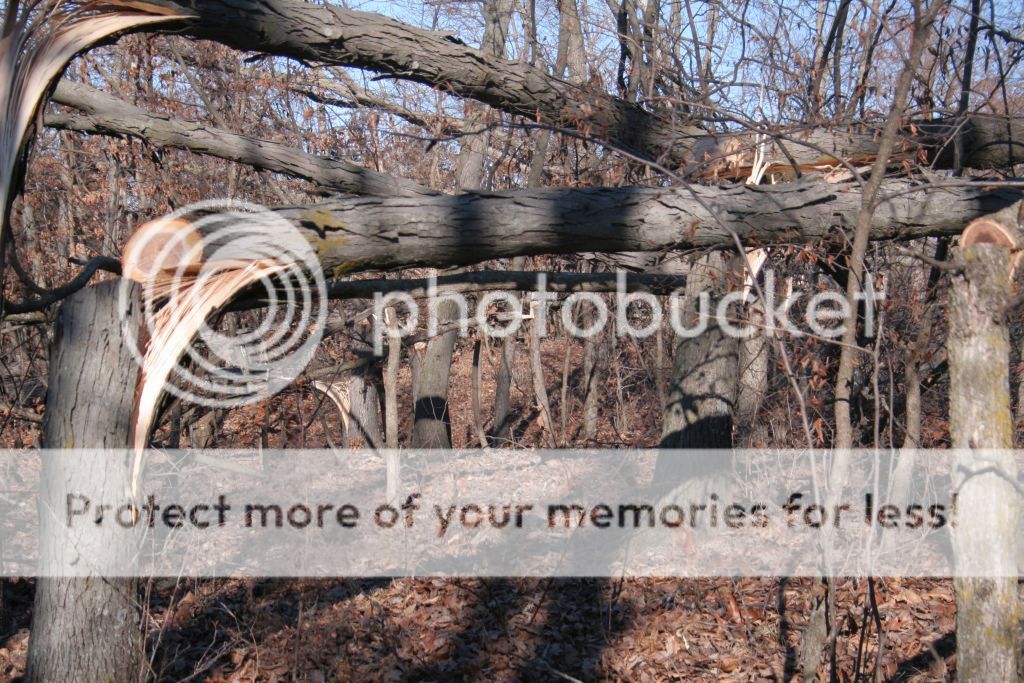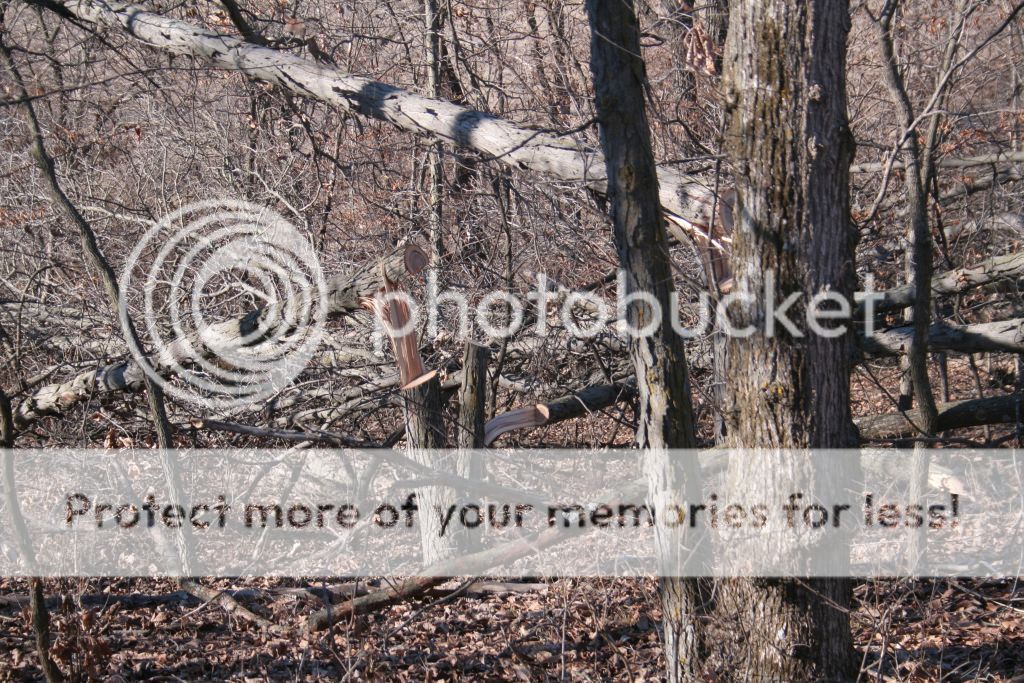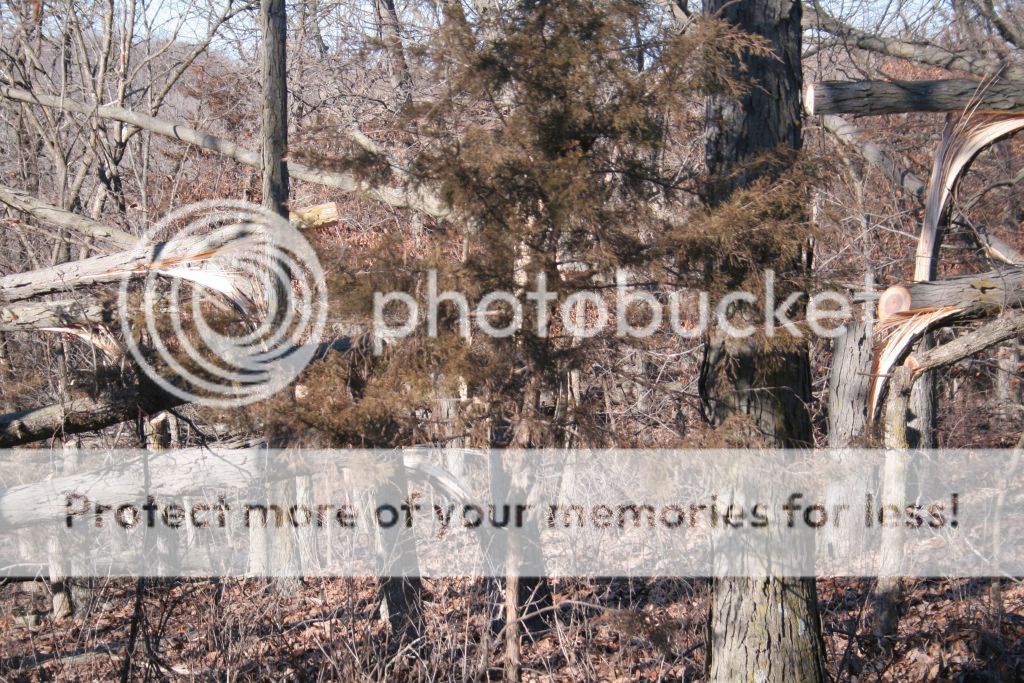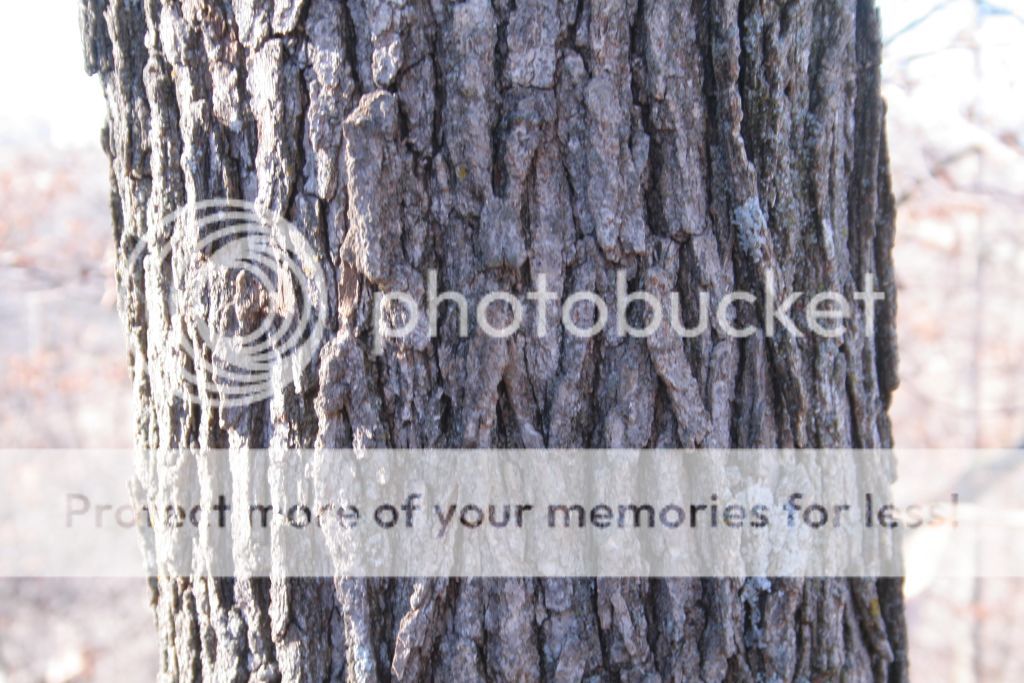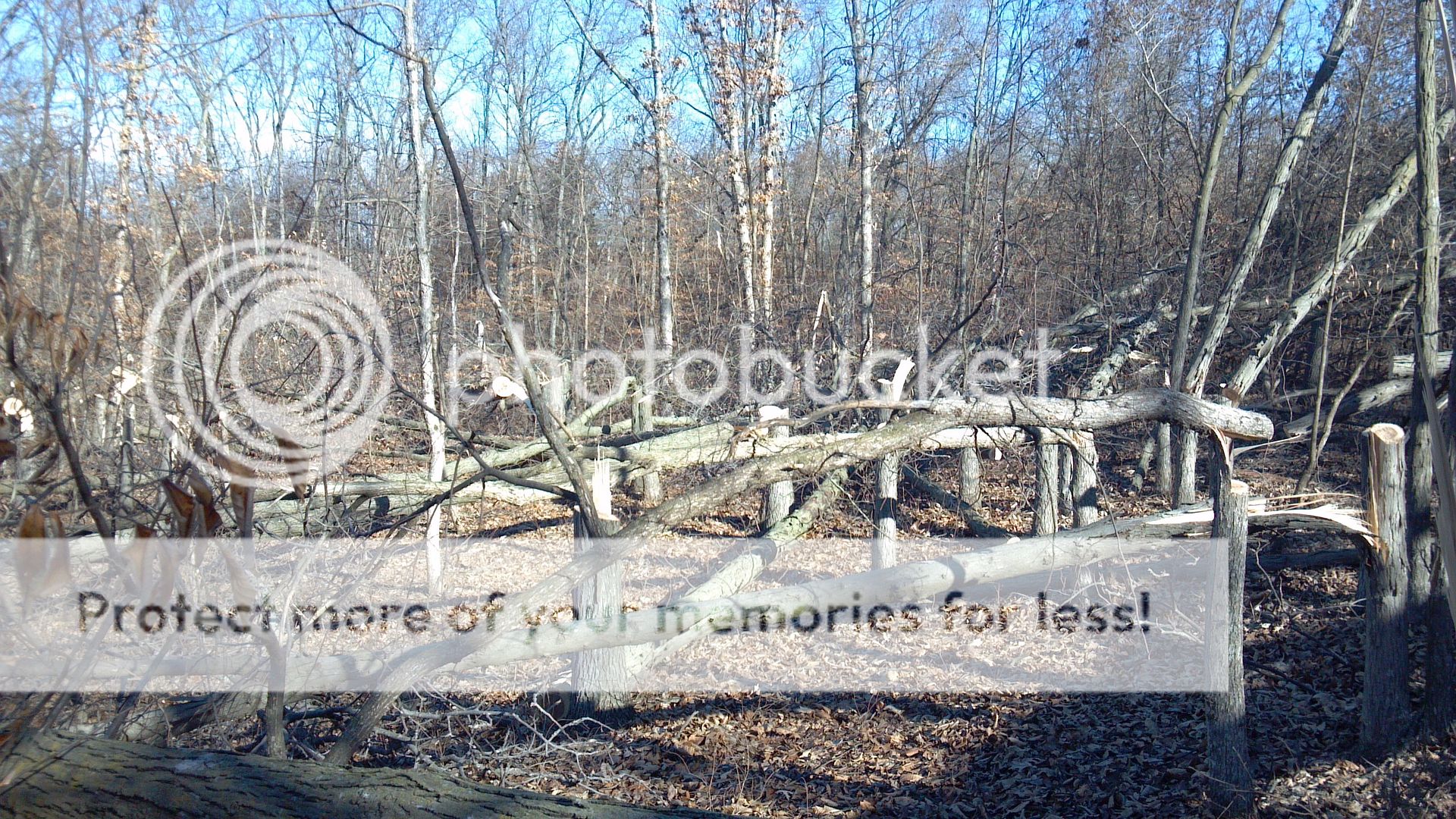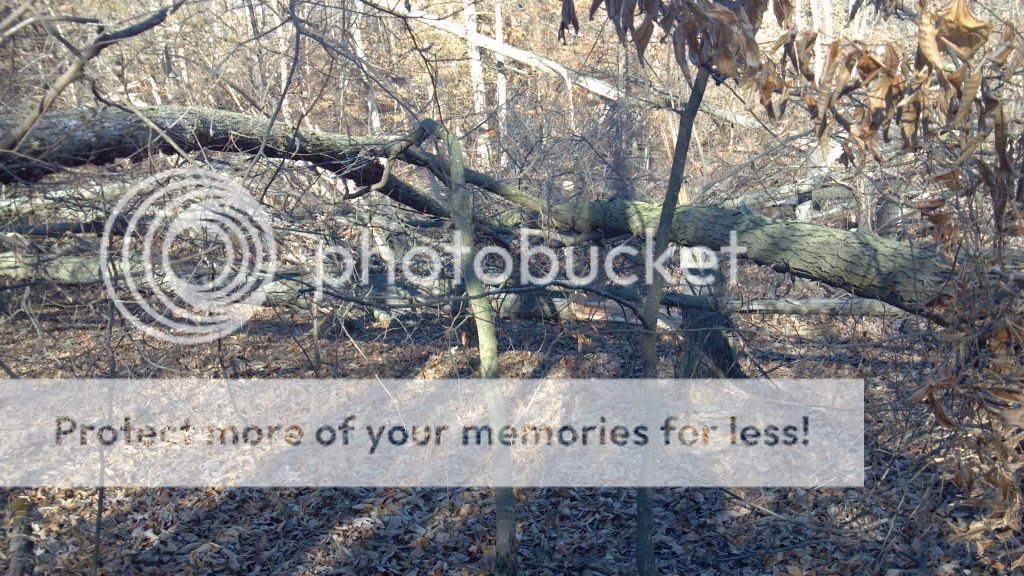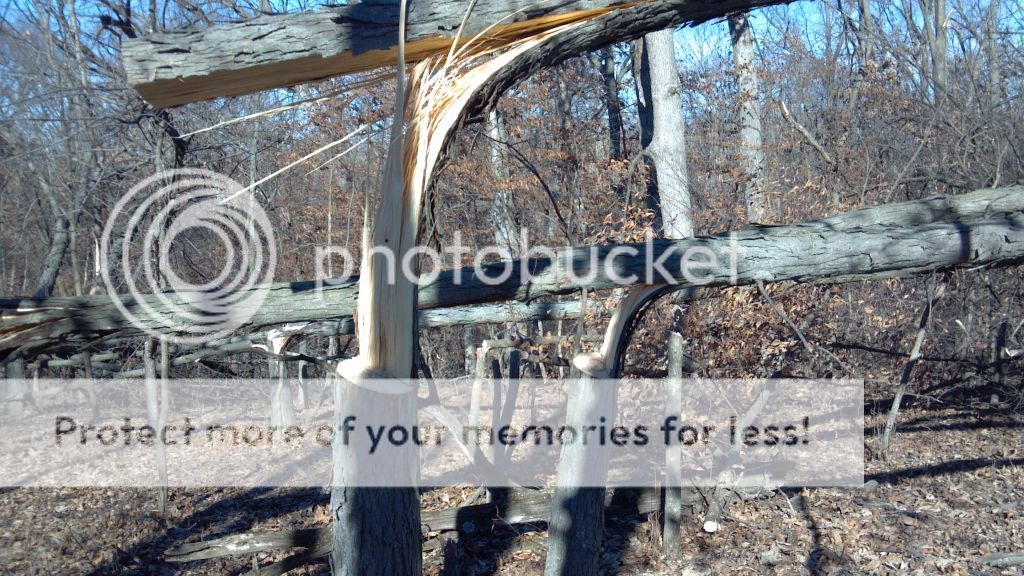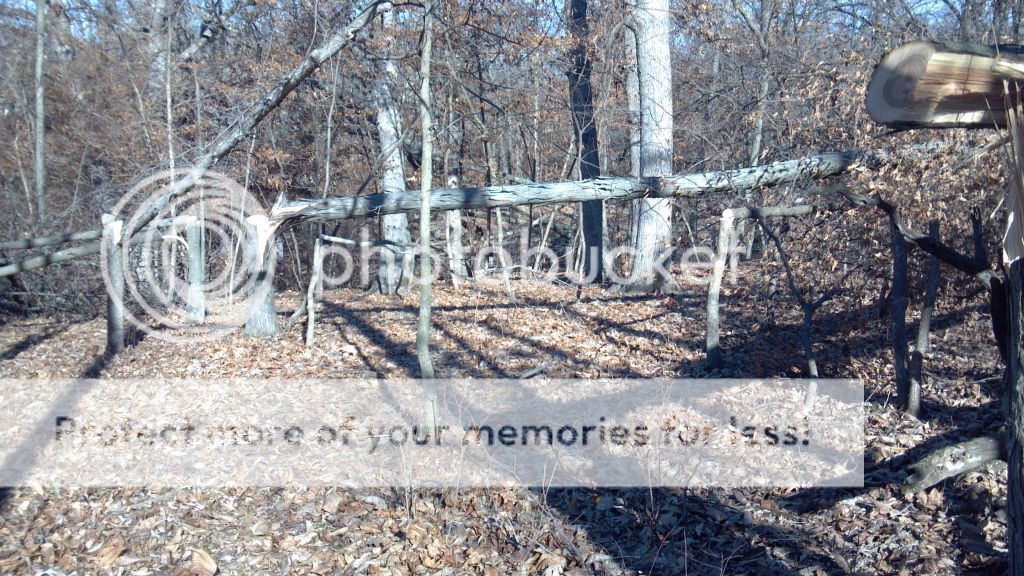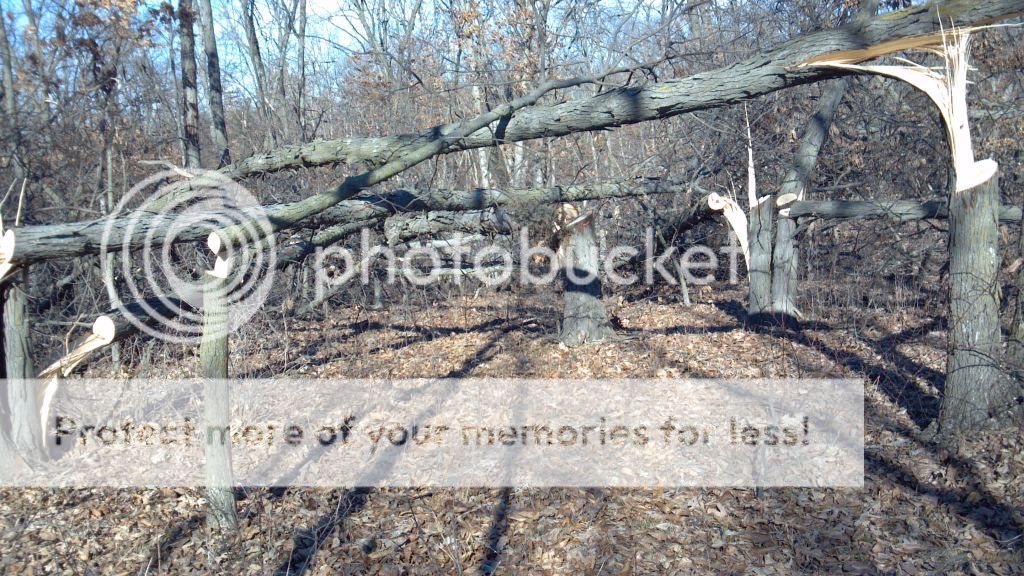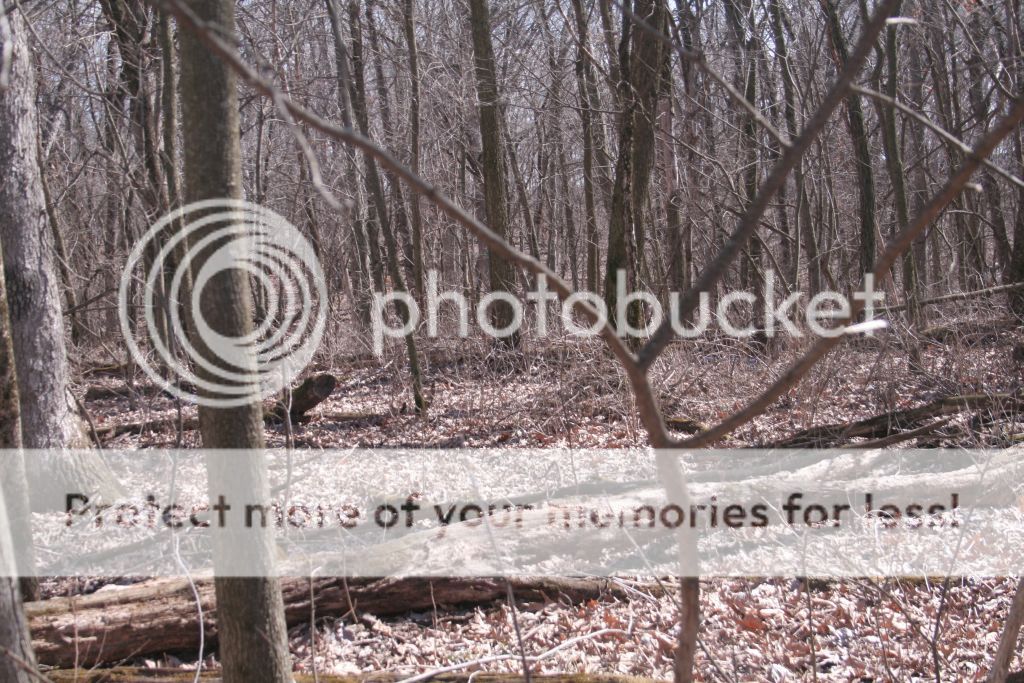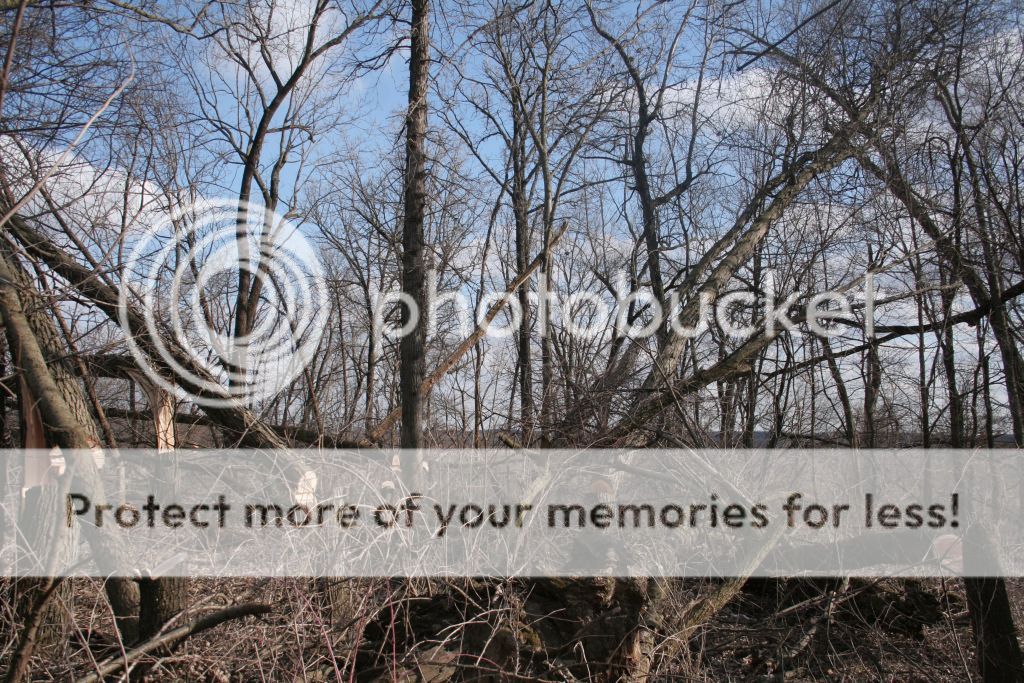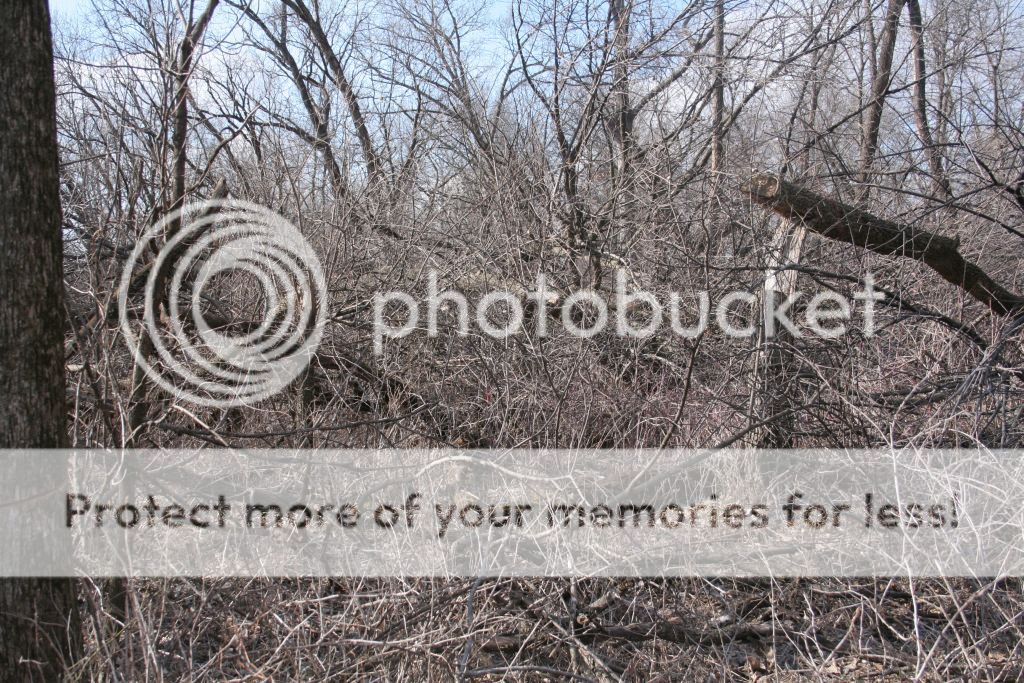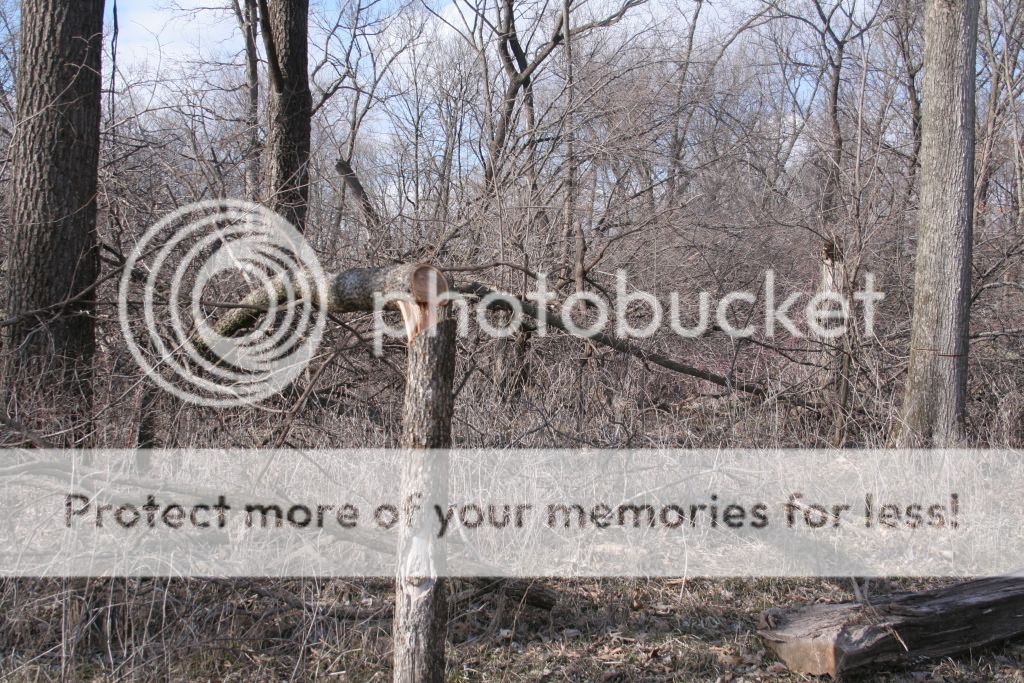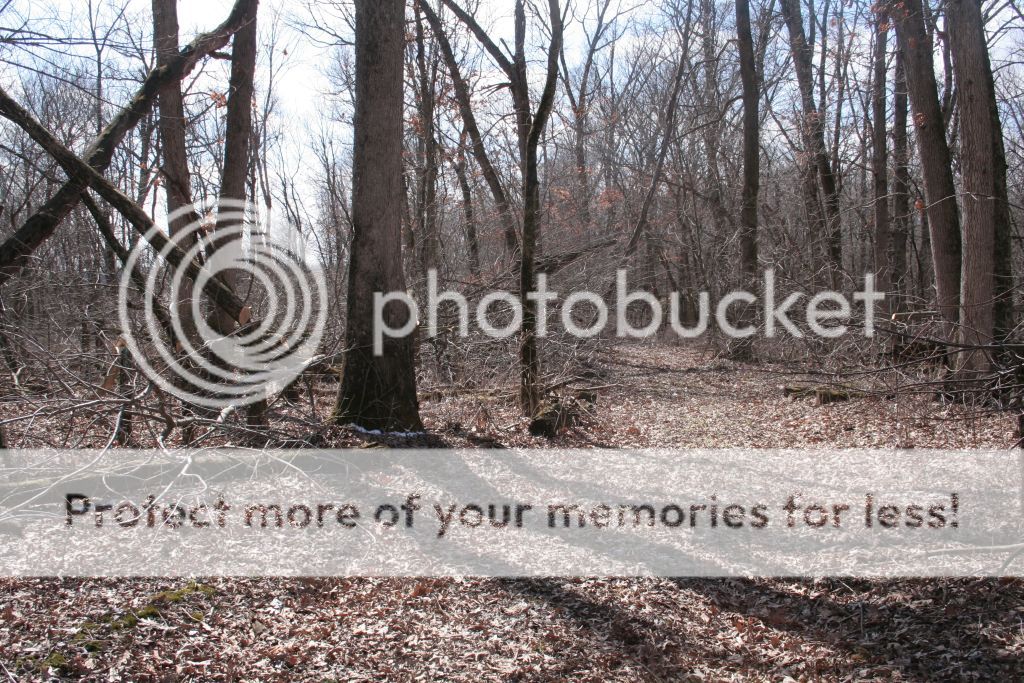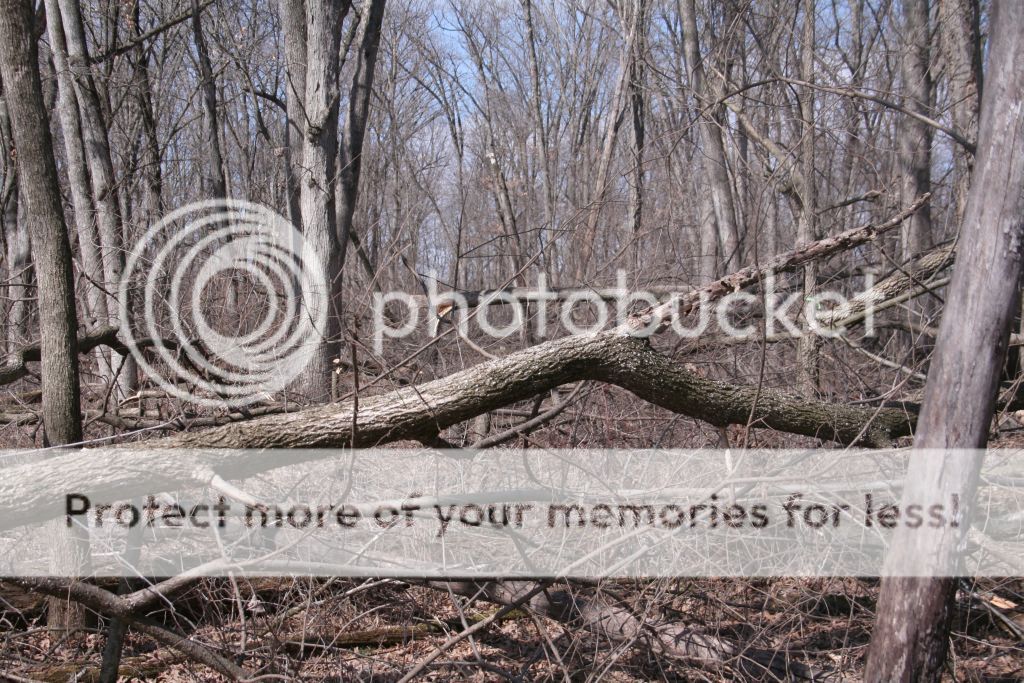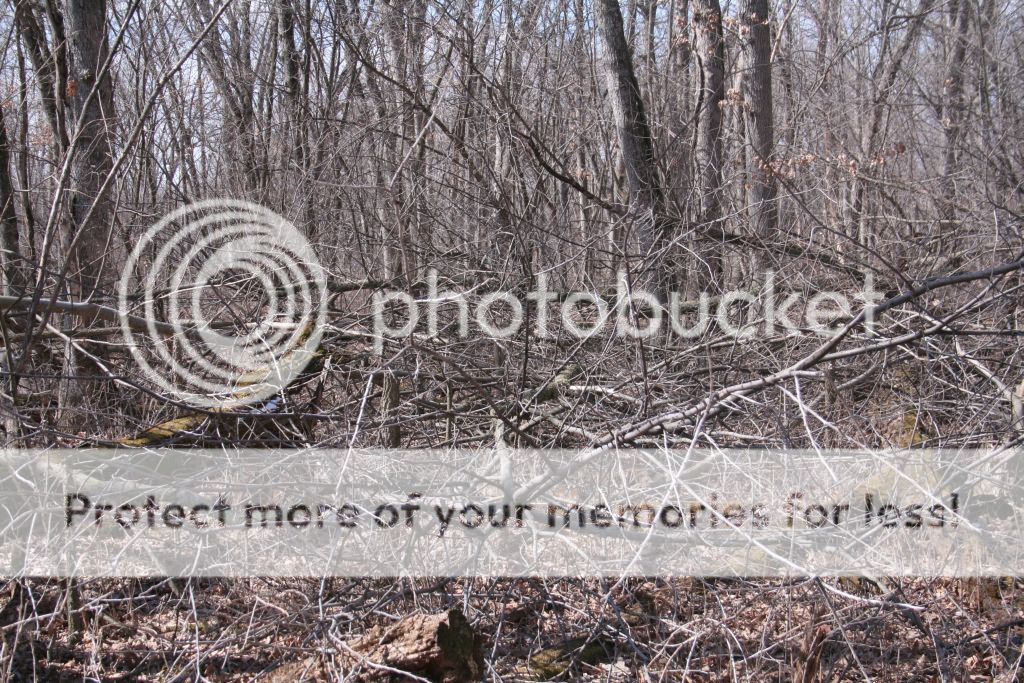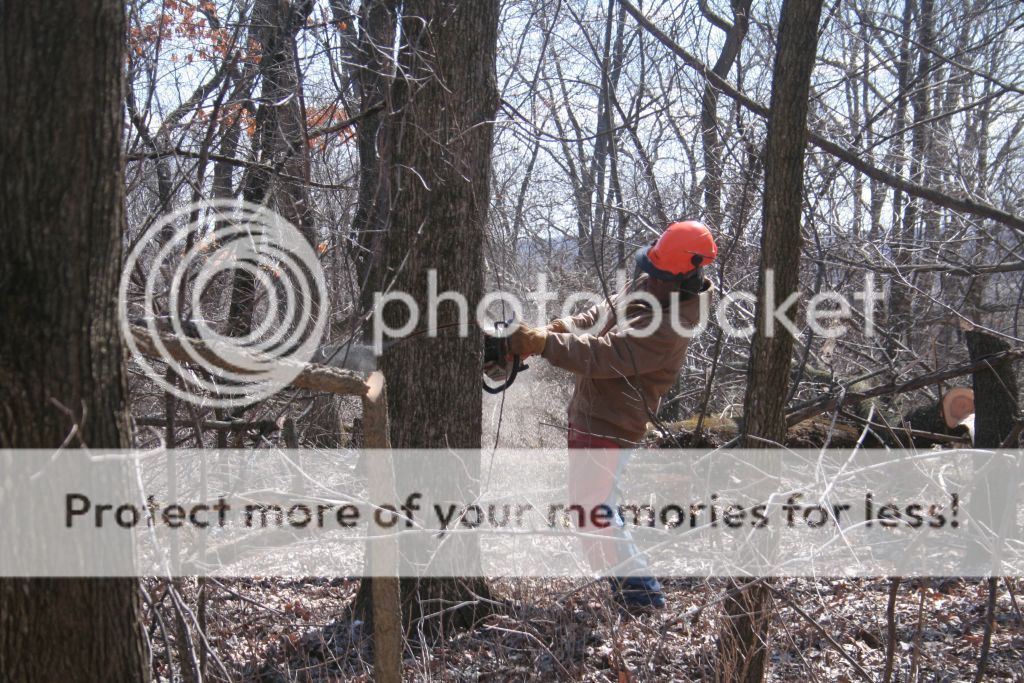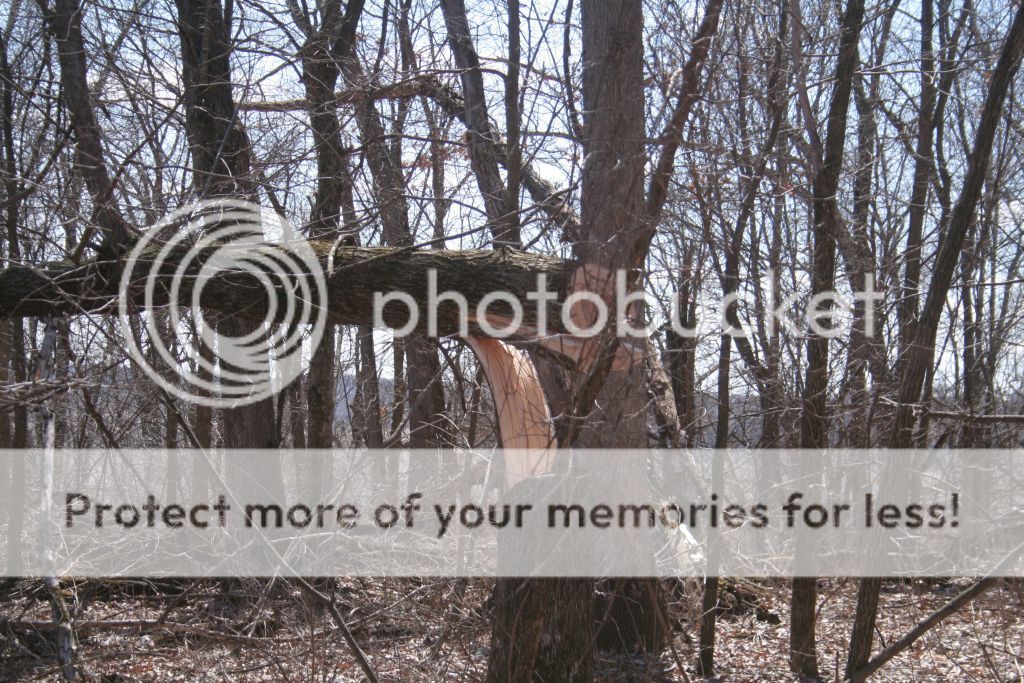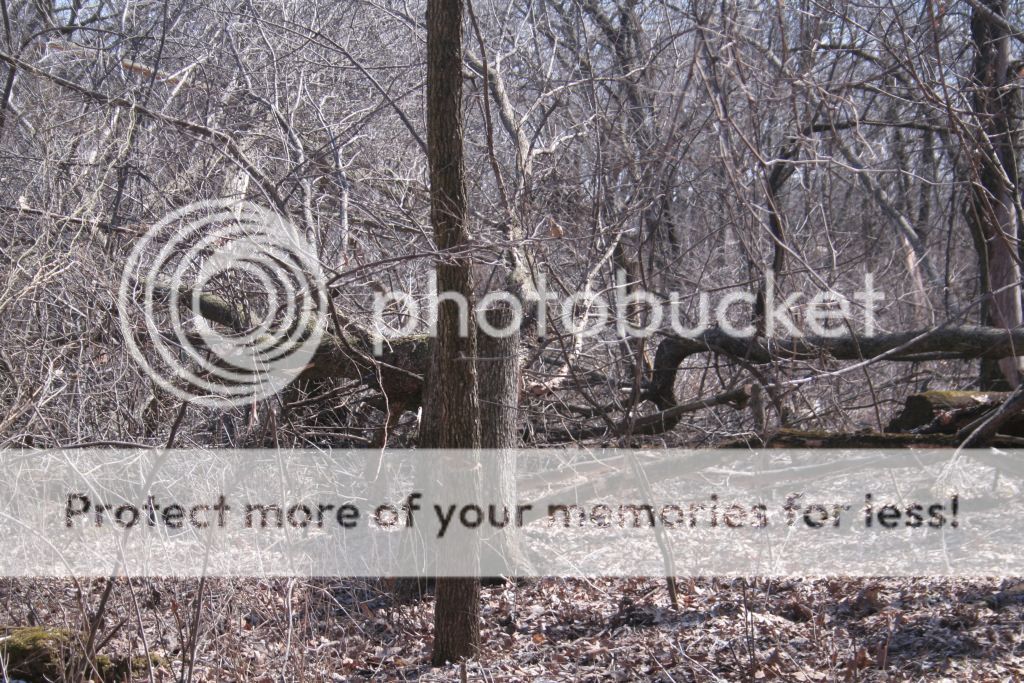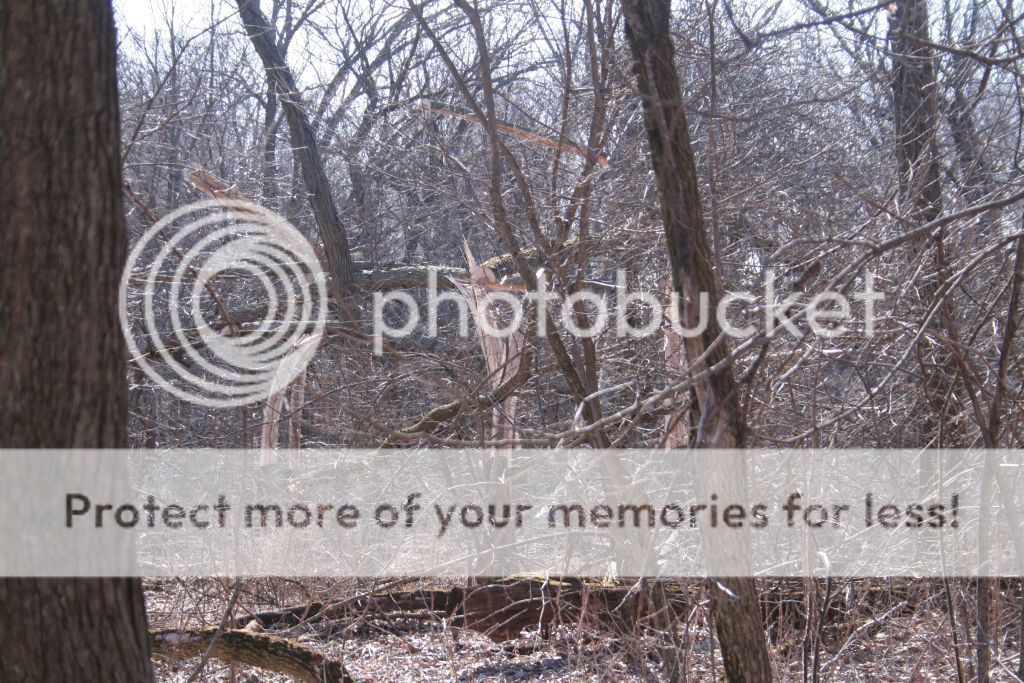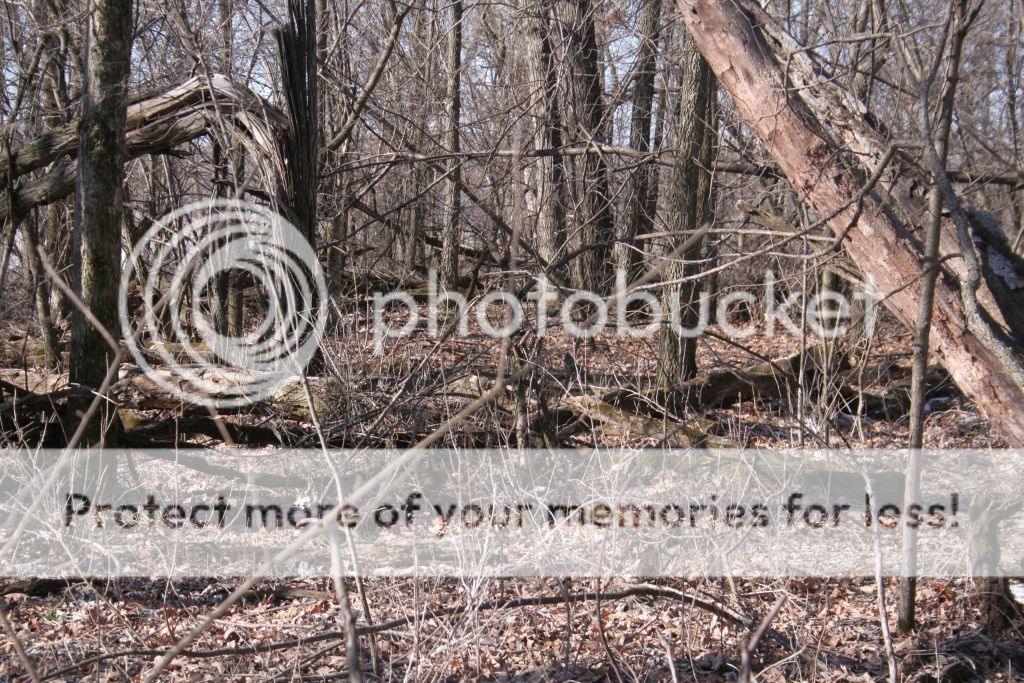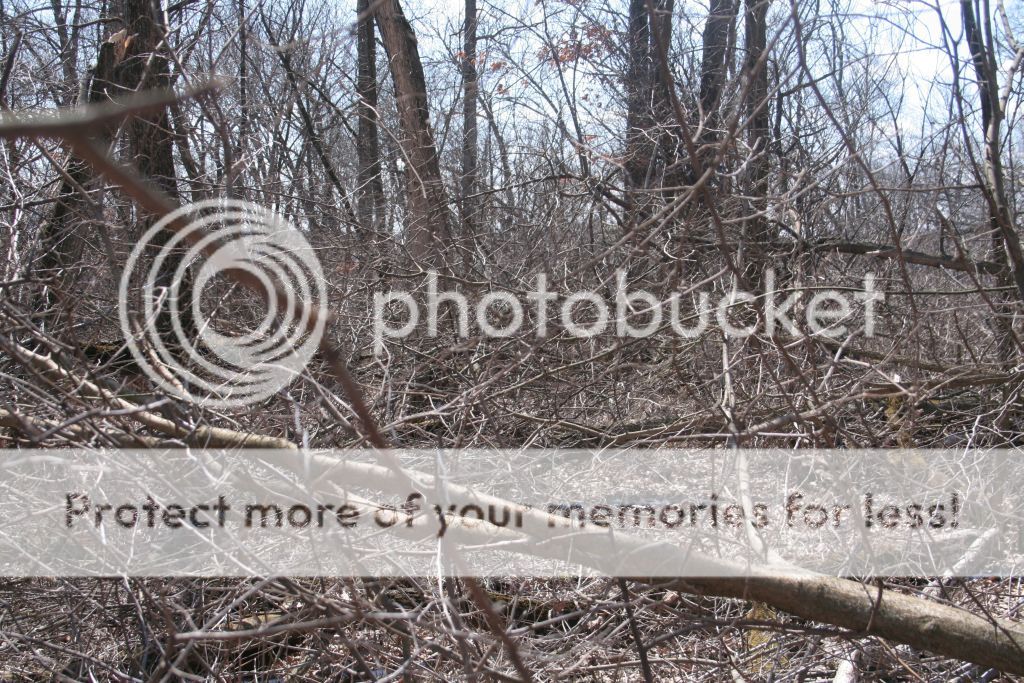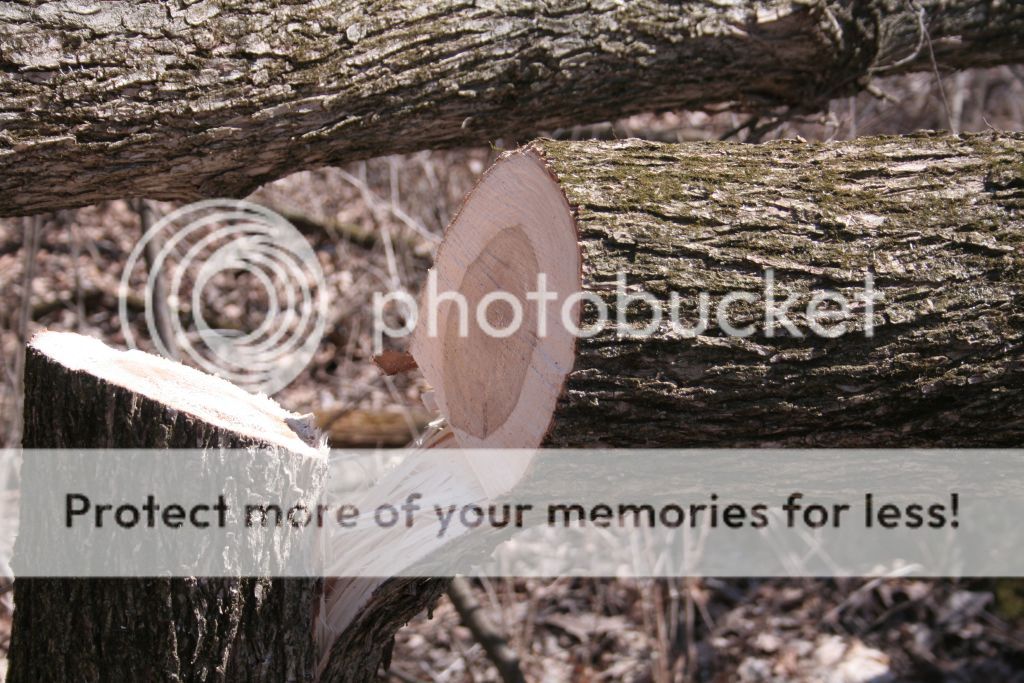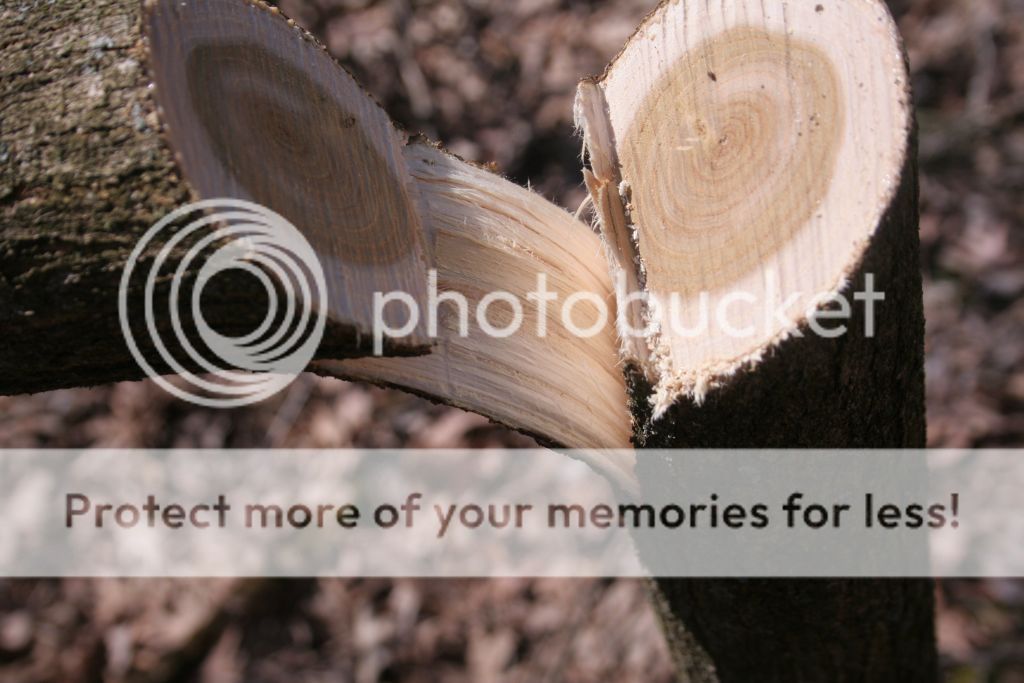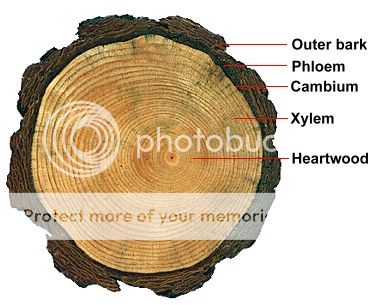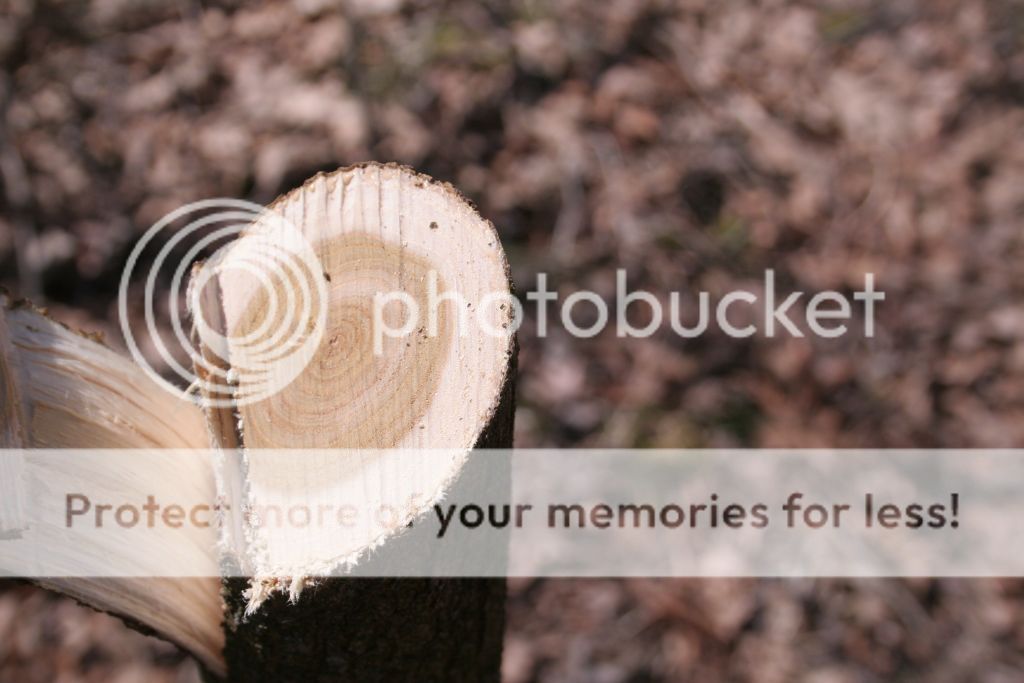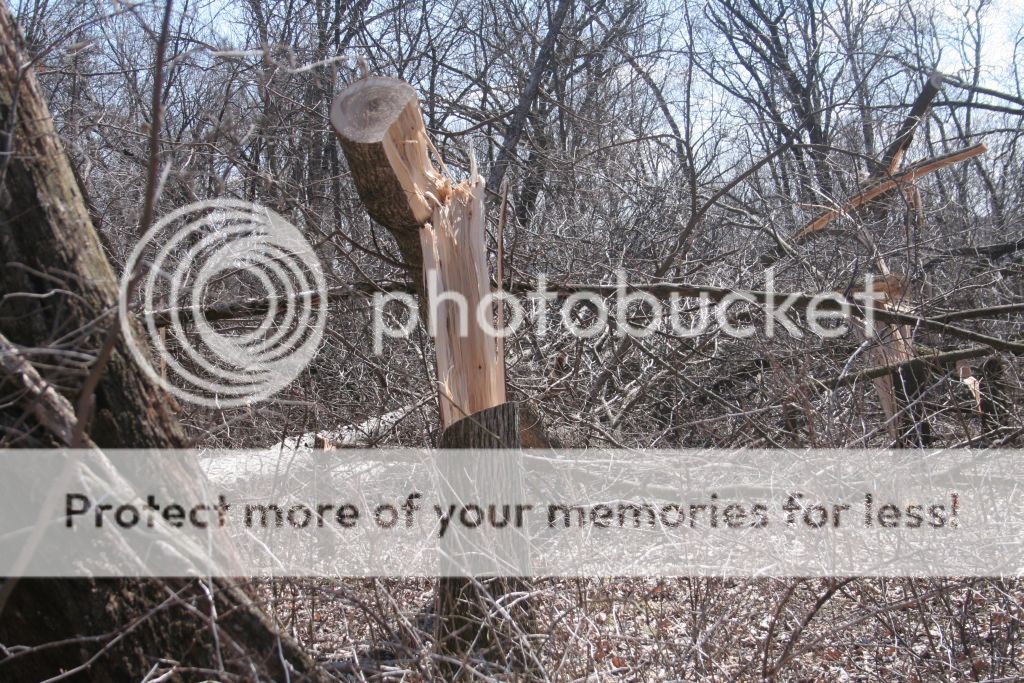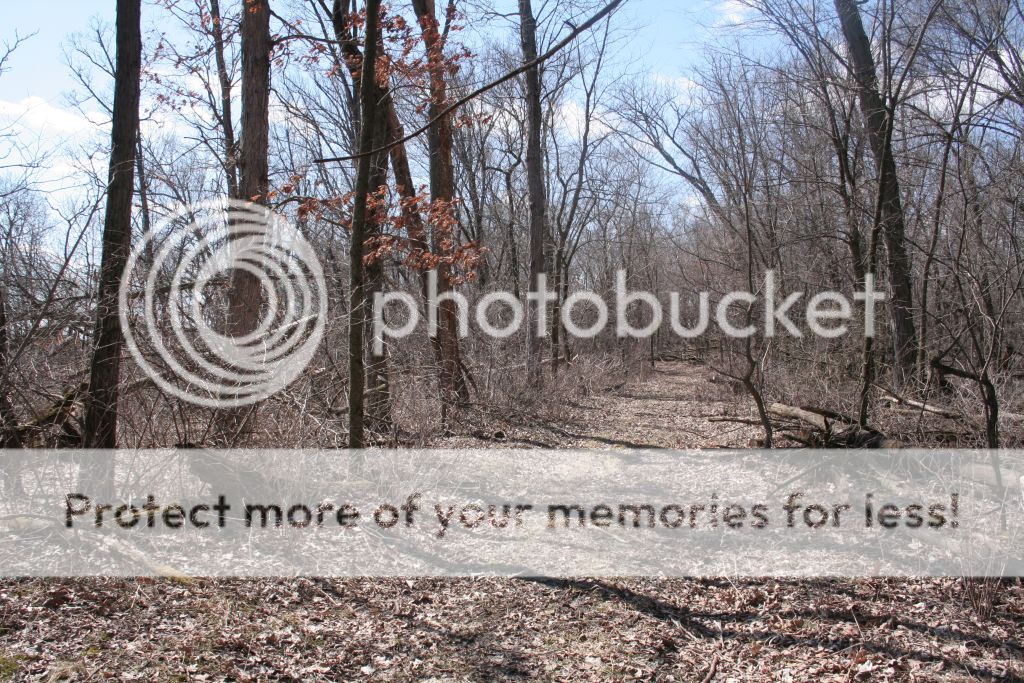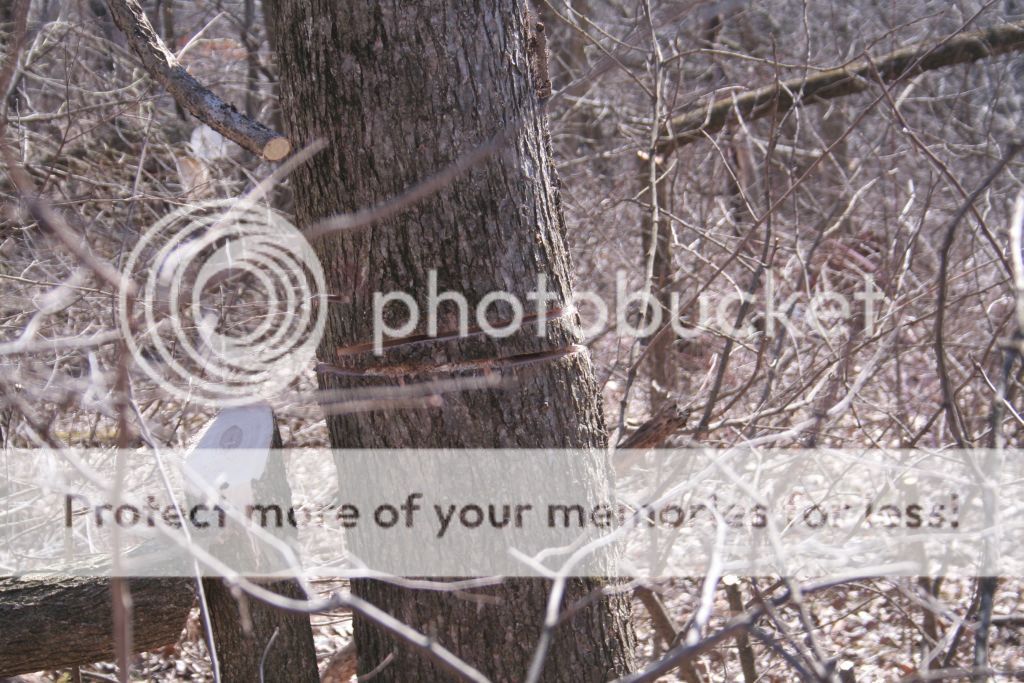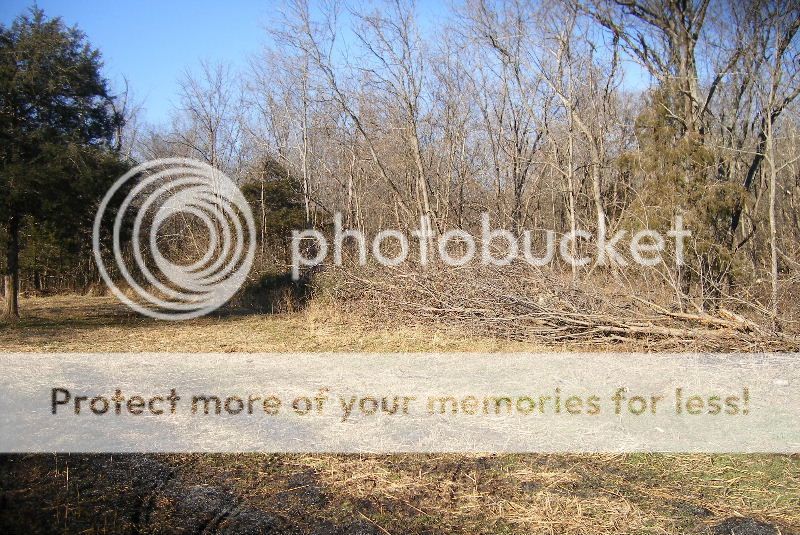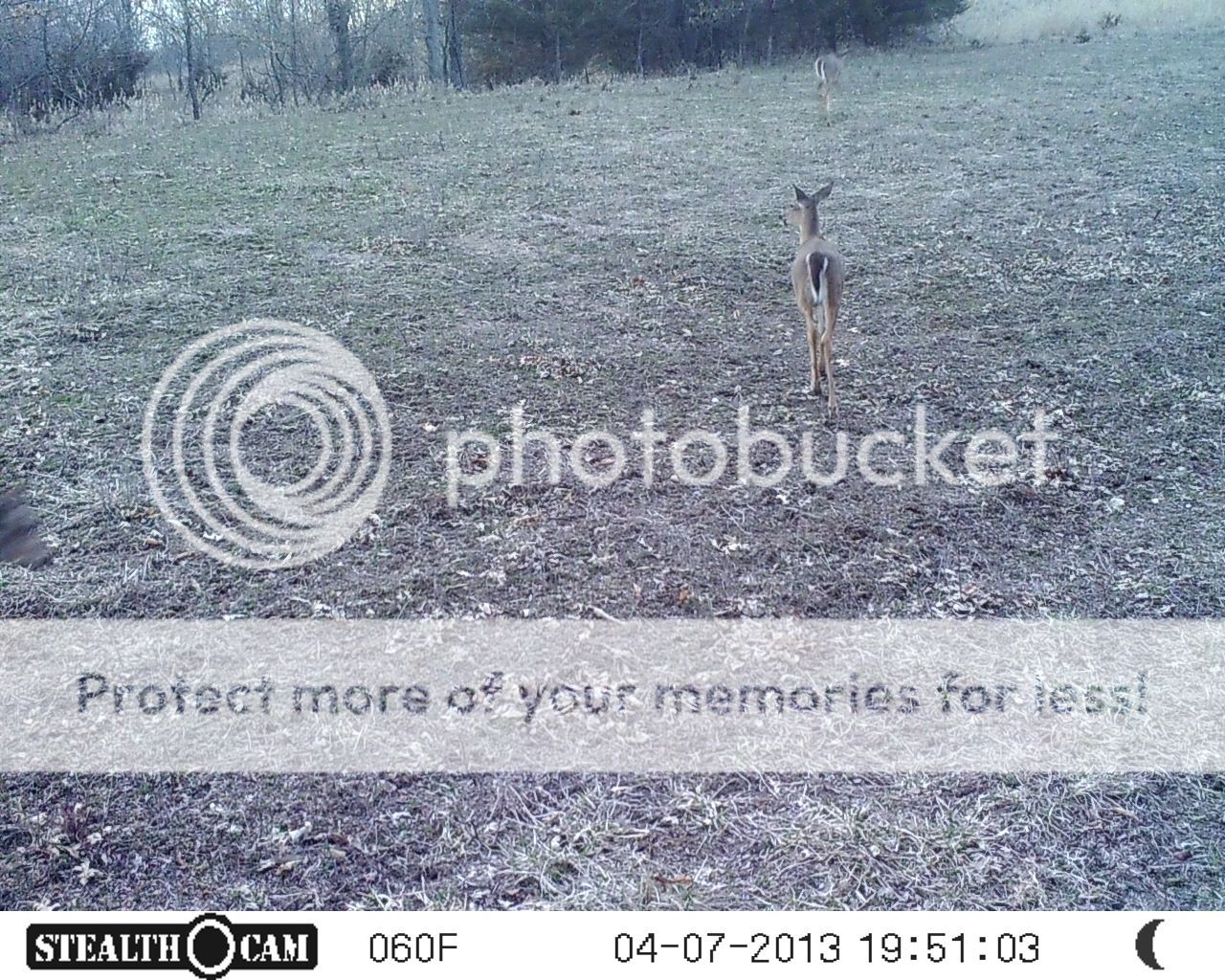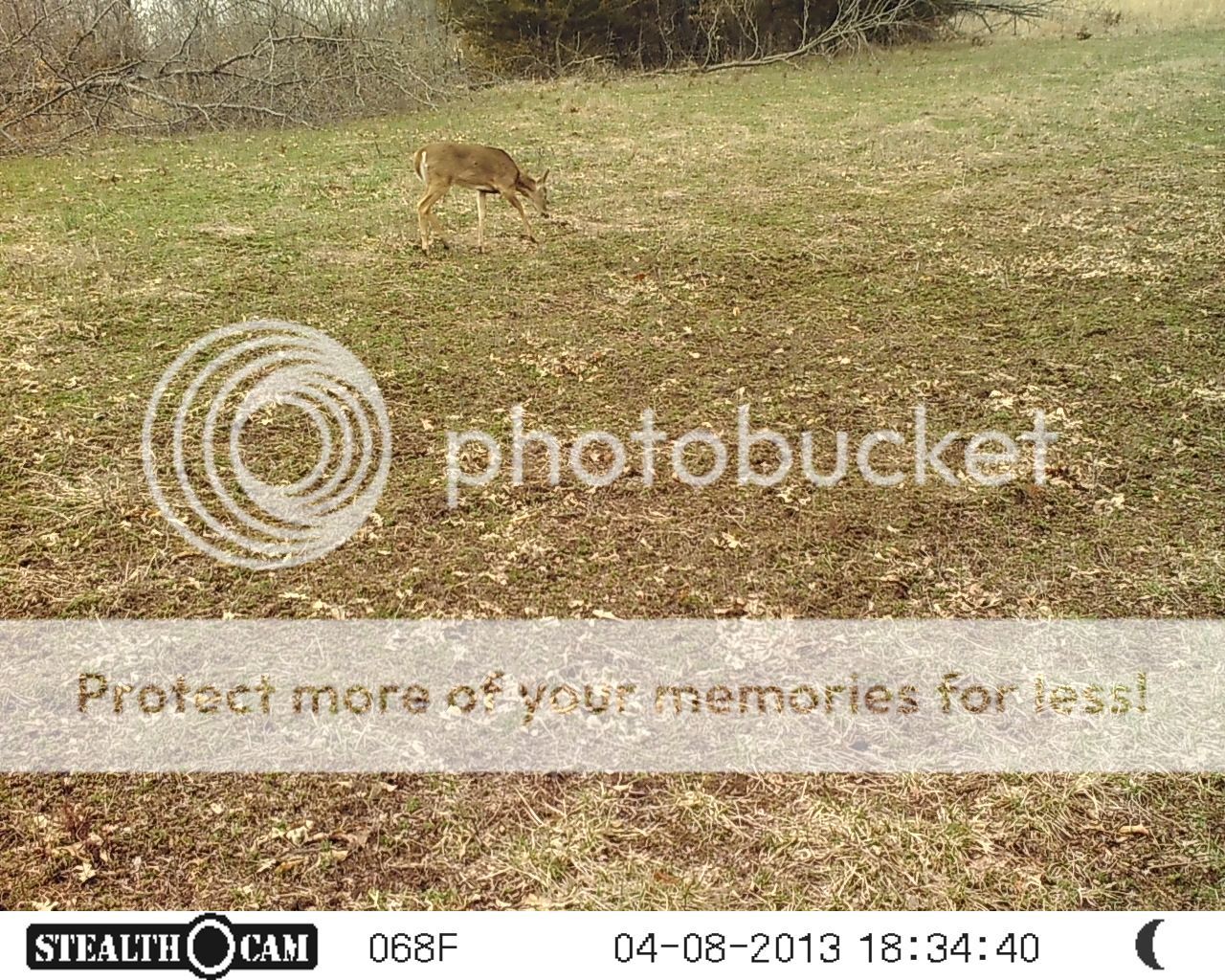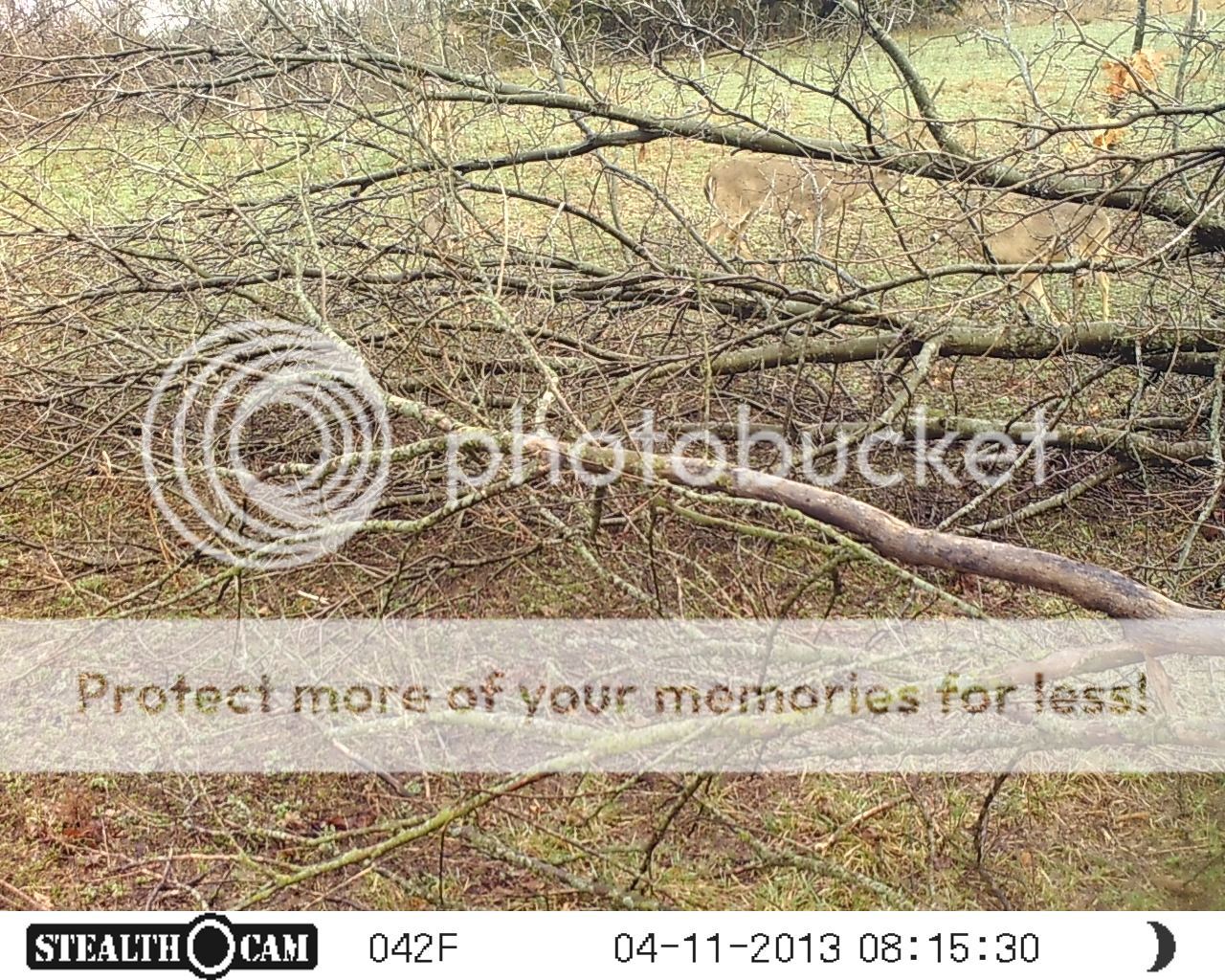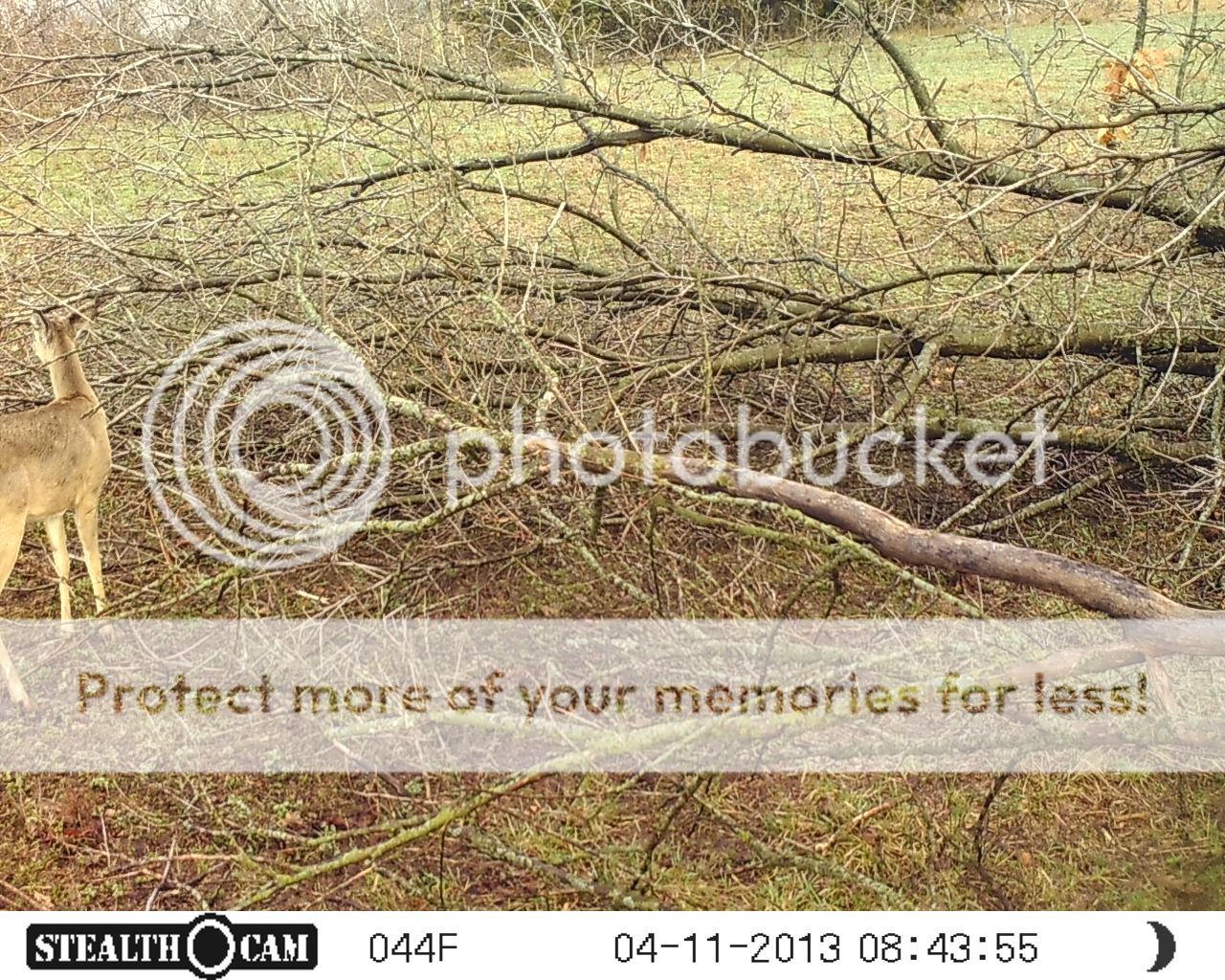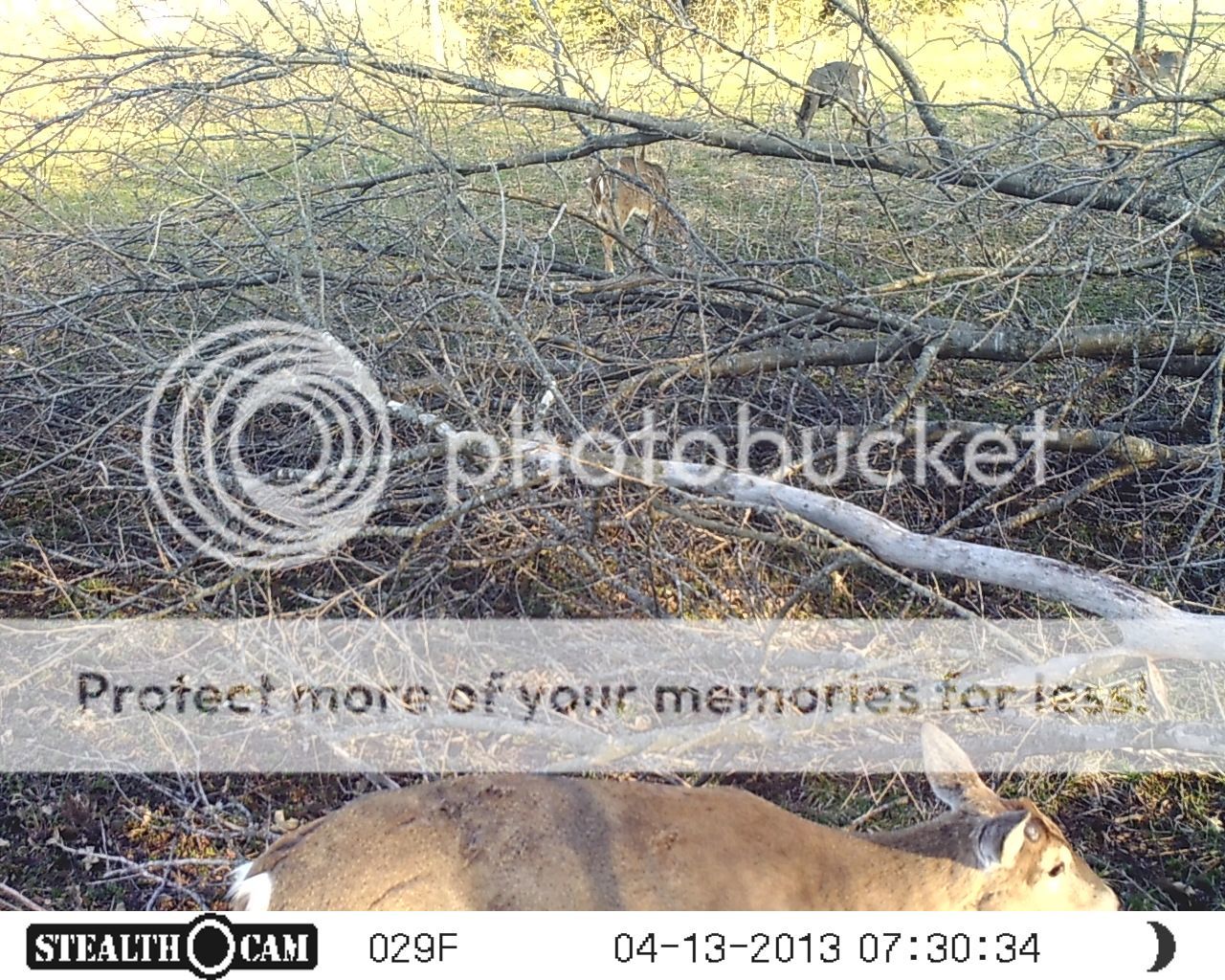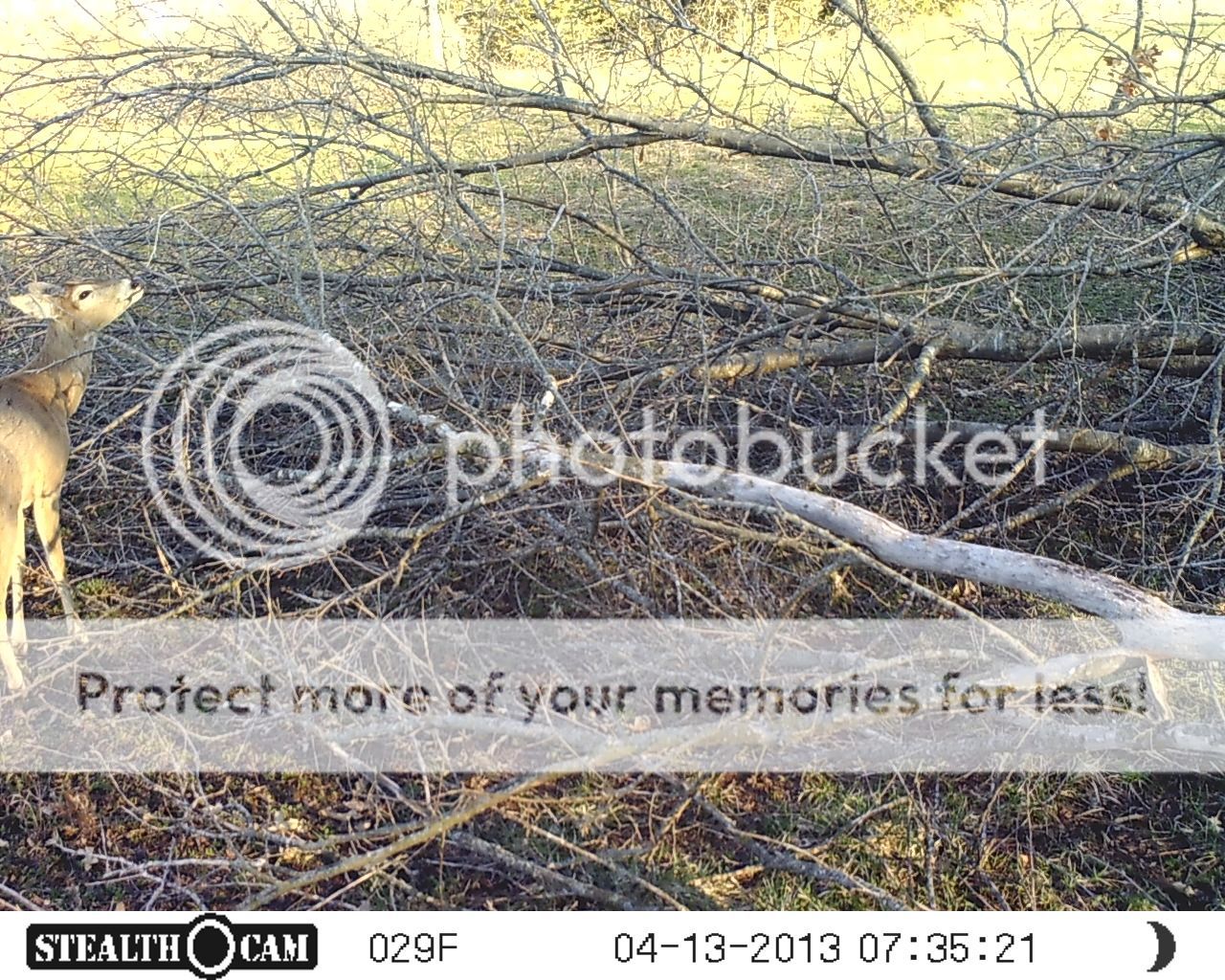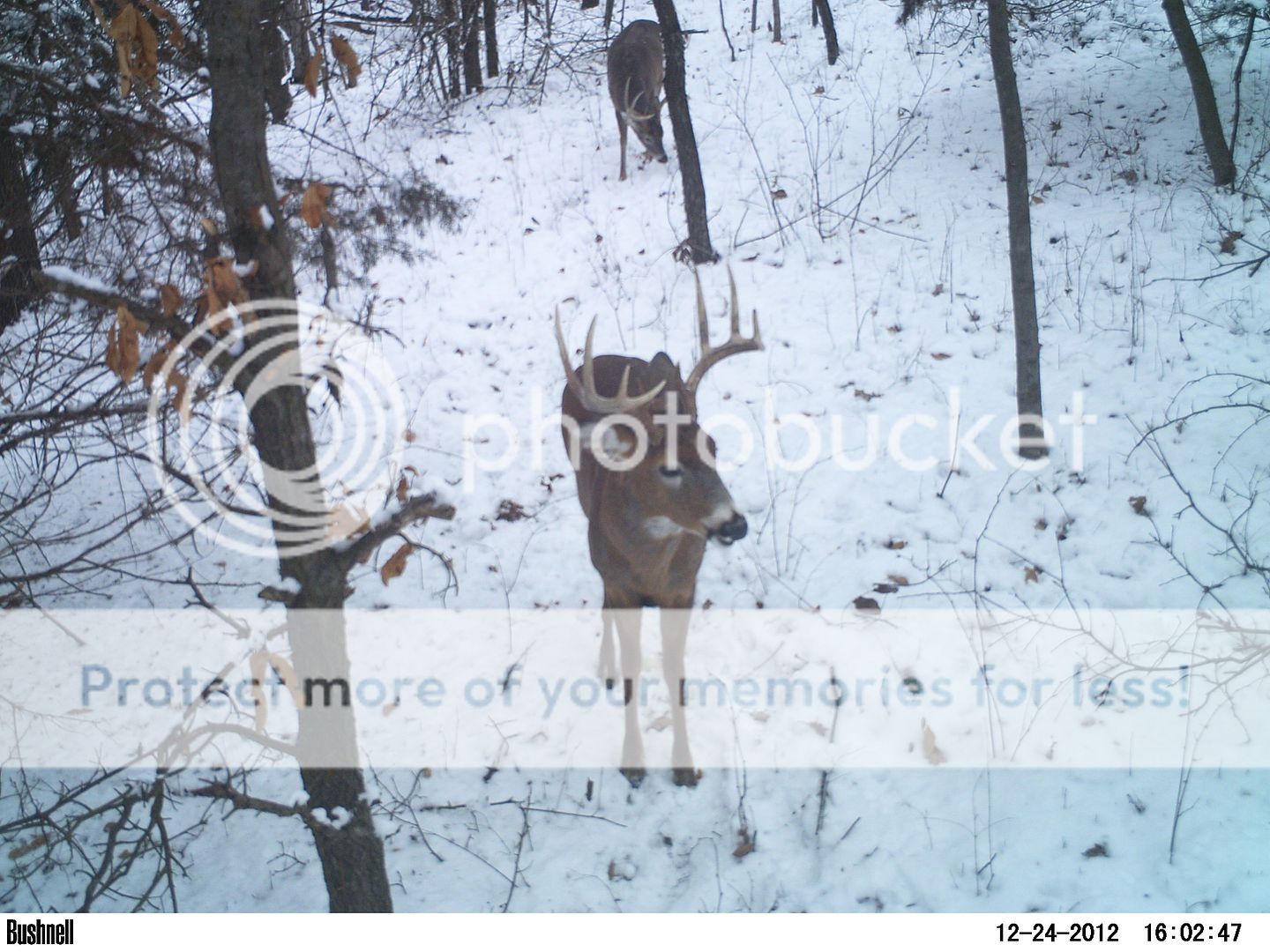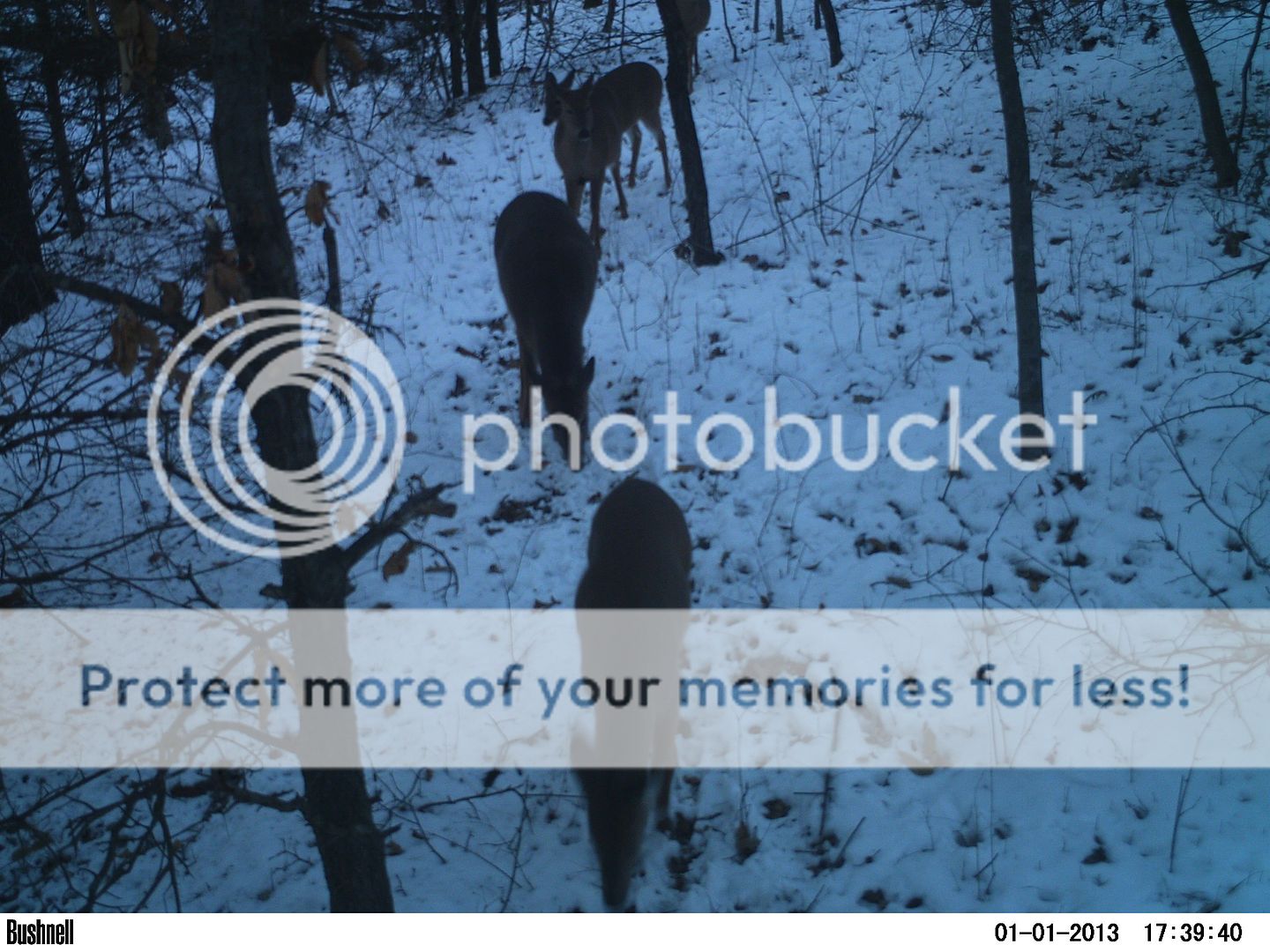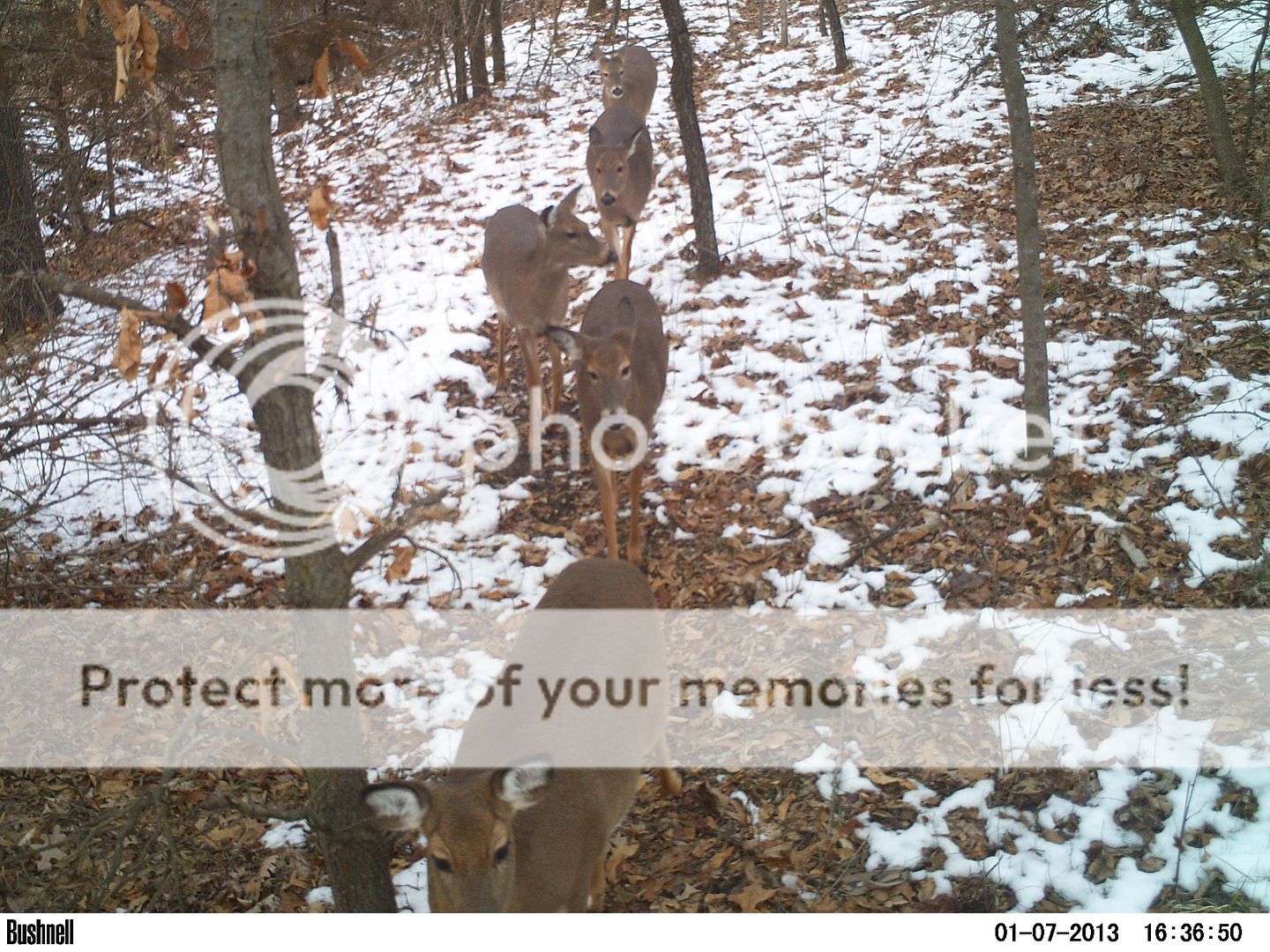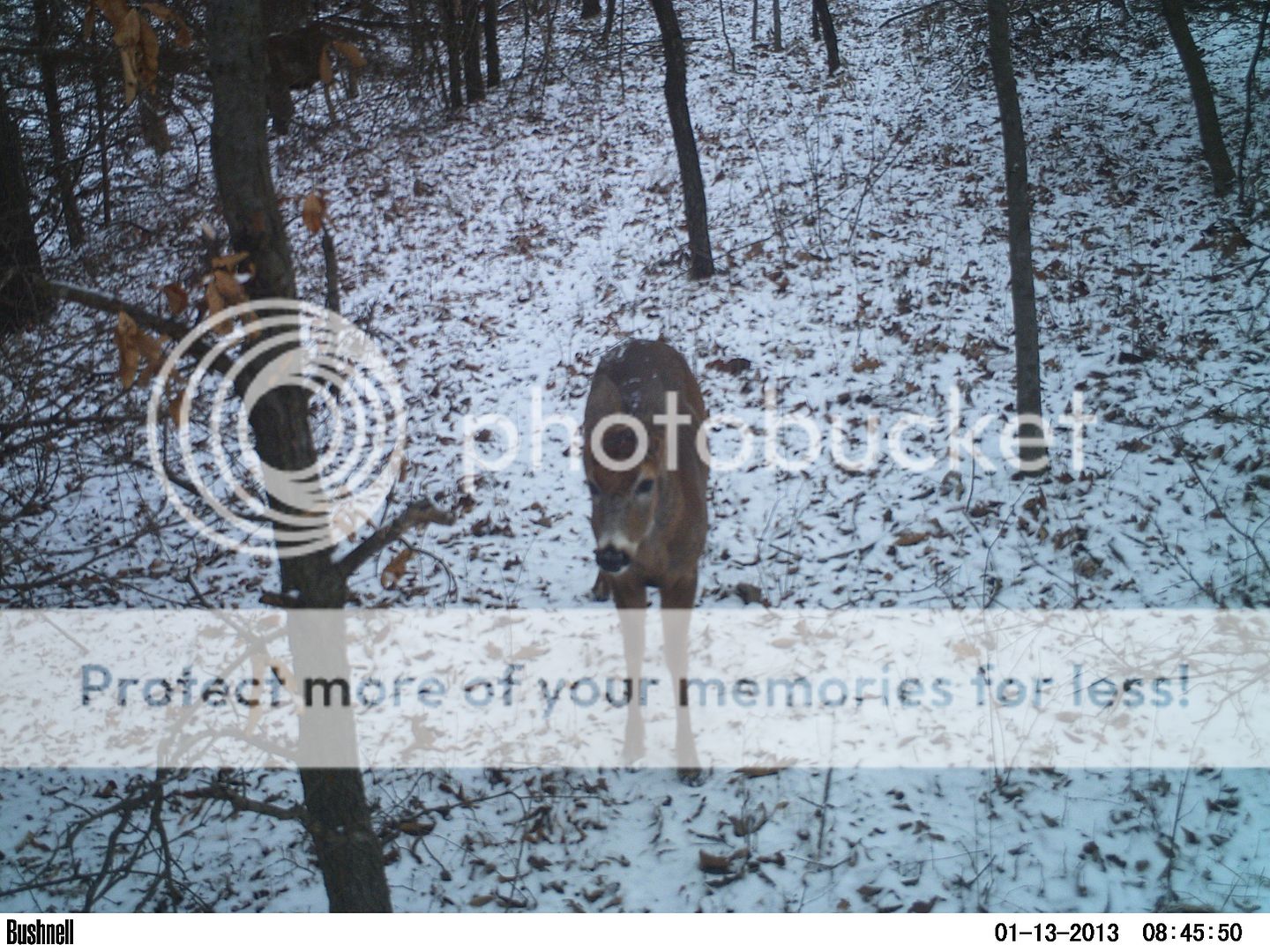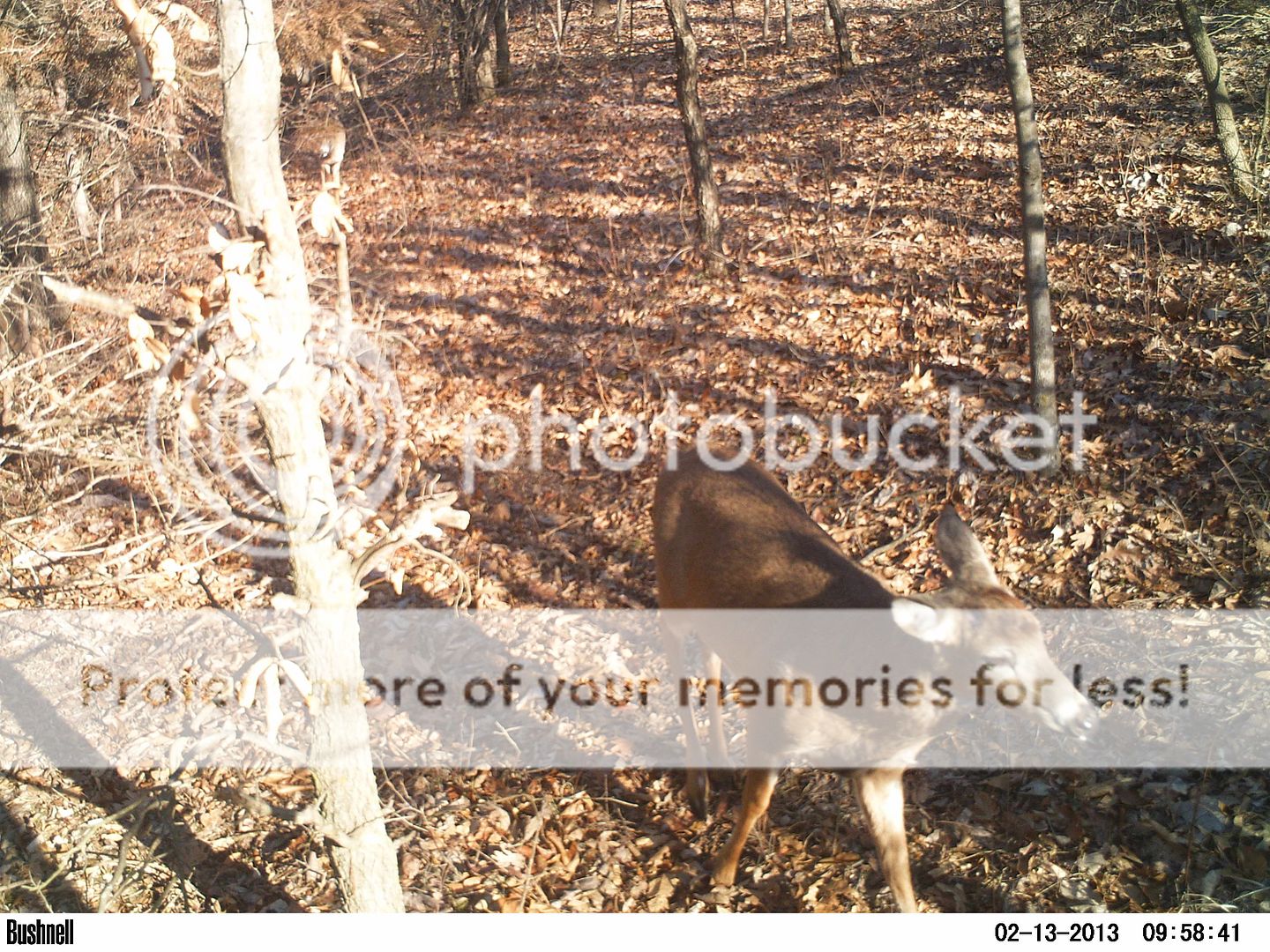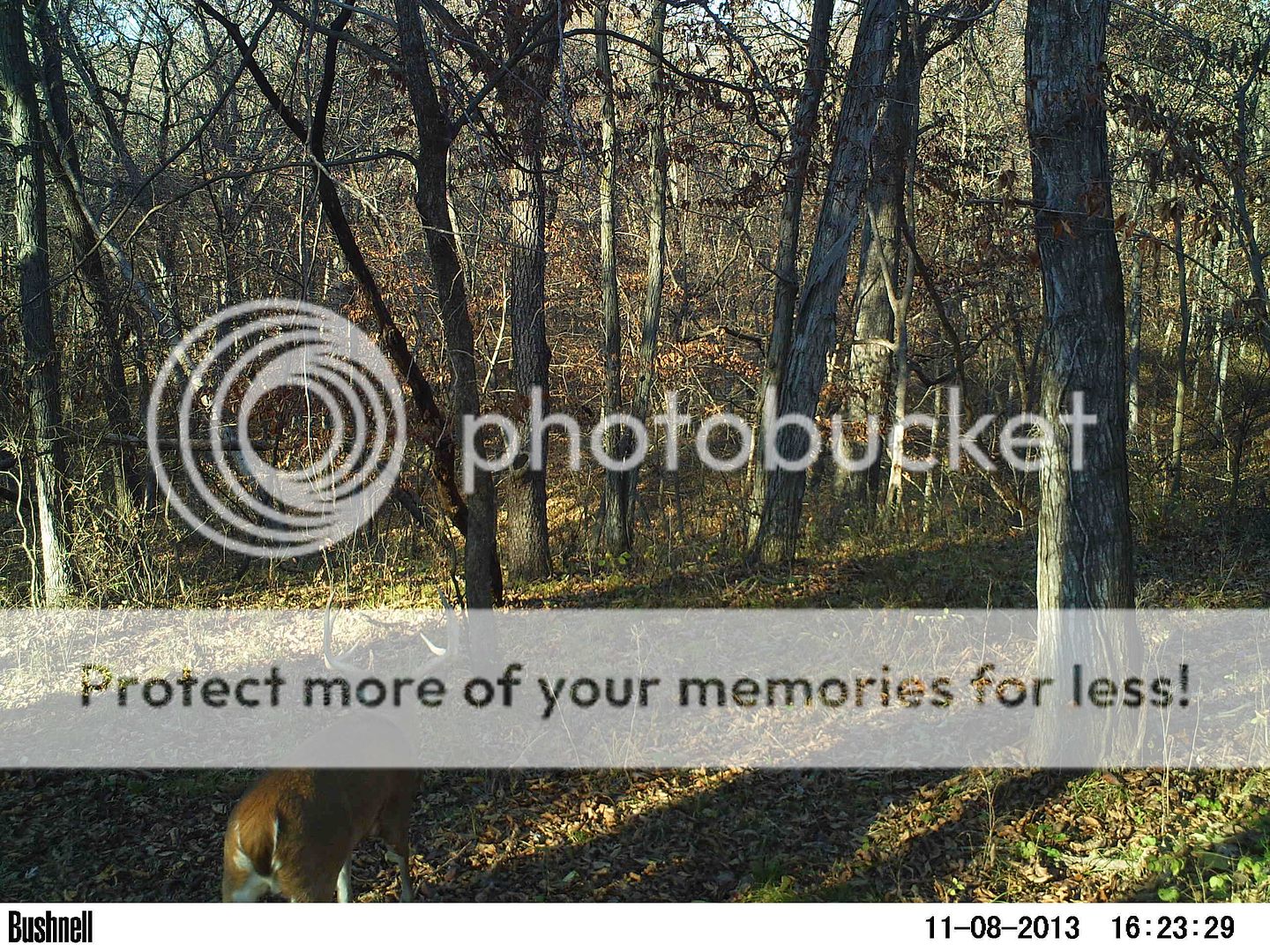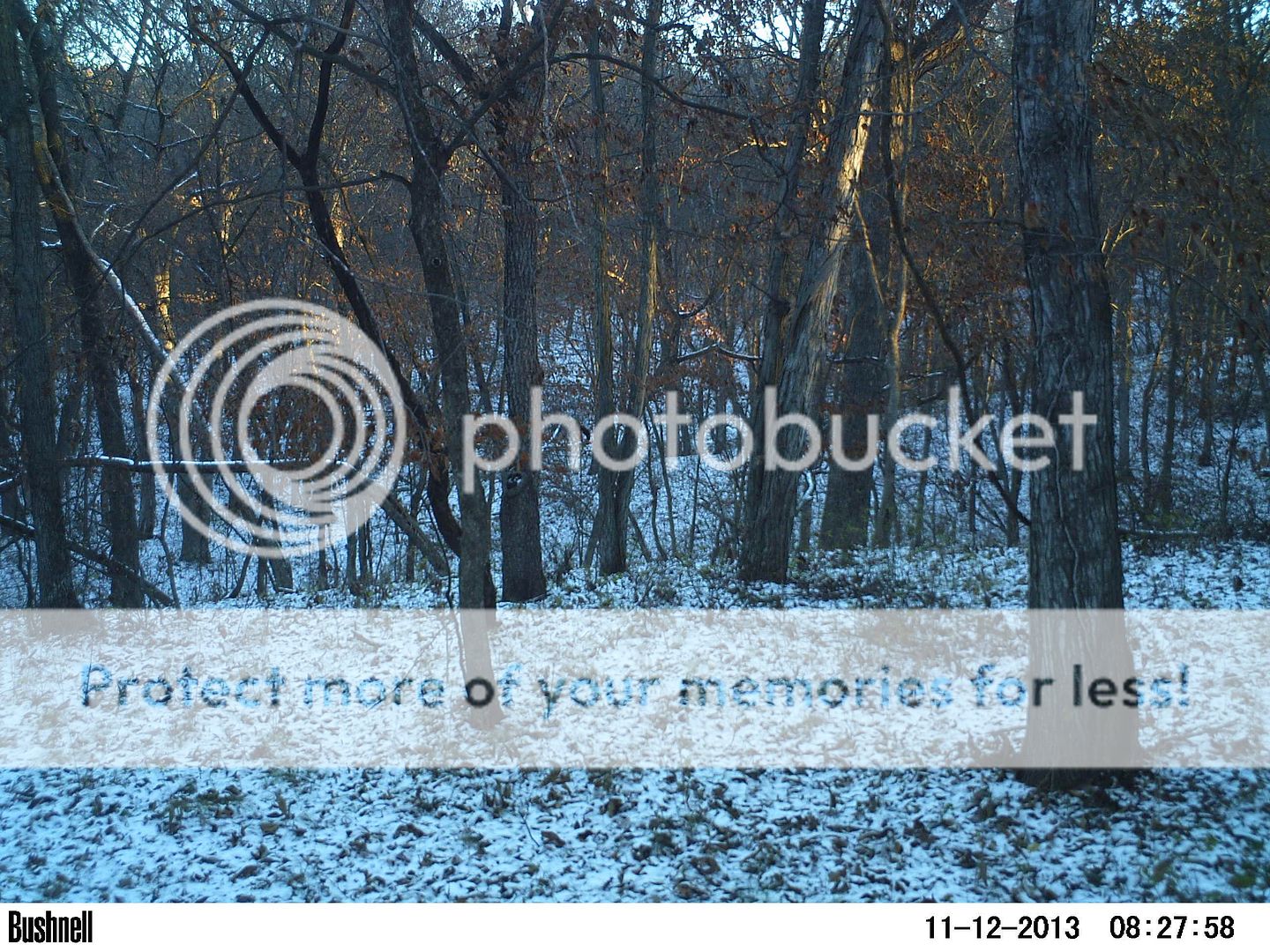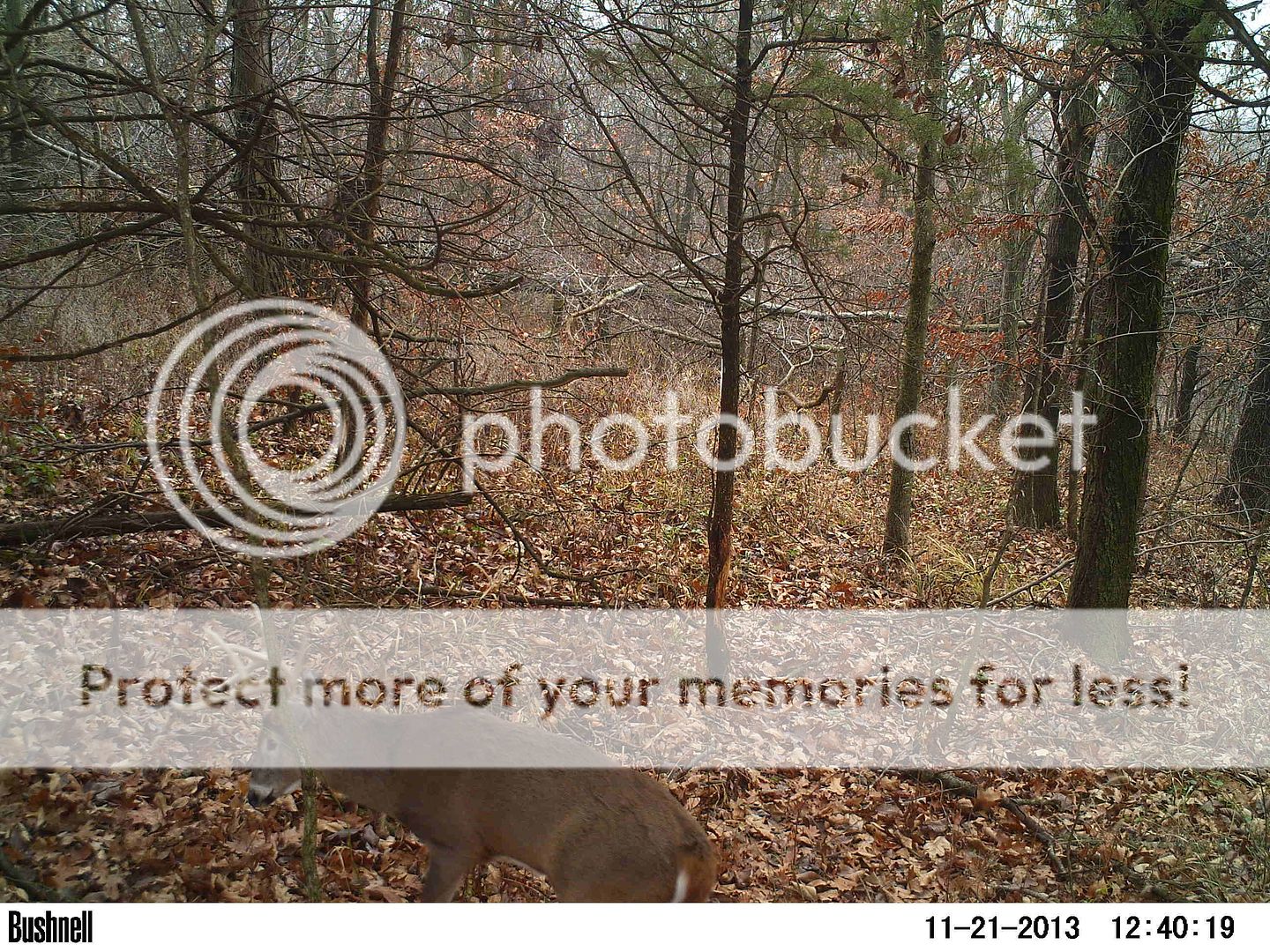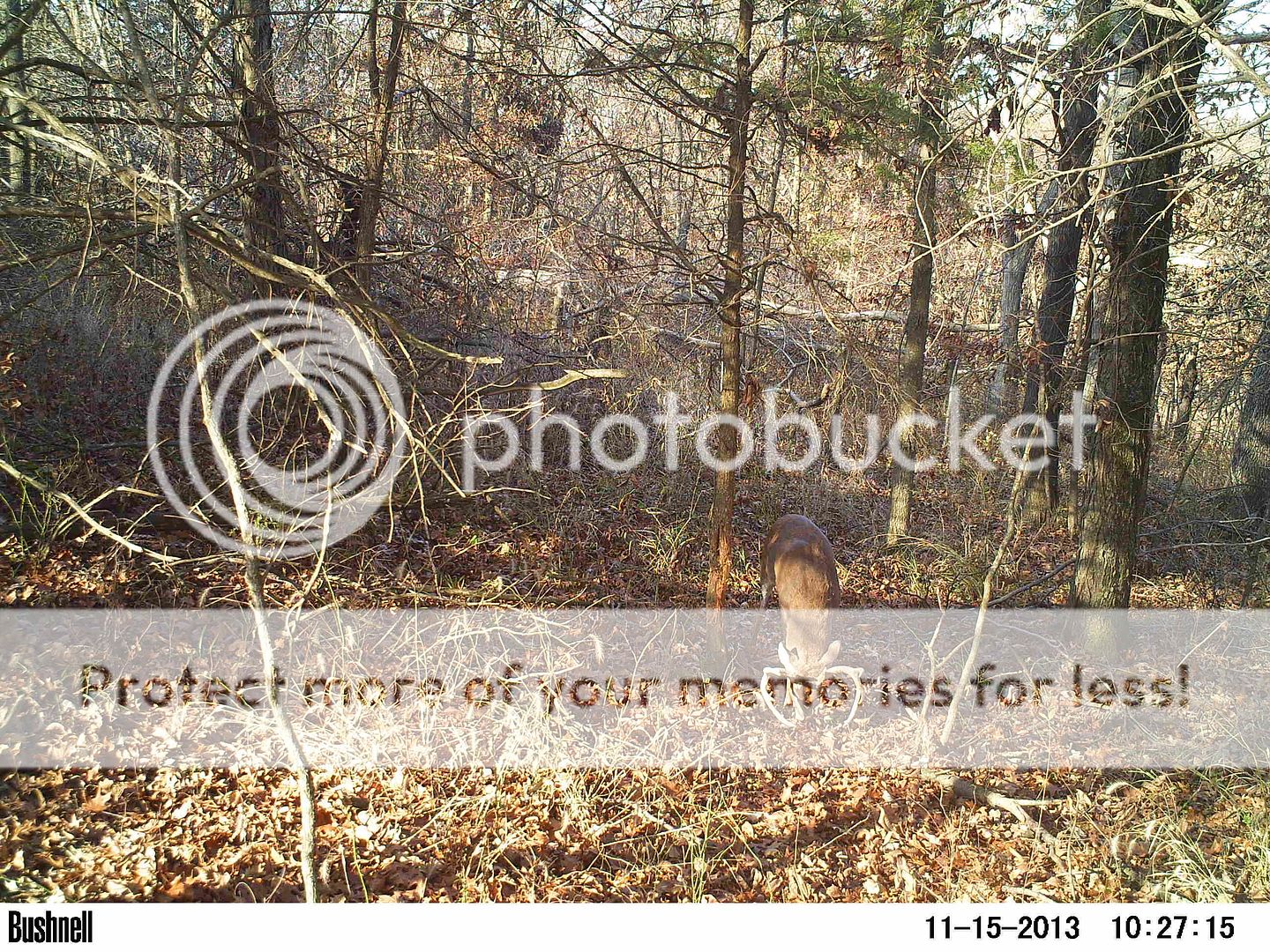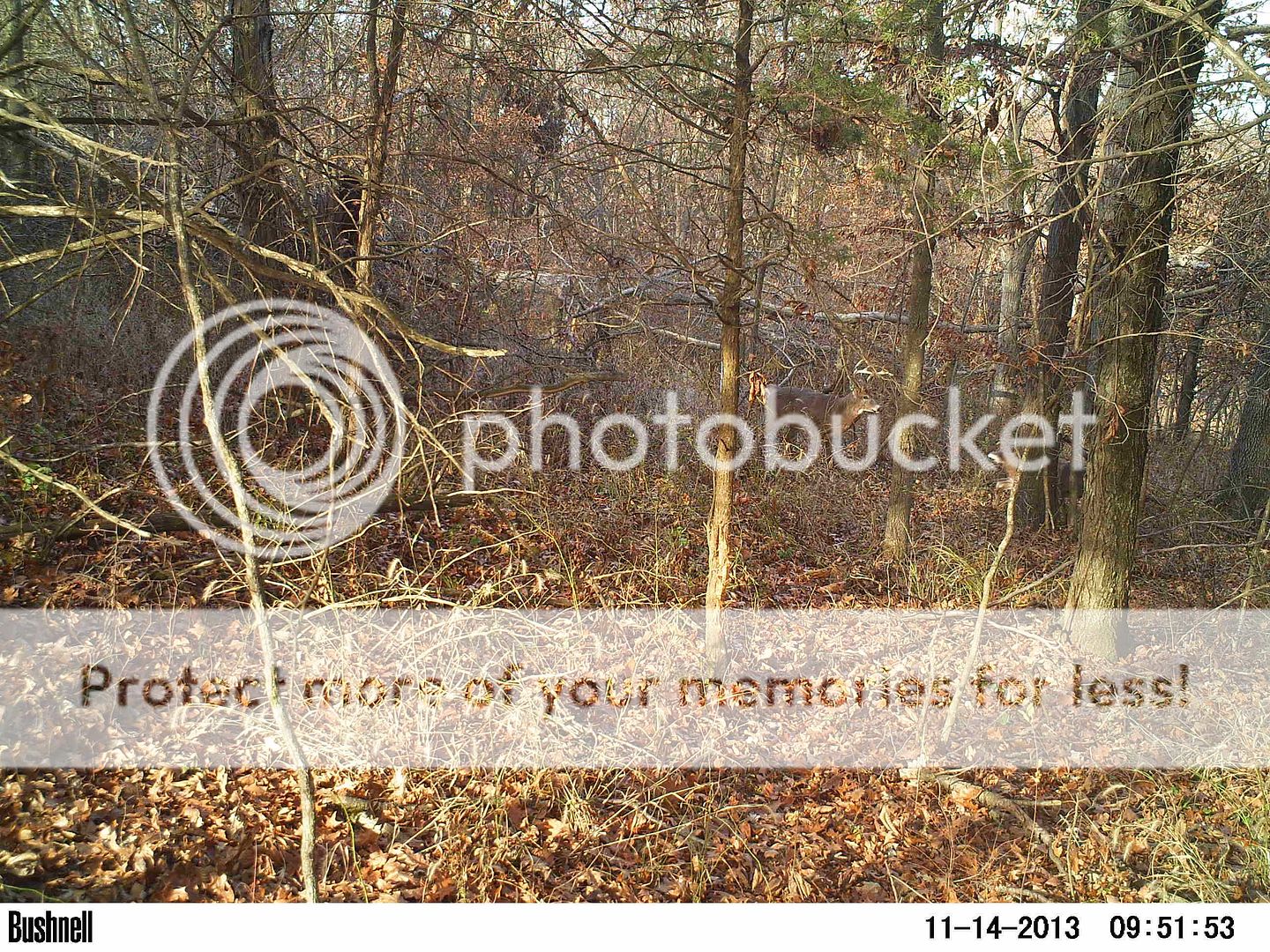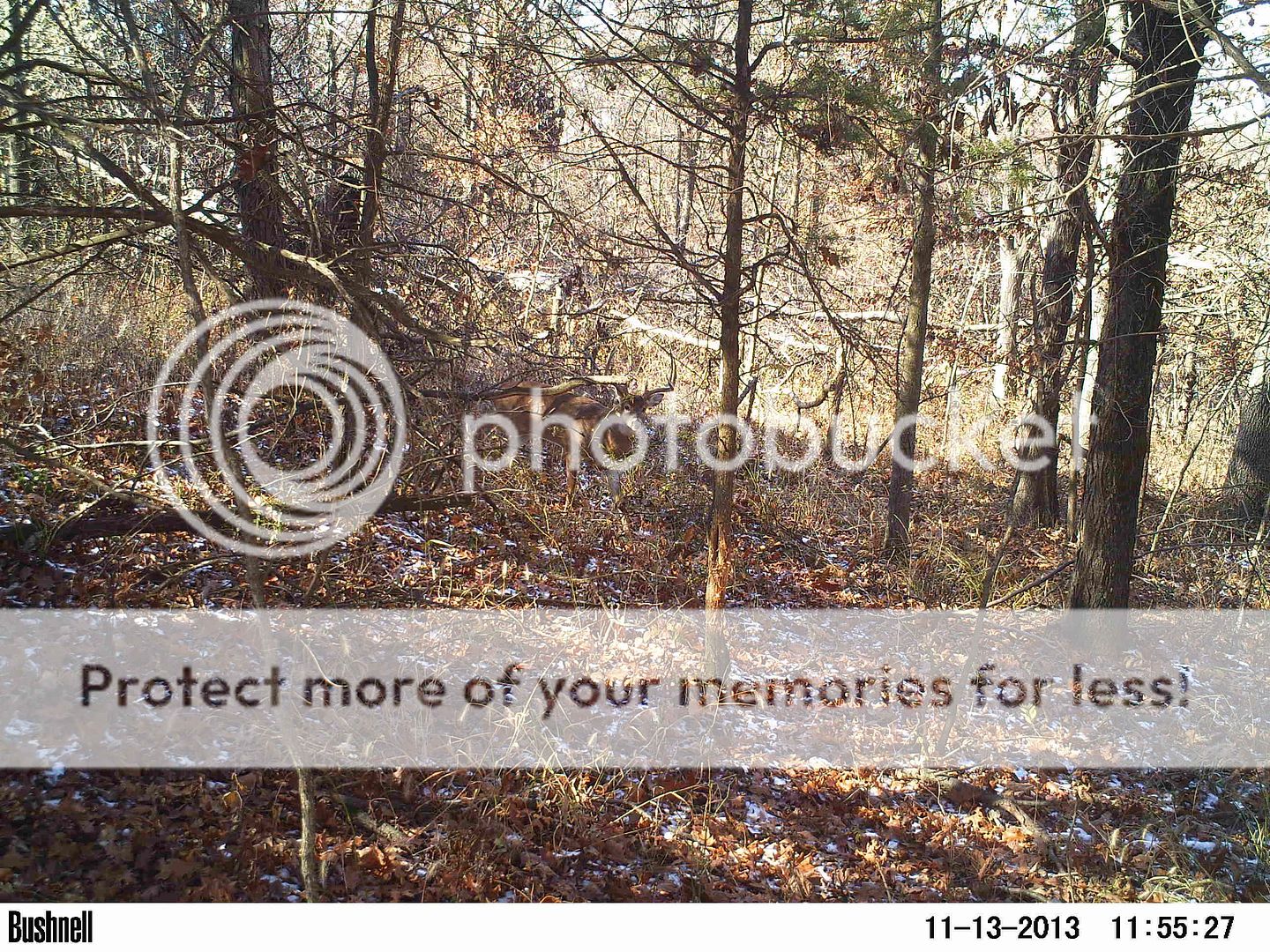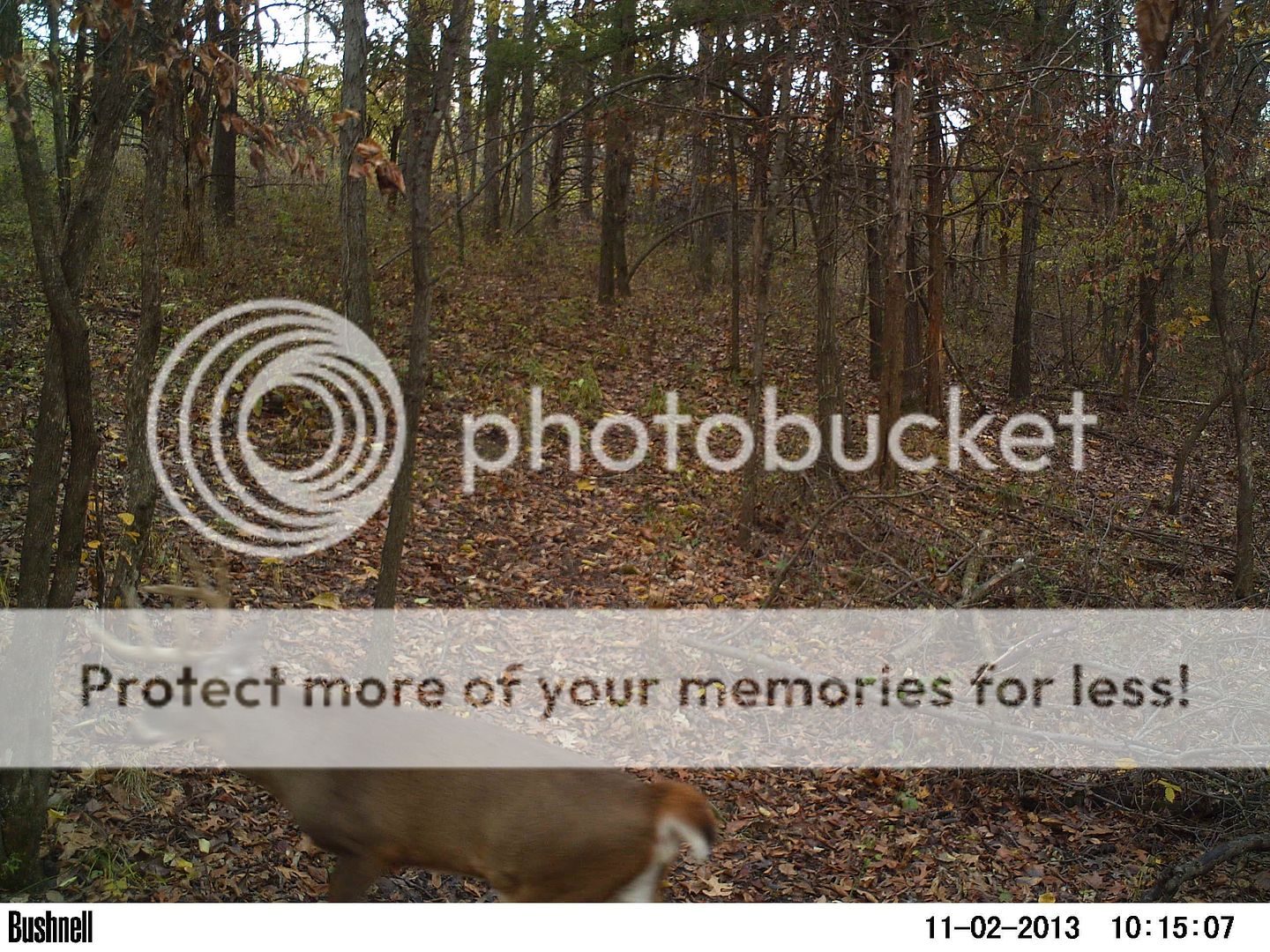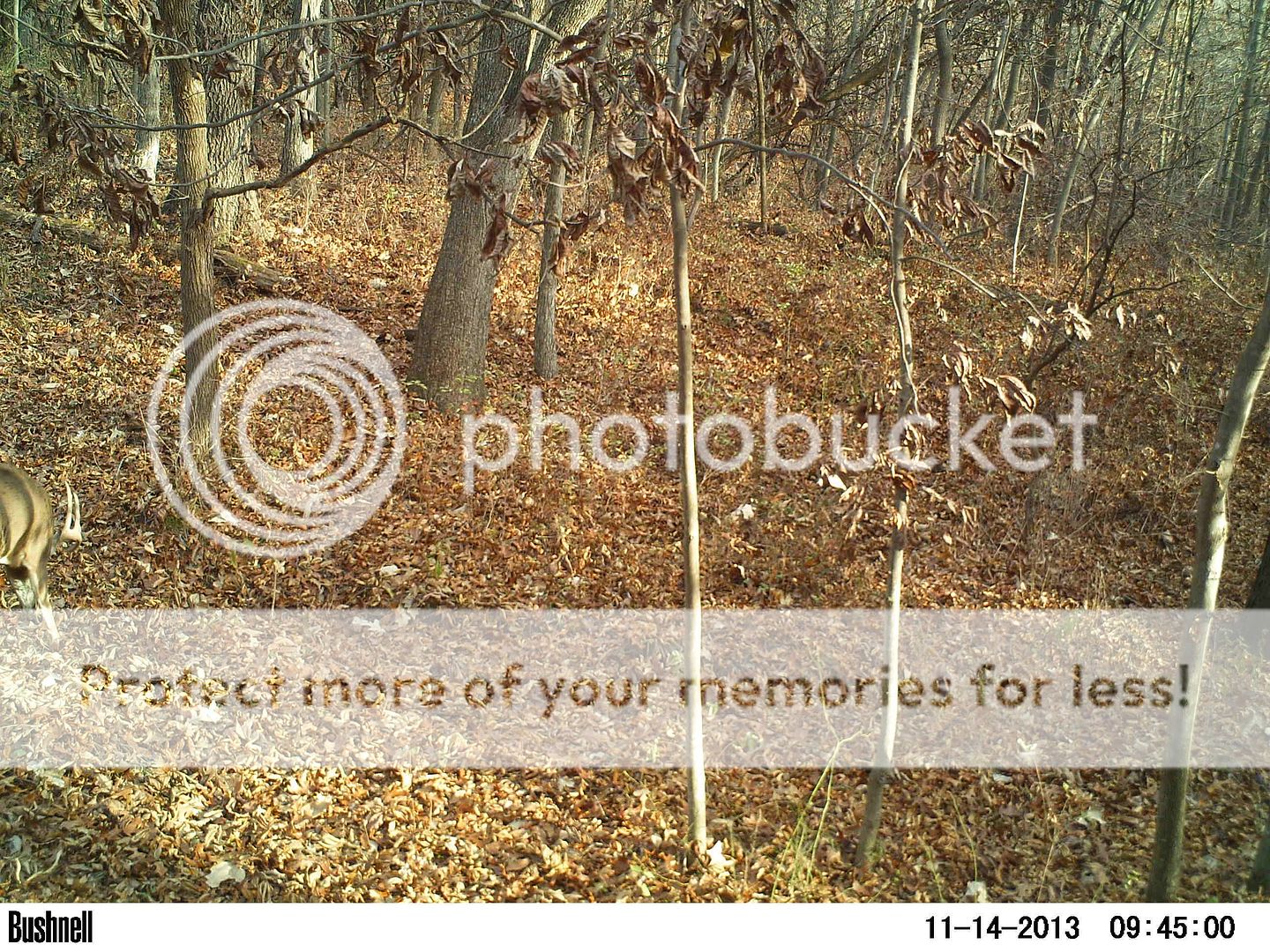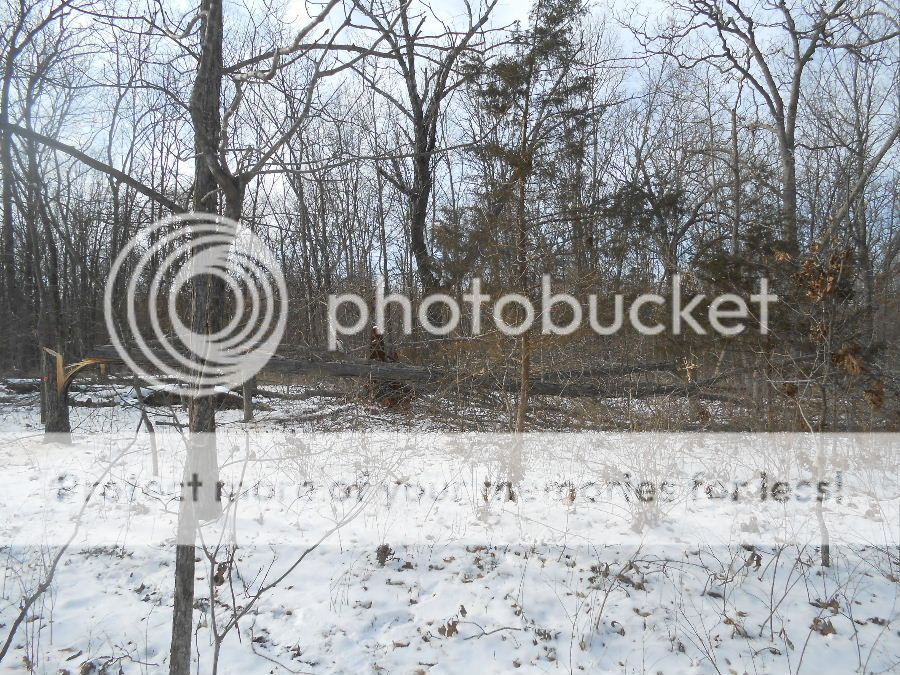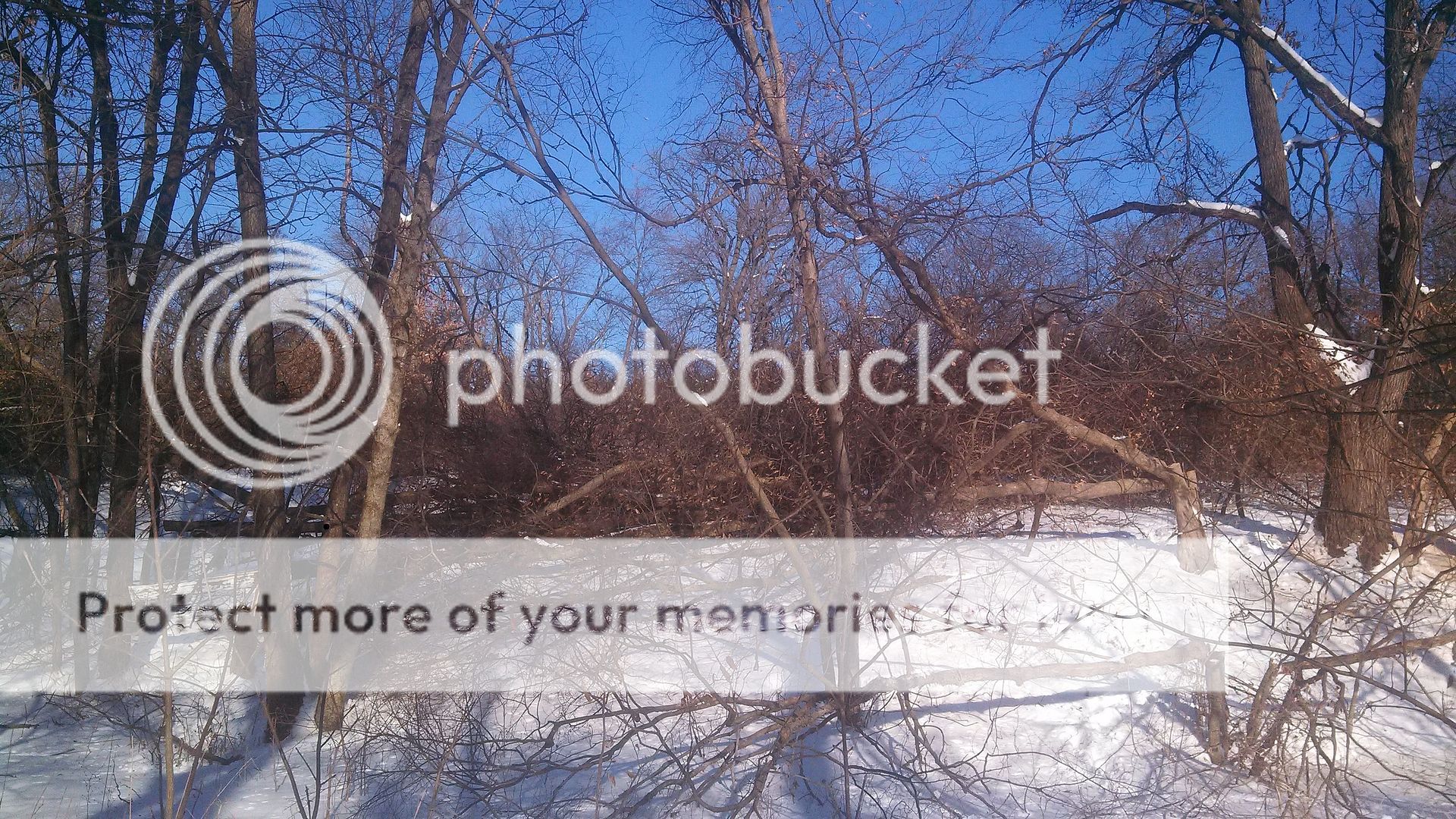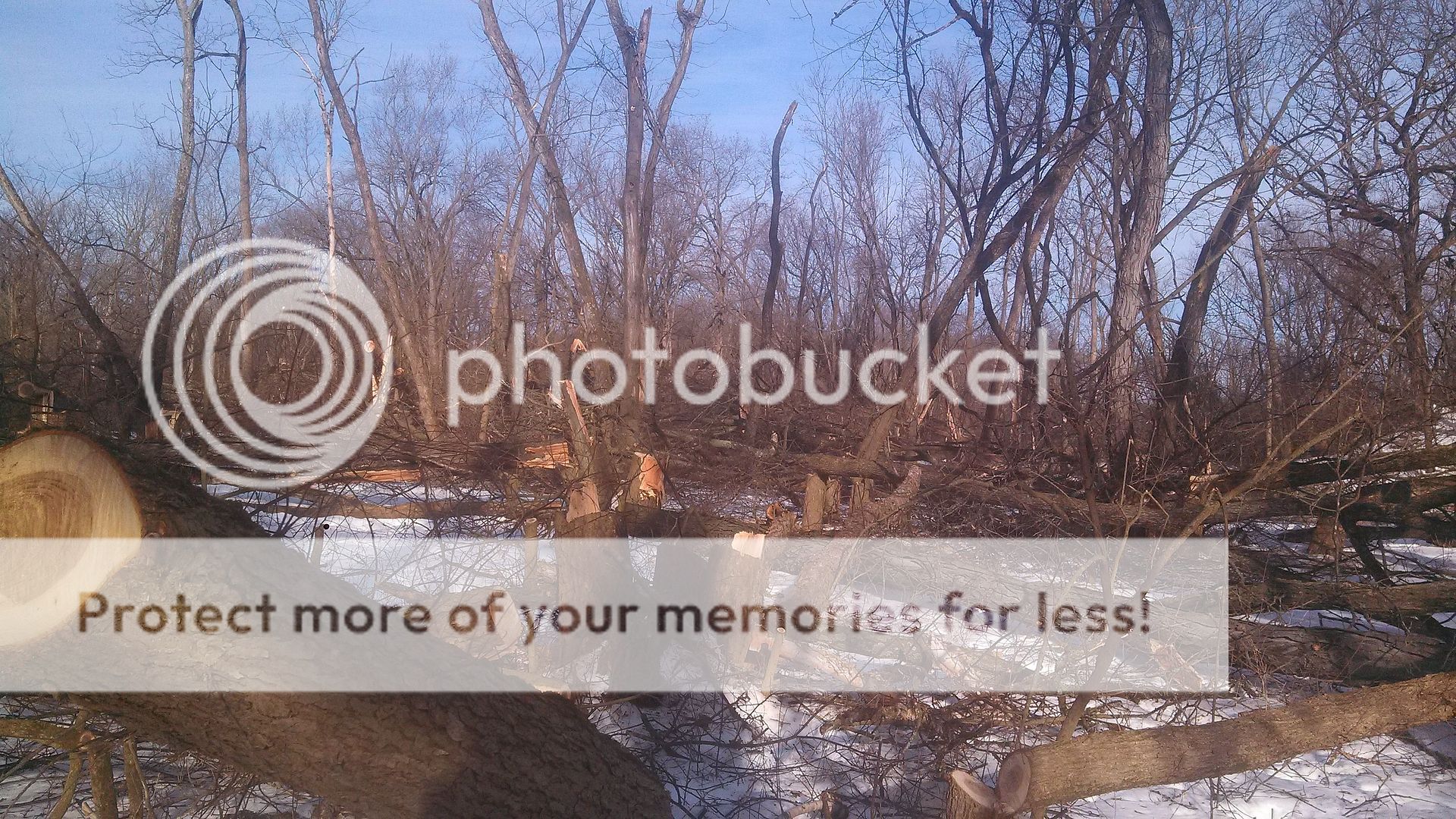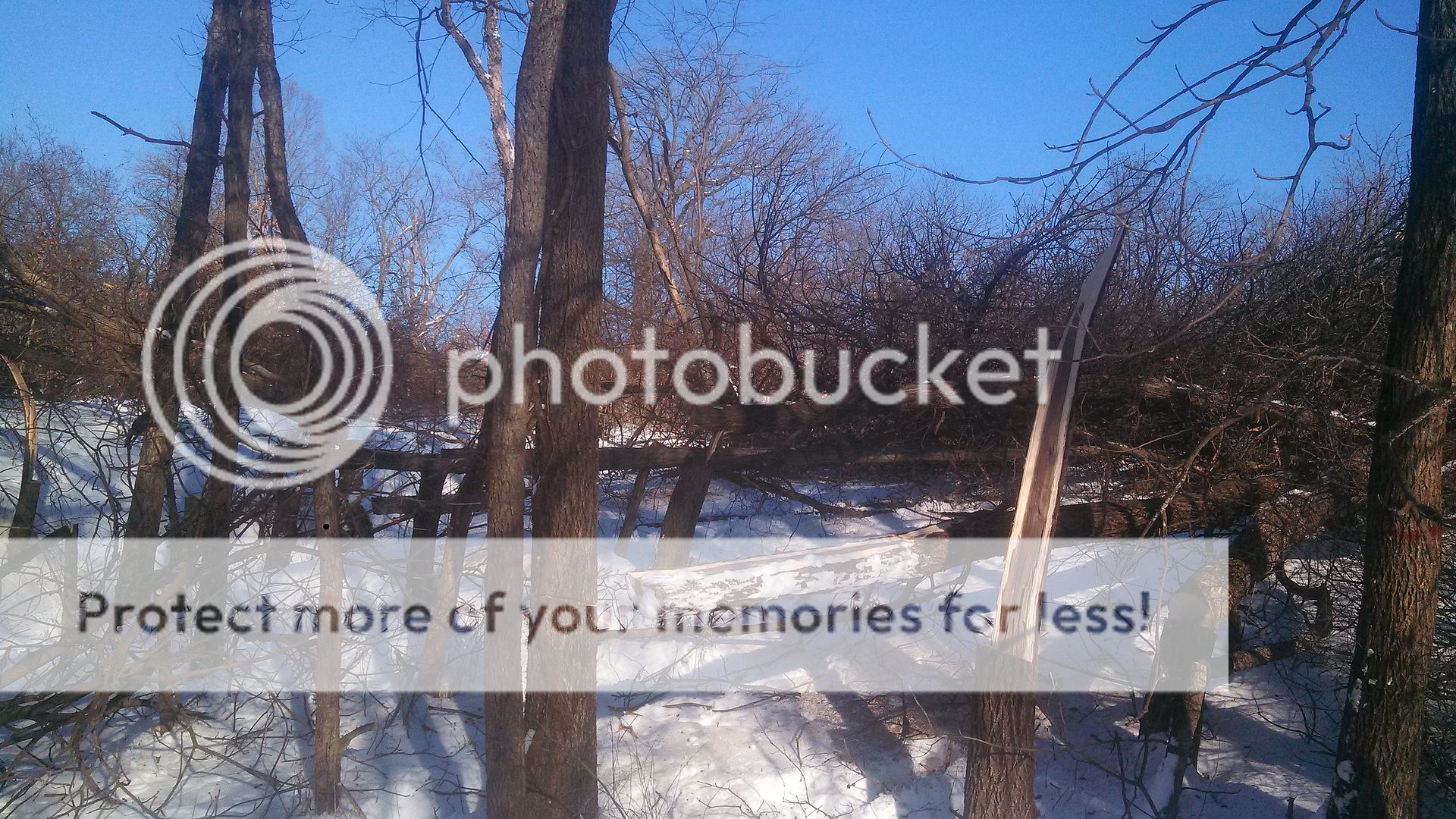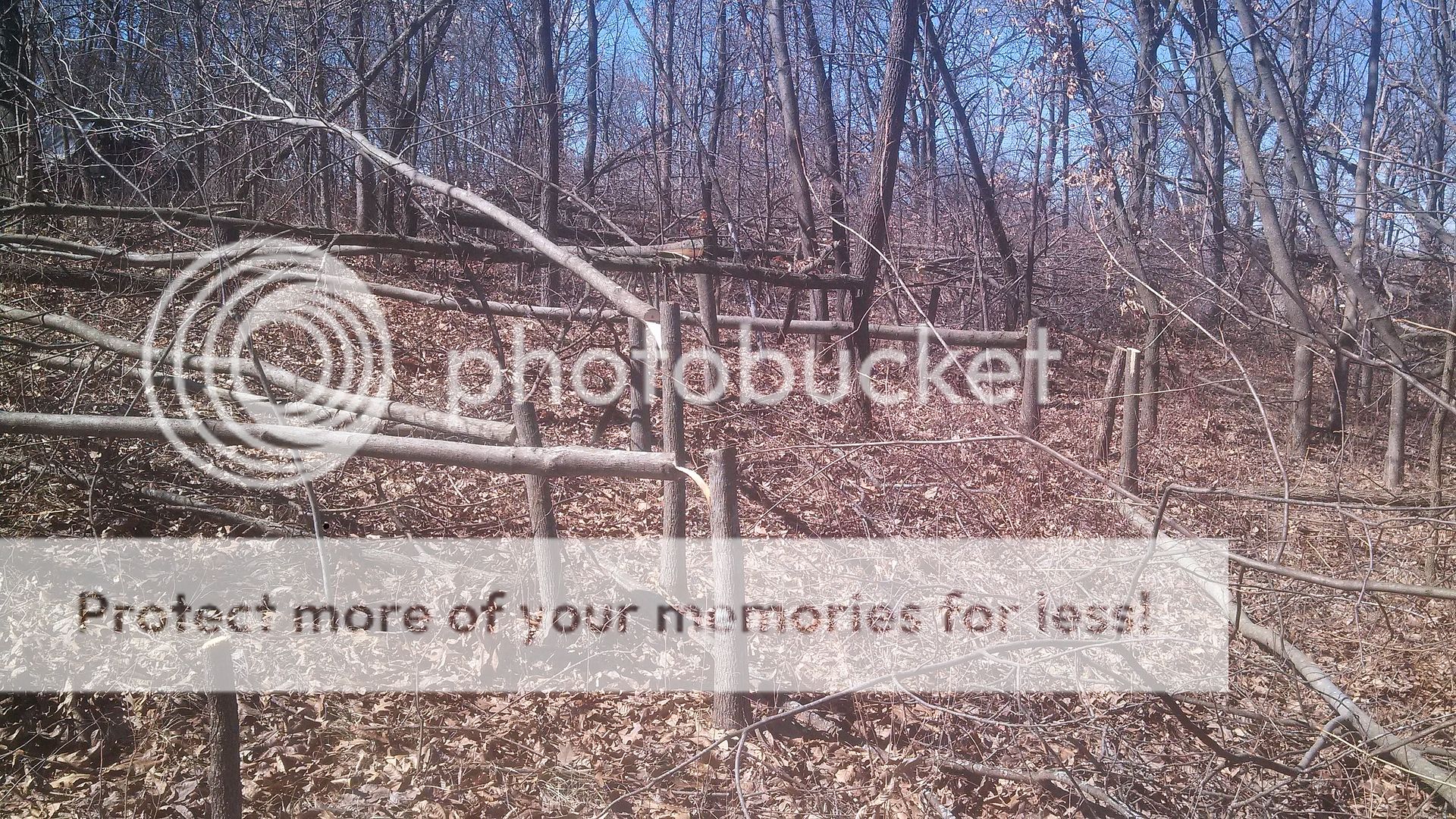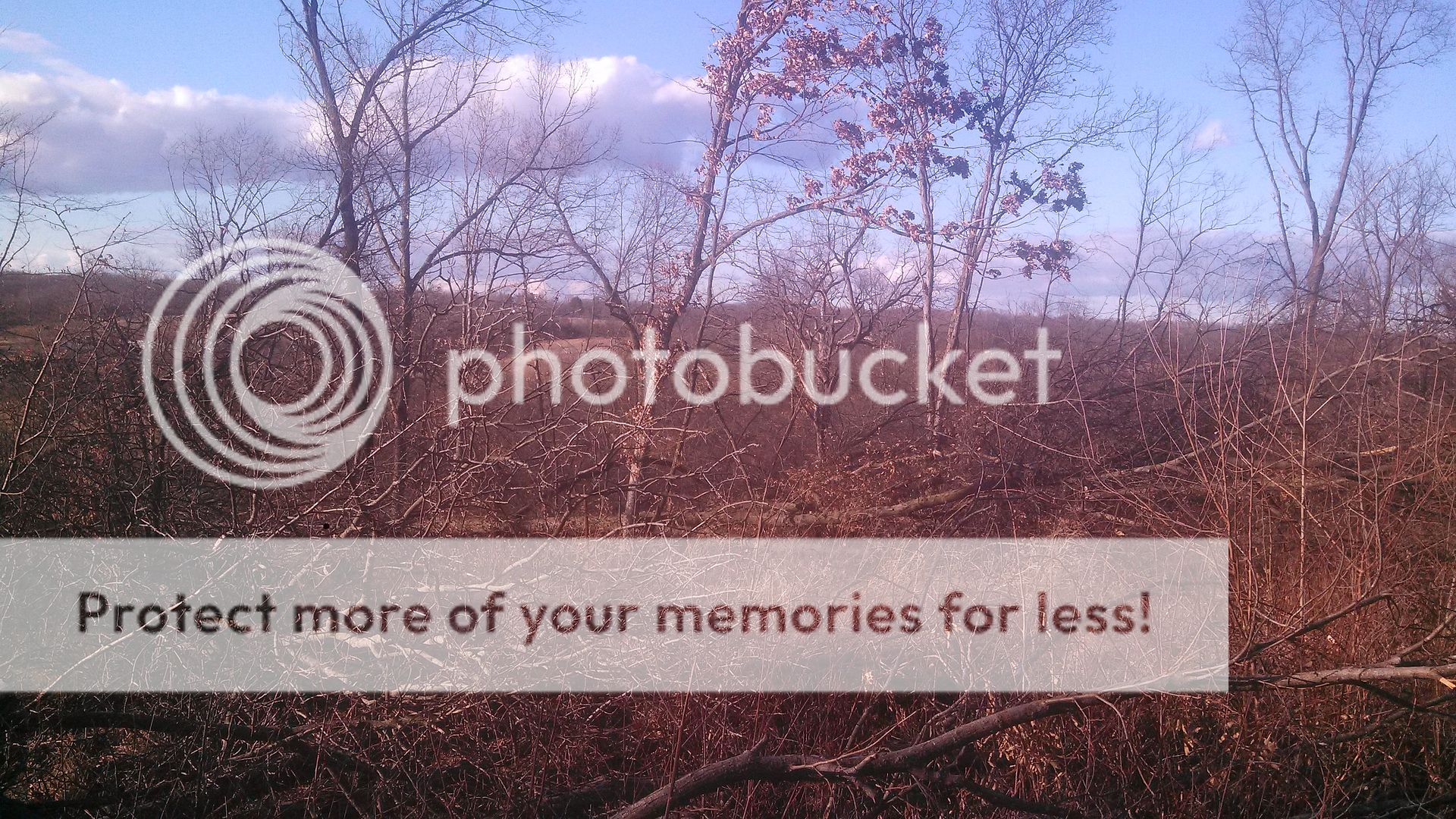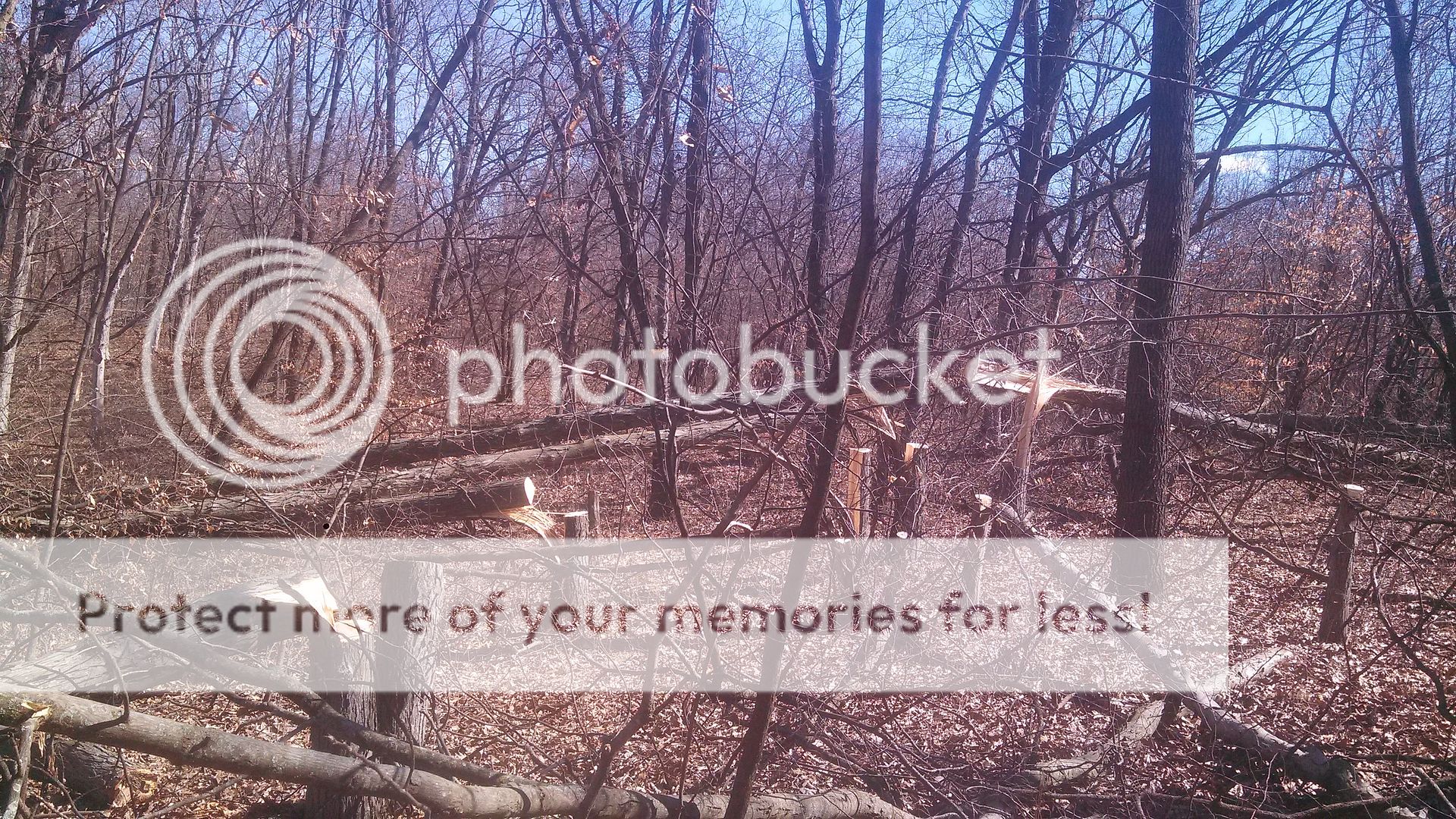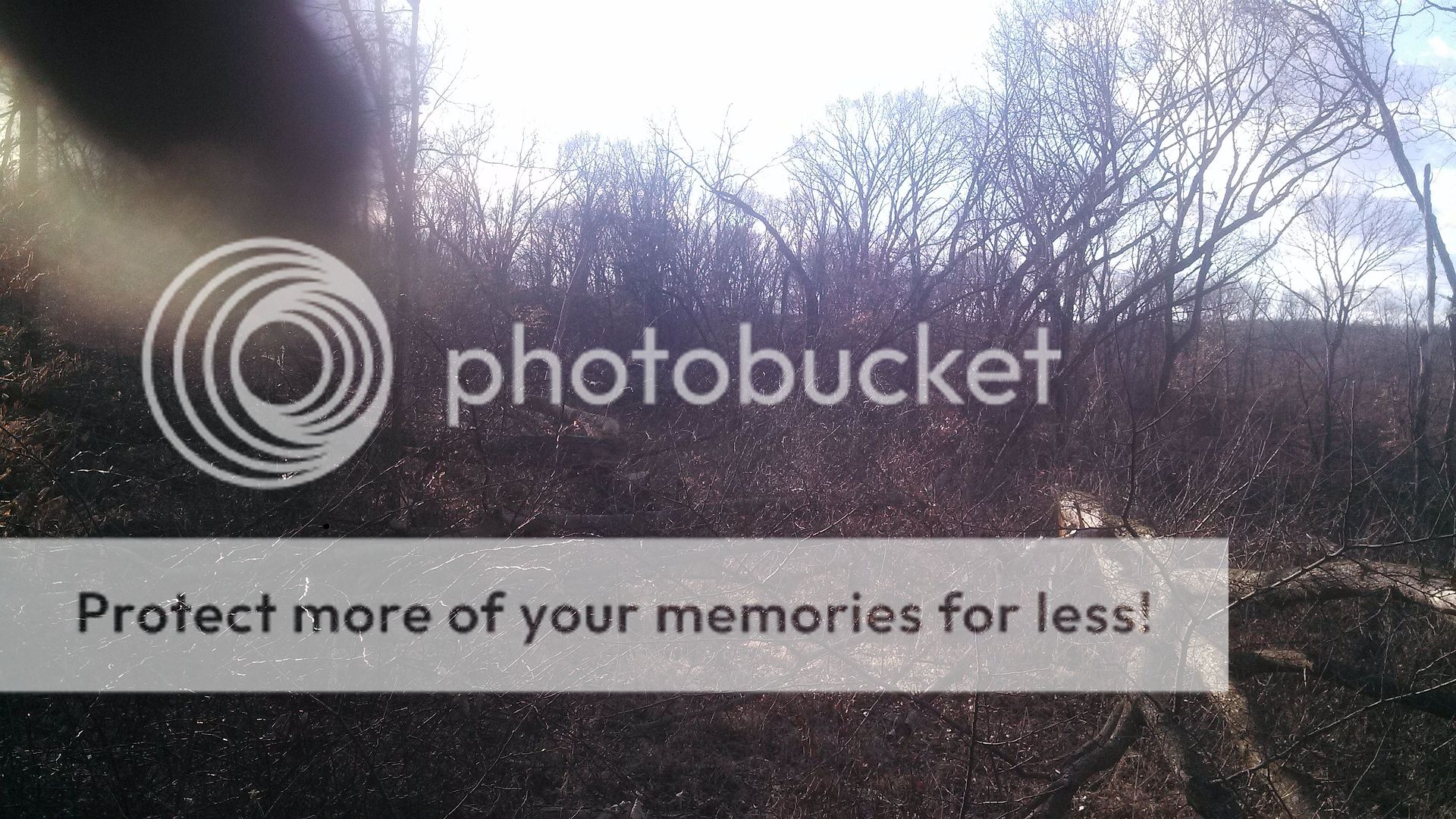Lost Arrow
Member
Funnel ideas
More then one way to skin a cat or so they say and there are plenty of ways to get deer to use one or more runways that all funnel or bottleneck down past a stand or two.
Example shows where I used hinging to block off multiple crossings downwind of a stand I hunt with S and SW winds and how i used the tractor to clear debris and create a pathway they are eager to follow

View from the stand....knocked everything down except for any oak trees and completely blocked off runways north of the stand

Several runways that lead out to a hidden ag field that gets plenty of activity but one leads in and past the stand
Before...

After


Note the time...2 hours after I was in there ramming around with the tractor, falling trees, stinking up the place with smoke and sweat...in come the "troops"...completely unphased....

and from that point on use the runway day and night

Not only does this increase hunting opportunities/success but provides accurate cam surveys as well and despite being a thick cedar/brush infested awesome bedding area...few bucks actually live there with the high number of does present. Those that do, show up regularly in this funnel

This allows us the opportunity to begin at inventory and age bucks that do call this timber home

When given the opportunity, most mature bucks in my area will take up residence in the native grass fields and few actually inhabit the timber

But by late October the "prairie dwellers" start showing up where the ladies live...

Combining funnels and cams helps me know for a fact where deer of various sex and age class live...if I only had cams here in the fall I would assume these bucks actually lived here

Buck activity will continue to pick up thru November and does will actually become scare in their own bedding area

Keep in mind you can easily make or enhance a path with a chainsaw and leaf blower in places not accessible to with equipment. Pile brush along the sides, leave the occasional small tree/shrub for scrapes and then get a stand set up for easy ambush along the cleared path or at the bottleneck

Only a few days ago I use the tractor and loader once again to clear out a spot to put up a ladder stand only this time i climbed in the stand a few hours later....7 does and fawns walked by using the path

One won't be back...

Obviously "tearing things up" is not all that alarming to these deer and in each case they were completely unaffected by any work done, even within a few hours of doing it. Whitetails are adaptable and they prefer the easy path. especially rutting bucks in search of does during the rut...take advantage of this fact to fine tune your hunting strategies on your farm or hunting property and get some funnels, bottlenecks and pathways in place...

More then one way to skin a cat or so they say and there are plenty of ways to get deer to use one or more runways that all funnel or bottleneck down past a stand or two.
Example shows where I used hinging to block off multiple crossings downwind of a stand I hunt with S and SW winds and how i used the tractor to clear debris and create a pathway they are eager to follow

View from the stand....knocked everything down except for any oak trees and completely blocked off runways north of the stand

Several runways that lead out to a hidden ag field that gets plenty of activity but one leads in and past the stand
Before...

After


Note the time...2 hours after I was in there ramming around with the tractor, falling trees, stinking up the place with smoke and sweat...in come the "troops"...completely unphased....

and from that point on use the runway day and night

Not only does this increase hunting opportunities/success but provides accurate cam surveys as well and despite being a thick cedar/brush infested awesome bedding area...few bucks actually live there with the high number of does present. Those that do, show up regularly in this funnel

This allows us the opportunity to begin at inventory and age bucks that do call this timber home

When given the opportunity, most mature bucks in my area will take up residence in the native grass fields and few actually inhabit the timber

But by late October the "prairie dwellers" start showing up where the ladies live...

Combining funnels and cams helps me know for a fact where deer of various sex and age class live...if I only had cams here in the fall I would assume these bucks actually lived here

Buck activity will continue to pick up thru November and does will actually become scare in their own bedding area

Keep in mind you can easily make or enhance a path with a chainsaw and leaf blower in places not accessible to with equipment. Pile brush along the sides, leave the occasional small tree/shrub for scrapes and then get a stand set up for easy ambush along the cleared path or at the bottleneck

Only a few days ago I use the tractor and loader once again to clear out a spot to put up a ladder stand only this time i climbed in the stand a few hours later....7 does and fawns walked by using the path

One won't be back...

Obviously "tearing things up" is not all that alarming to these deer and in each case they were completely unaffected by any work done, even within a few hours of doing it. Whitetails are adaptable and they prefer the easy path. especially rutting bucks in search of does during the rut...take advantage of this fact to fine tune your hunting strategies on your farm or hunting property and get some funnels, bottlenecks and pathways in place...


